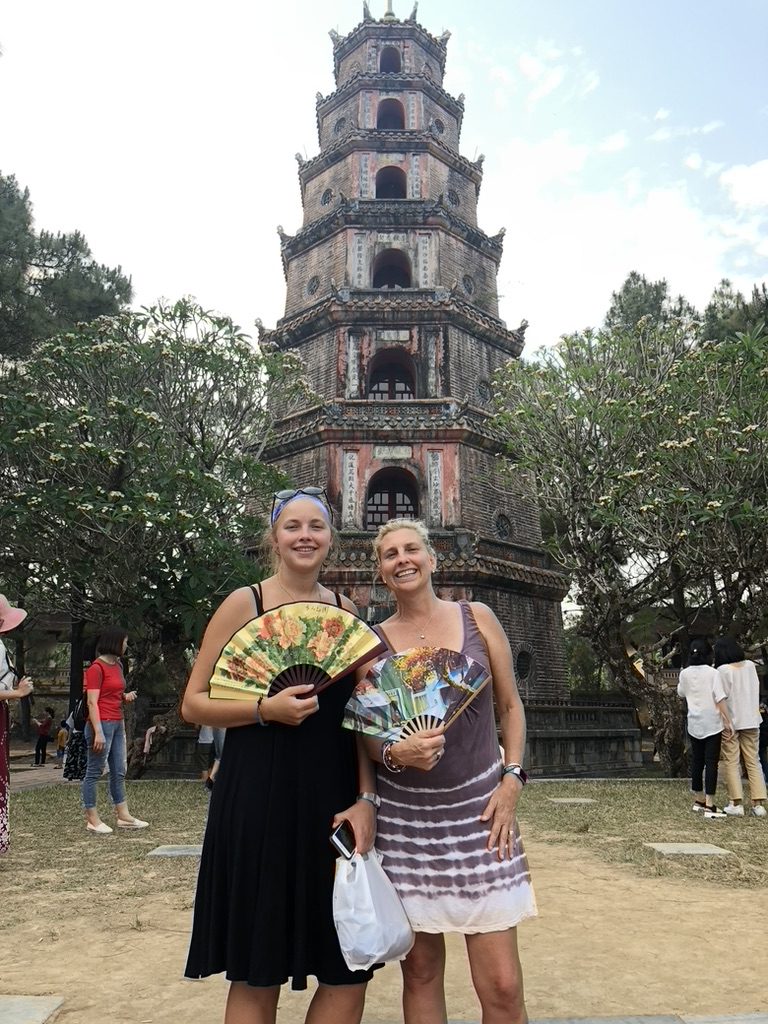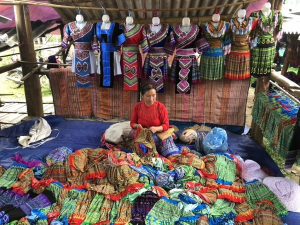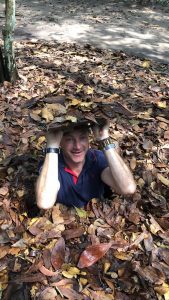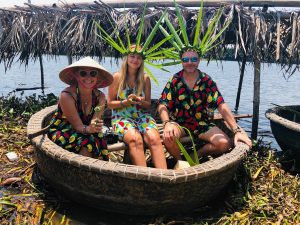🙂 Hue Festival – interesting!
🙁 Hue Festival – too many people!
Sunday, 28 April 2019 – Hanoi – Hue 38C
We had a 07h30 transfer from Hanoi to the airport after breakfast (bought water puppet replicas from te hotel as a souvenir). Such lovely staff bid us a fond farewell. Our flight was delayed by 30mins but other than that all went smoothly for the 1hr15min flight – well worth the £25 each that we paid!
Hue is worth visiting for its sprawling imperial palaces and for its culinary delights, namely Bun Bo Hue beef soup. Hue is less polluted and industrial than Hanoi or Ho Chi Minh, but also less filled with tourists than Hoi An or Ha Long Bay. We timed it to coincide with Hue Festival which an international cultural event organised in Hue every two years to honour the priceless heritages of Hue which meant theplace was a million tmes busier than usual…but after Hanoi it still seemed calm!! It was BOILING hot and humid.
Our guide called Jessica collected us from the airport and took us straight to the Tomb of Tu Duc who was one of the famous kings as the longest-reigning of the Nguyen Lang dynasty. It is located in a narrow valley, in the middle of an immense pine forest, 8 km from the centre of Hue, and sits peacefully on the eastern bank of the famous Perfume River. The tomb also served as a country residence where the emperor liked to compose poems, especially to express his faults and regrets. He liked to go there to walk around and forgot the worries of national affairs and his family problems.
After crossing Vu Khiem gate and the temple dedicated to the genie of the Mountain, Khiem and Son, you follow Lake Luu Khiem to access an imposing staircase on the left side rising towards the palace of Modesty. At the rear of the first building is a small courtyard flanked on the right by the imperial wooden theatre which is is the oldest in Vietnam. The concubines of the Emperor gave performances to entertain him. Going up the winding paved path of bricks along the shores of the lake, you arrive at the area of the tomb which is composed of a court of honour with two rows of statues. These beautiful creations include mandarins and their mounts, horses and elephants, a half-moon pond, the Stele Pavilion and the enclosure of the tomb.
Expect to be harassed by students who love to interview English speaking tourists and video tape the conversation – we gave two ‘interviews’!!
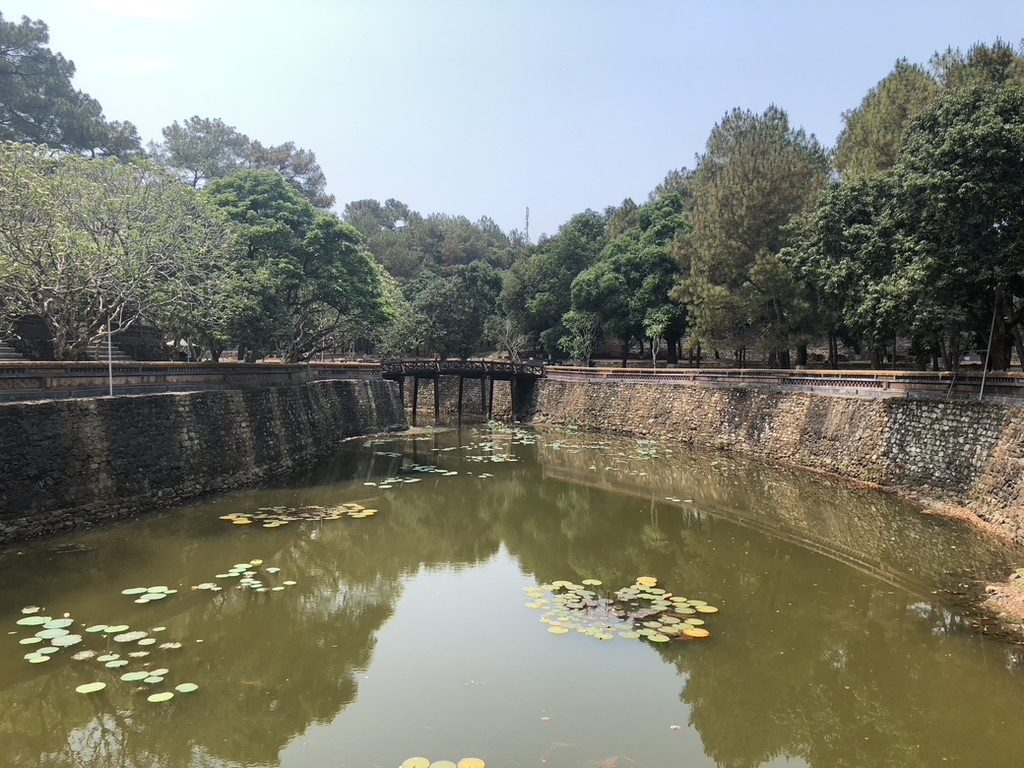
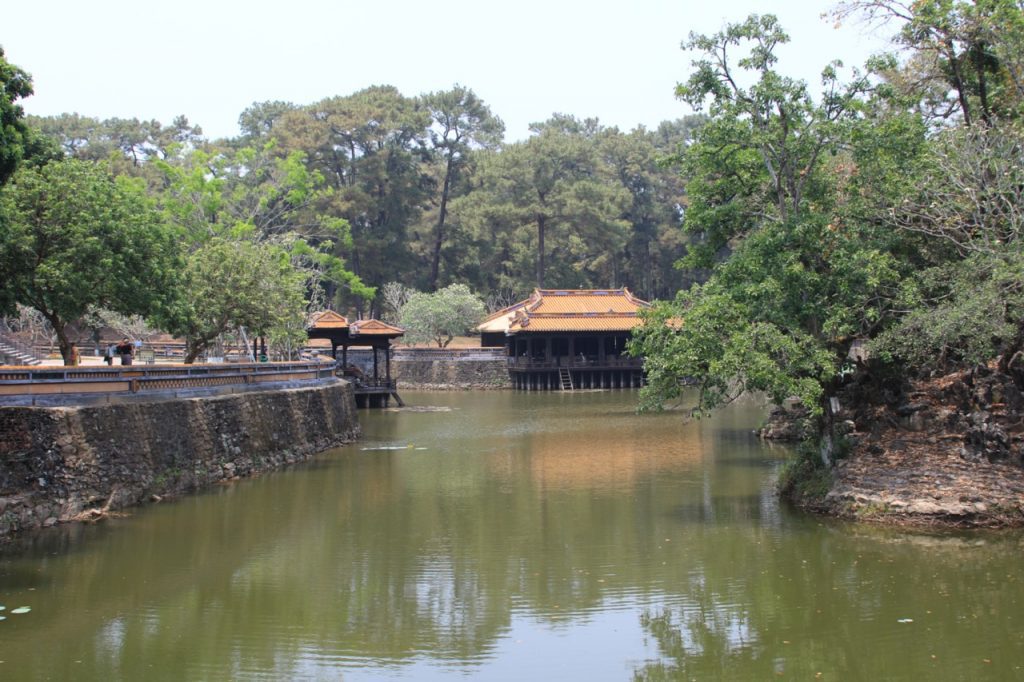
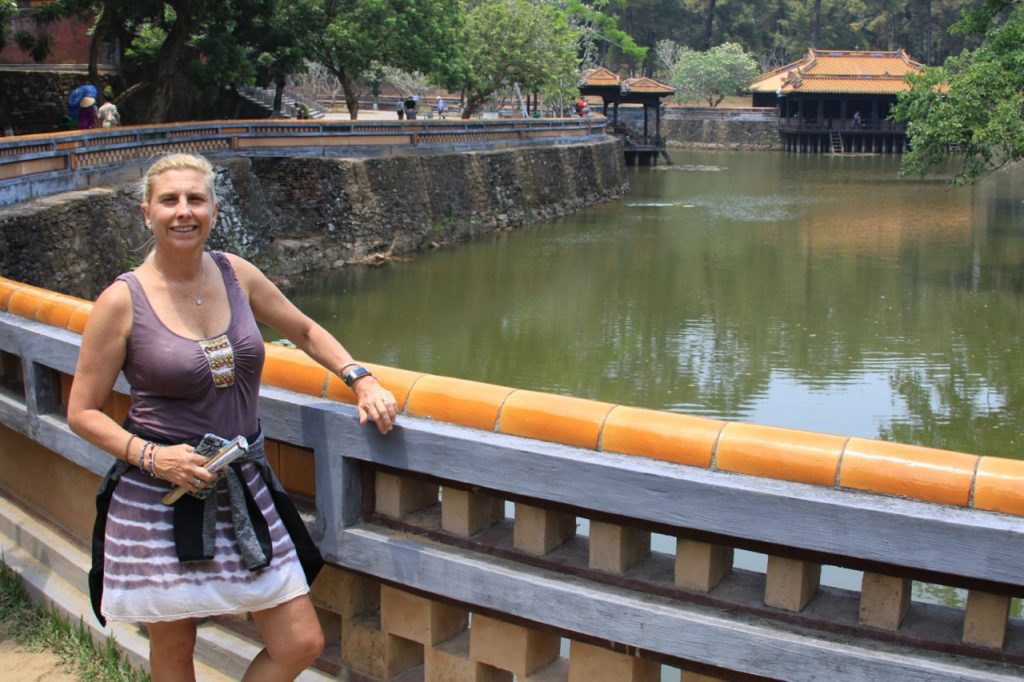
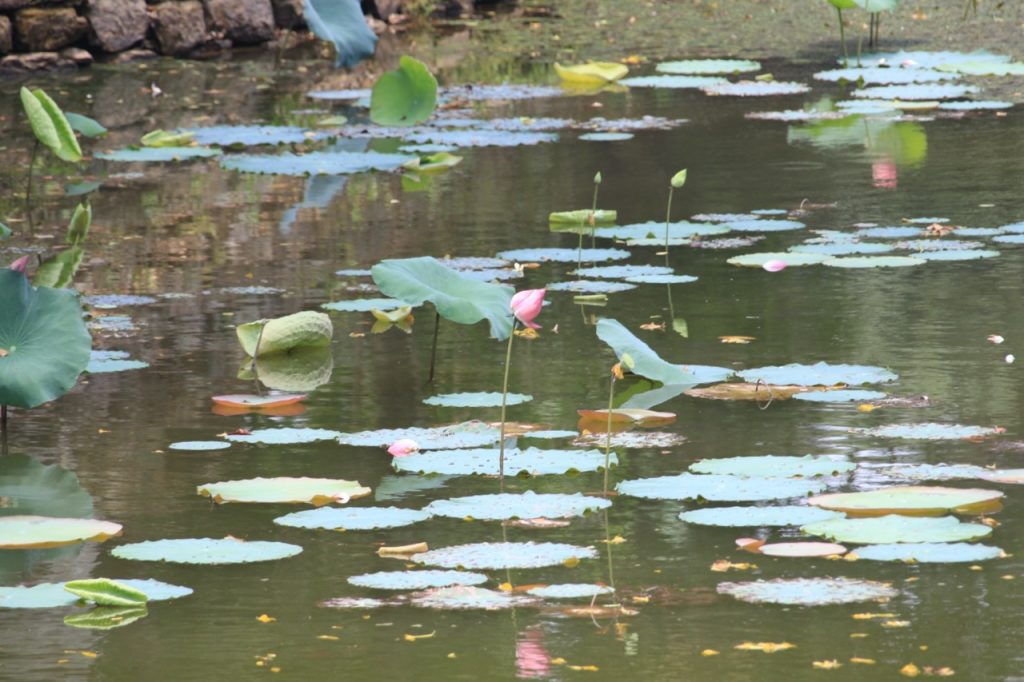
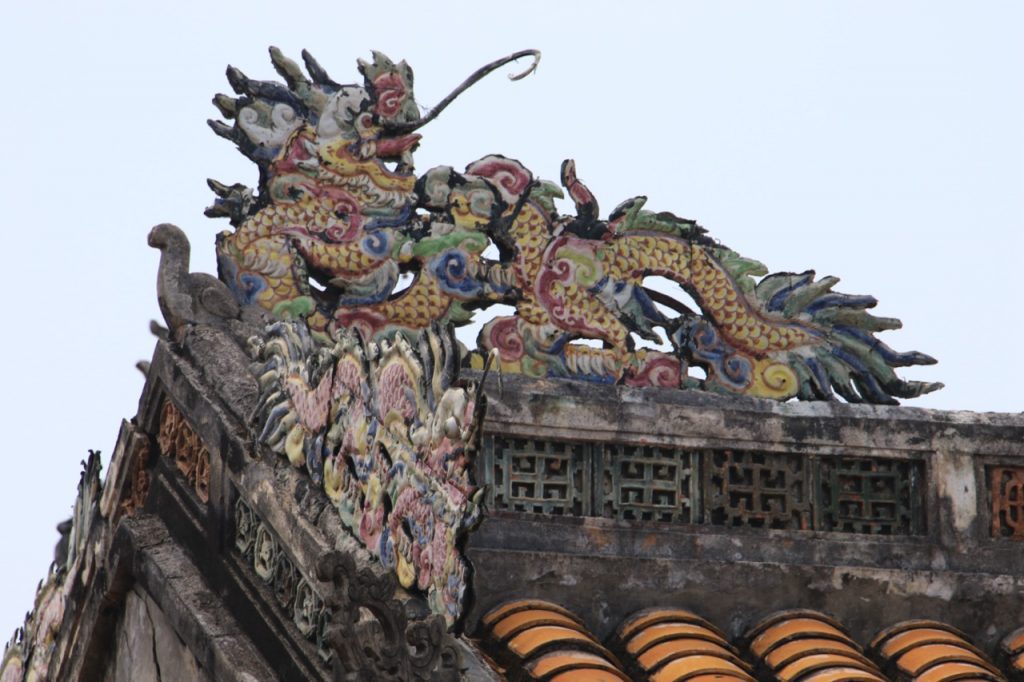
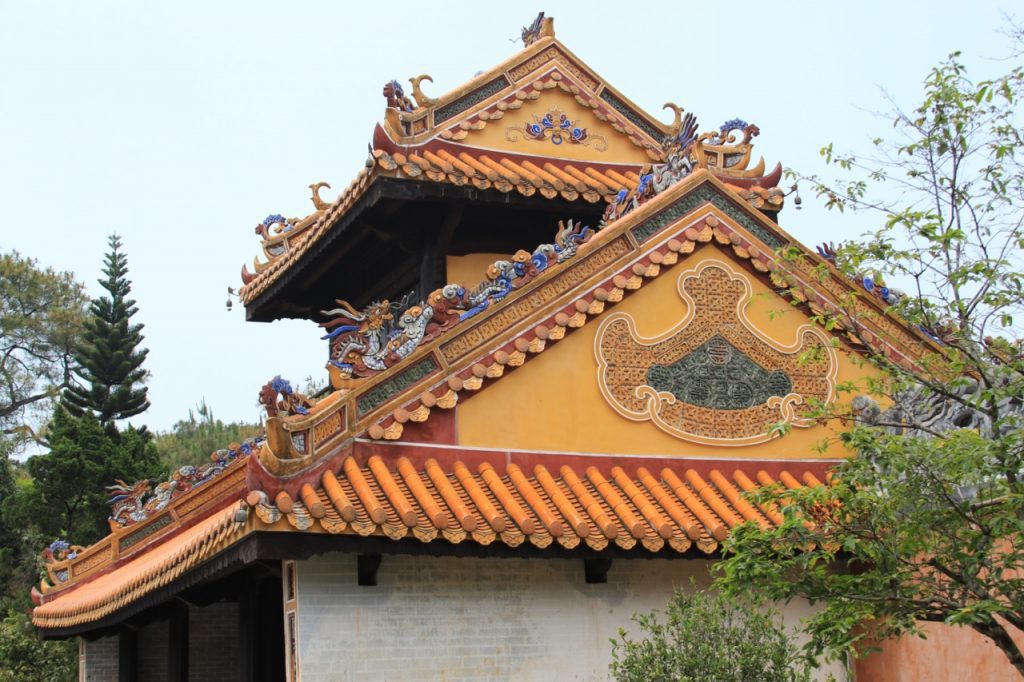
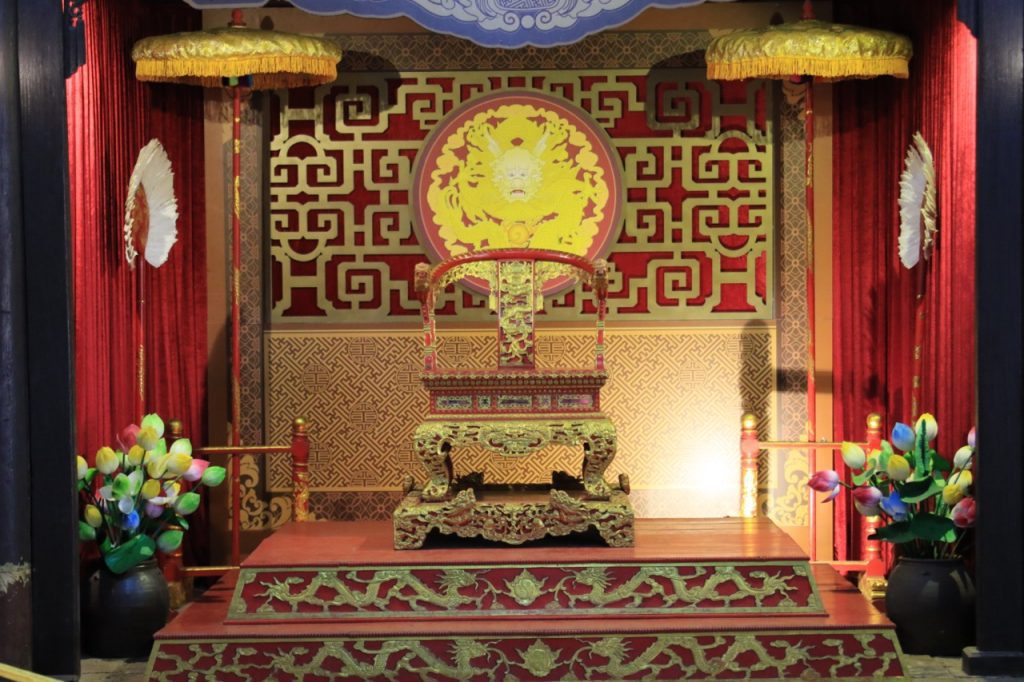
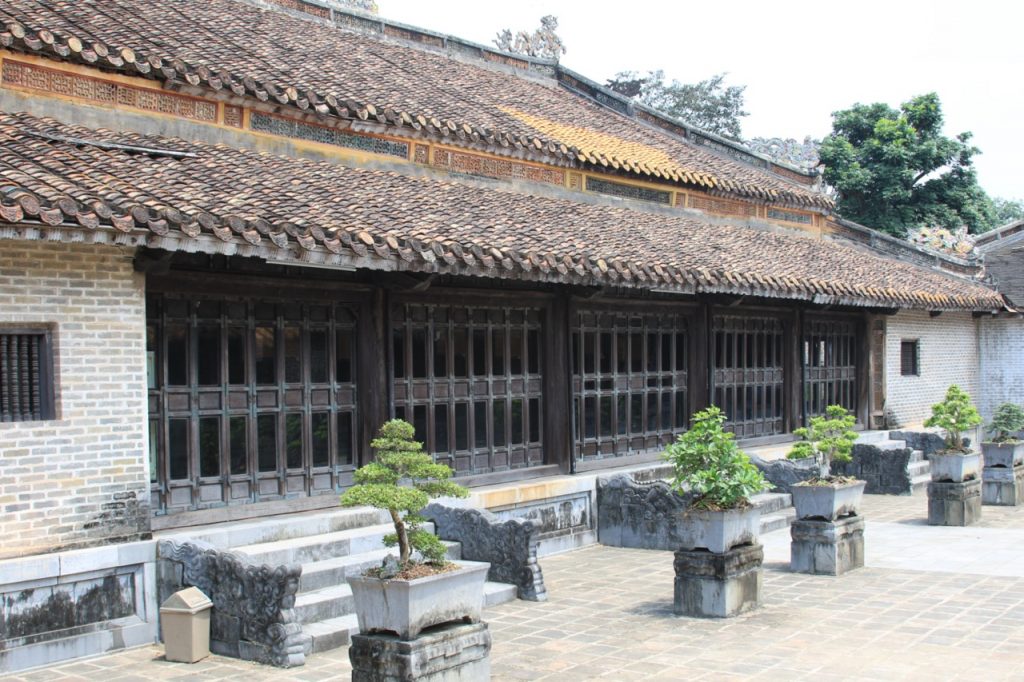
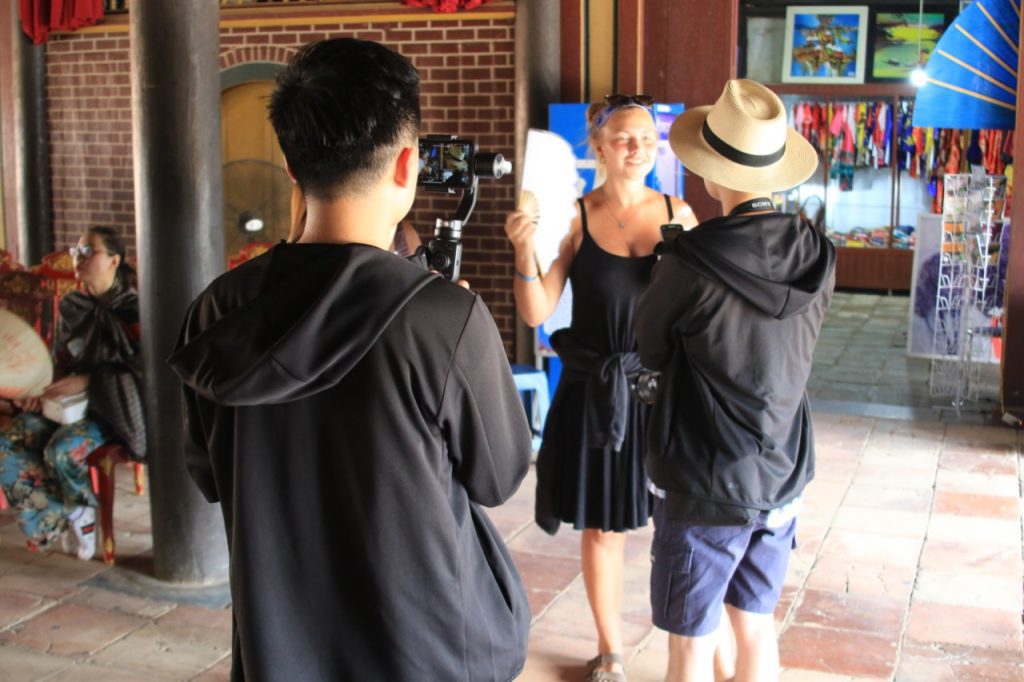
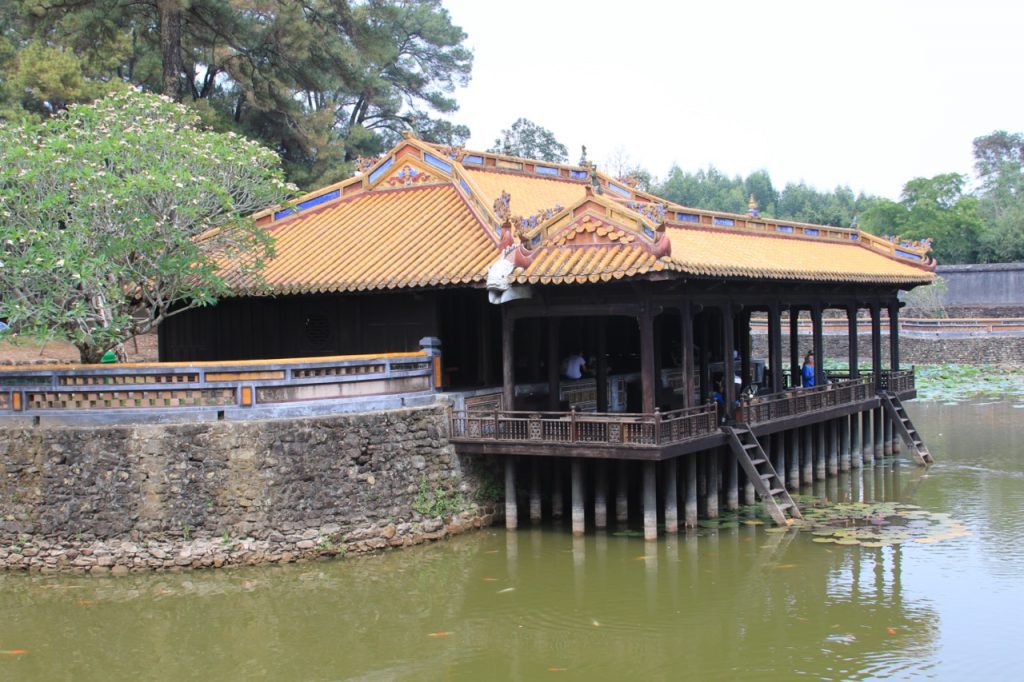
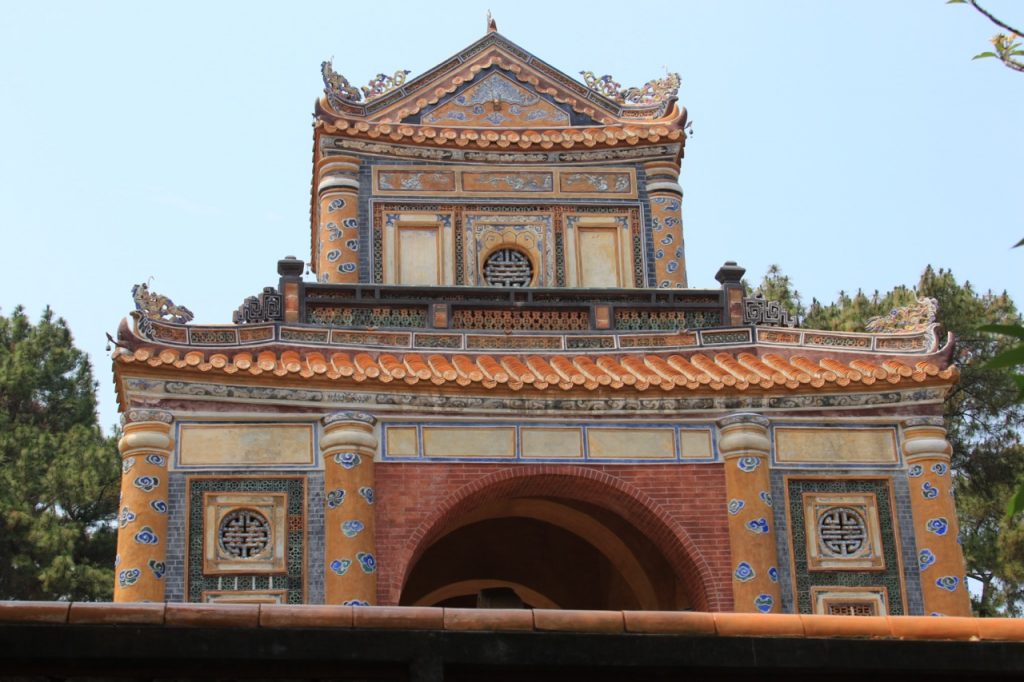
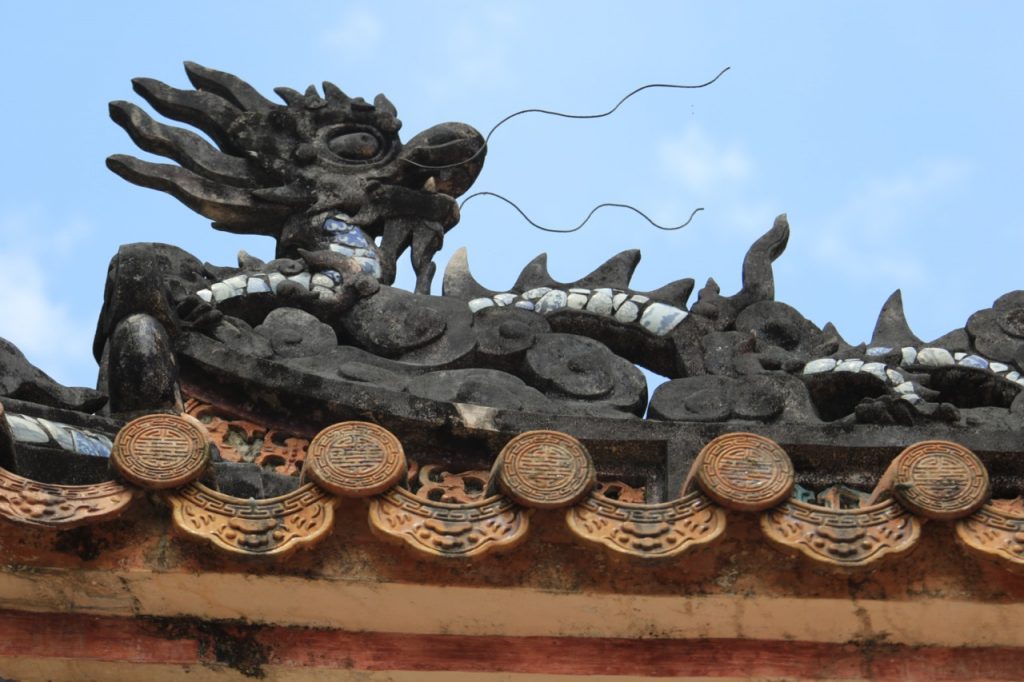
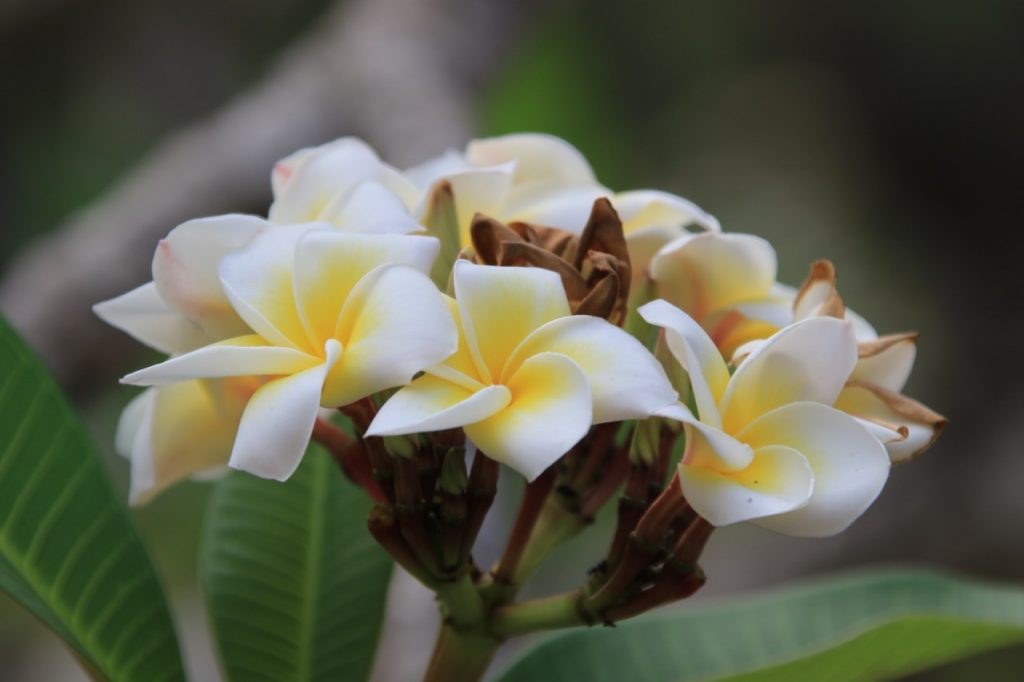
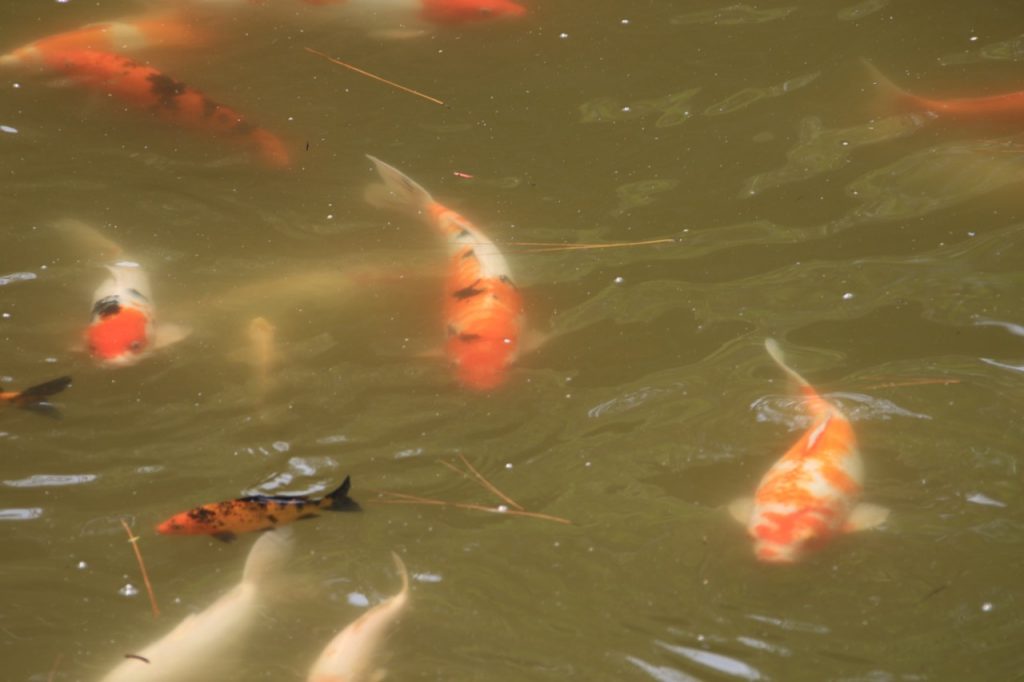
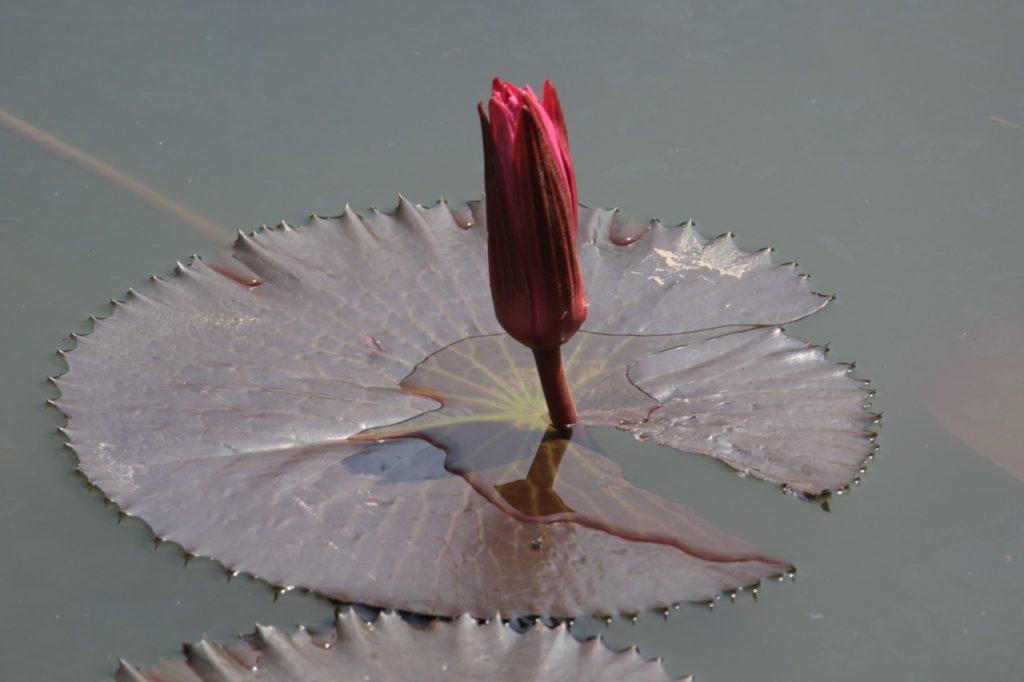
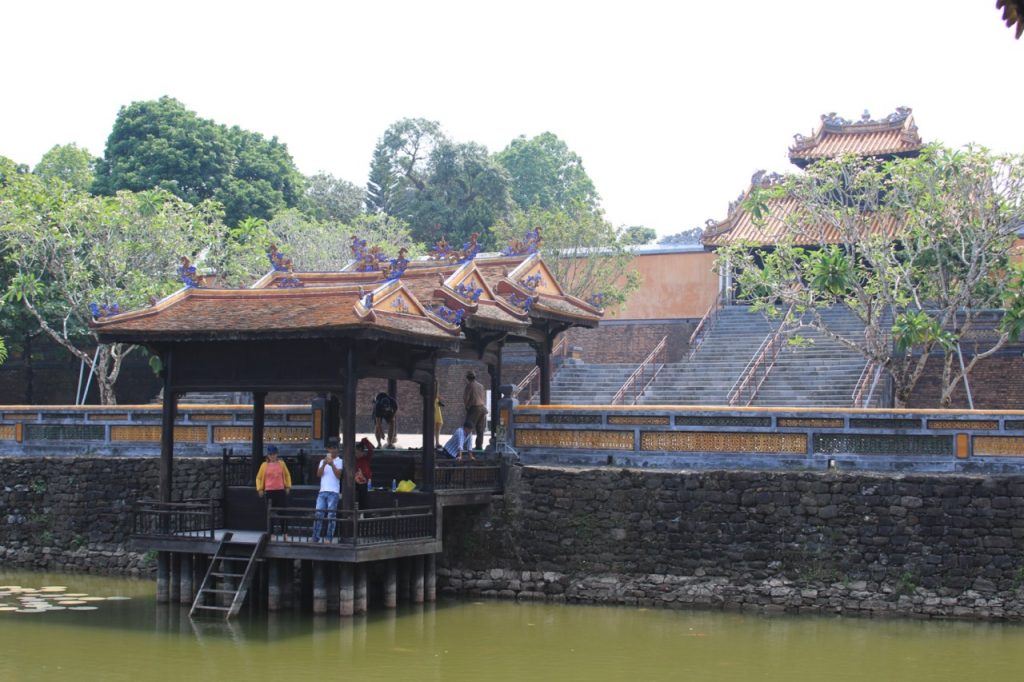
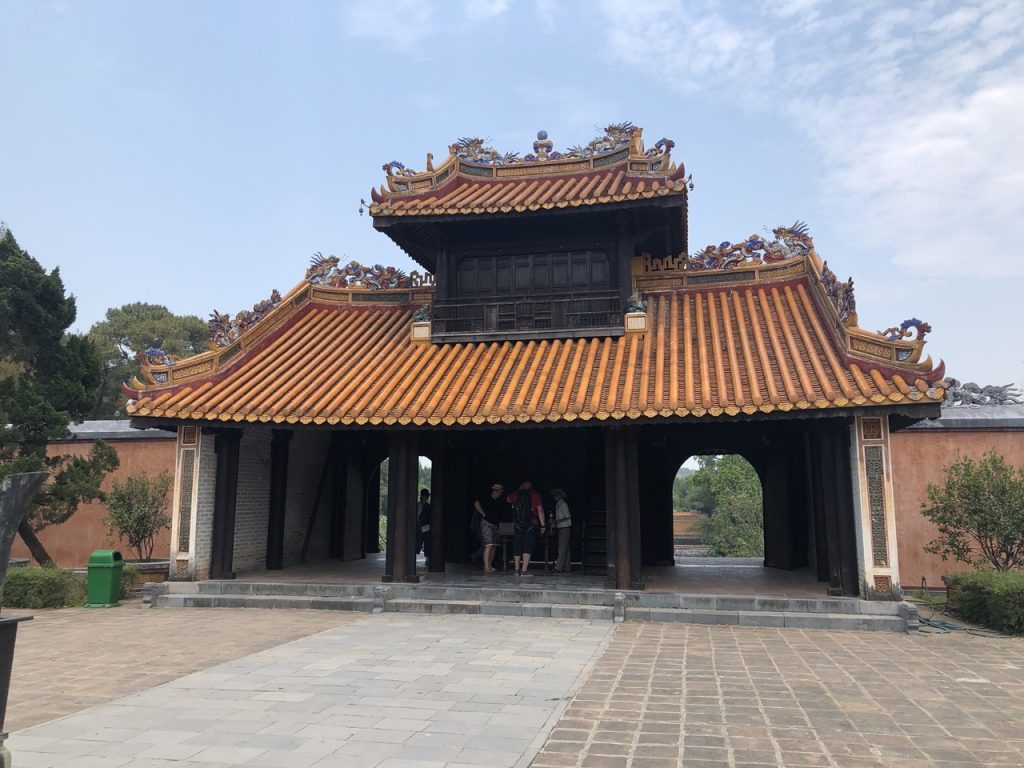
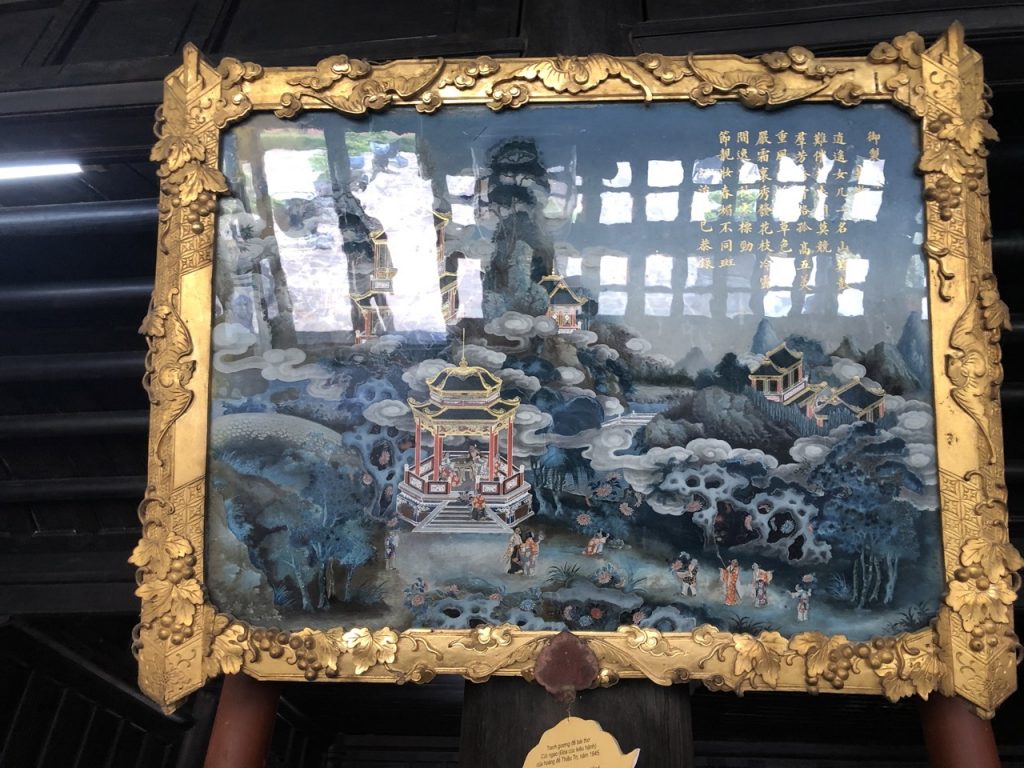
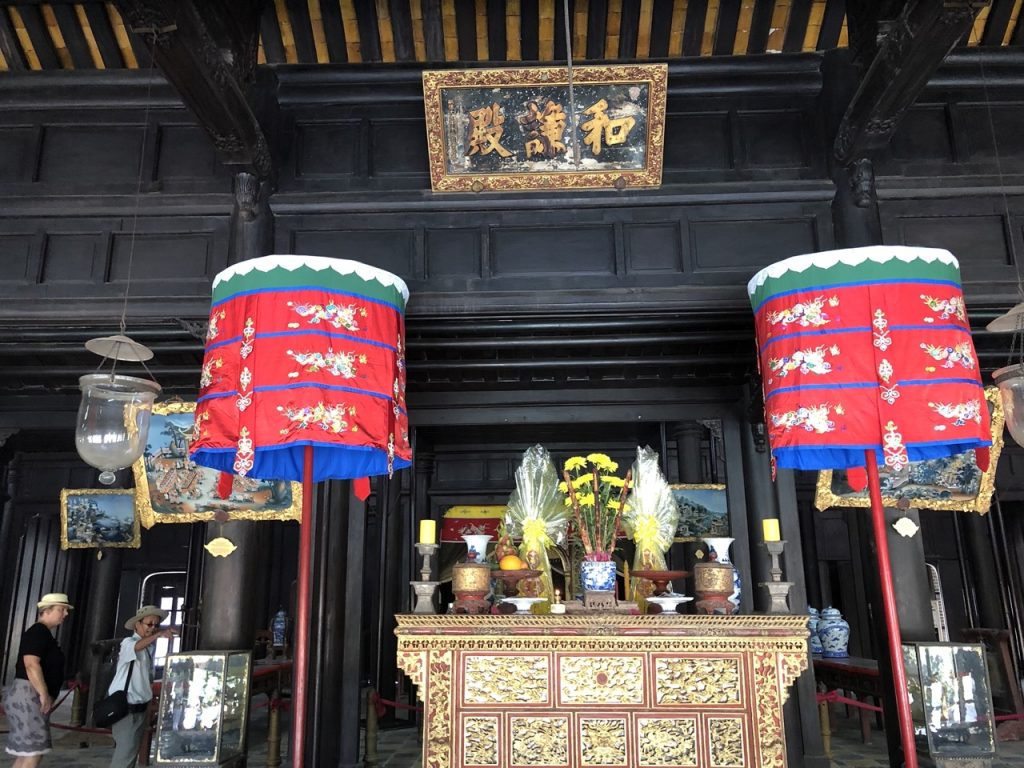
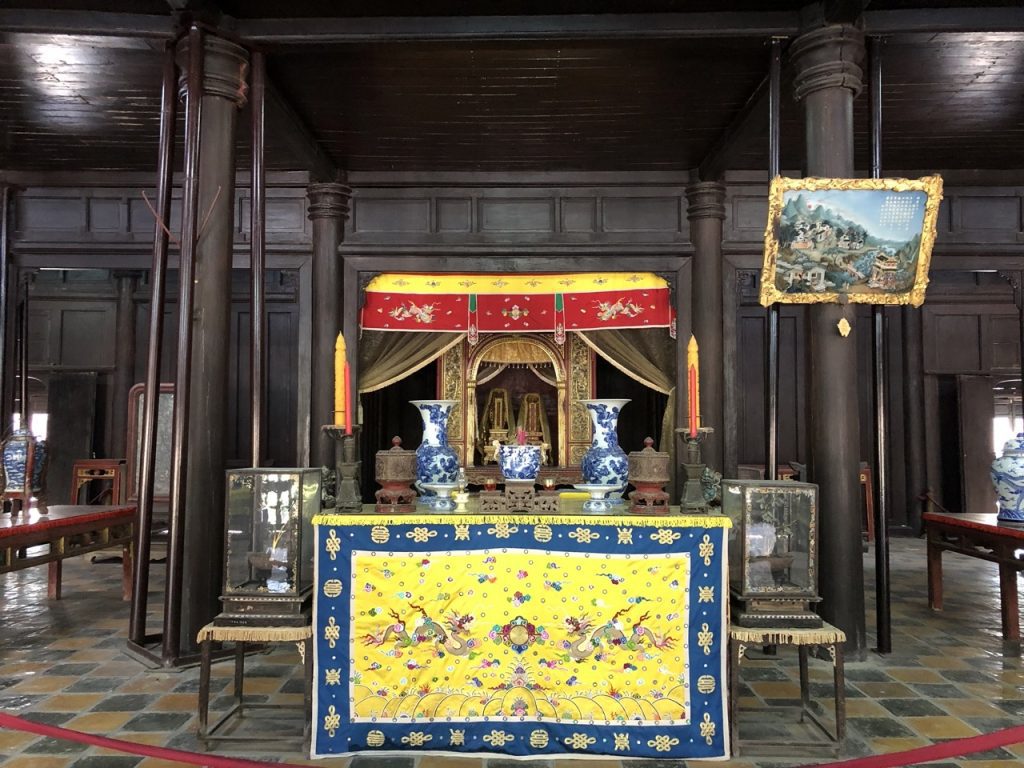
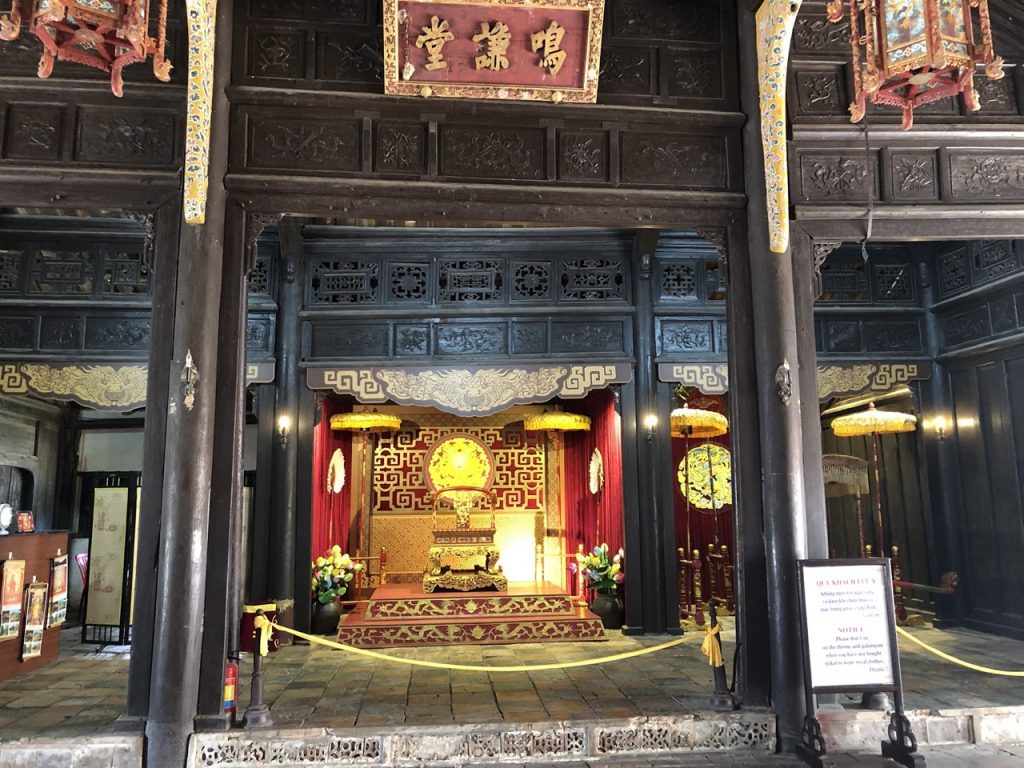
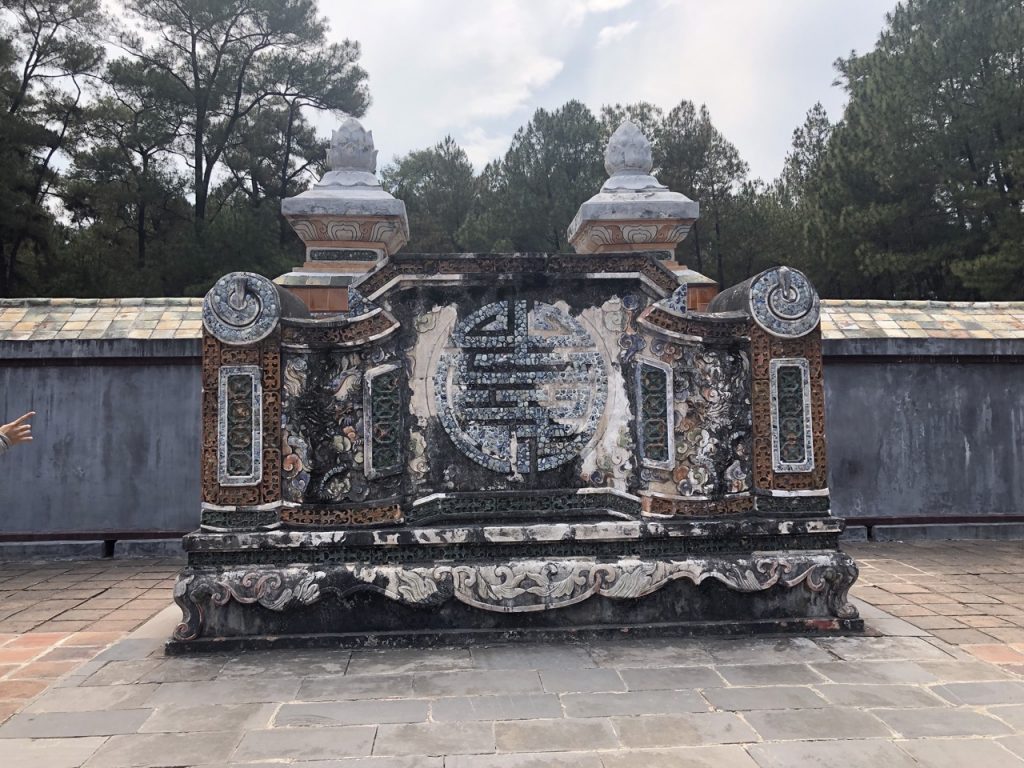
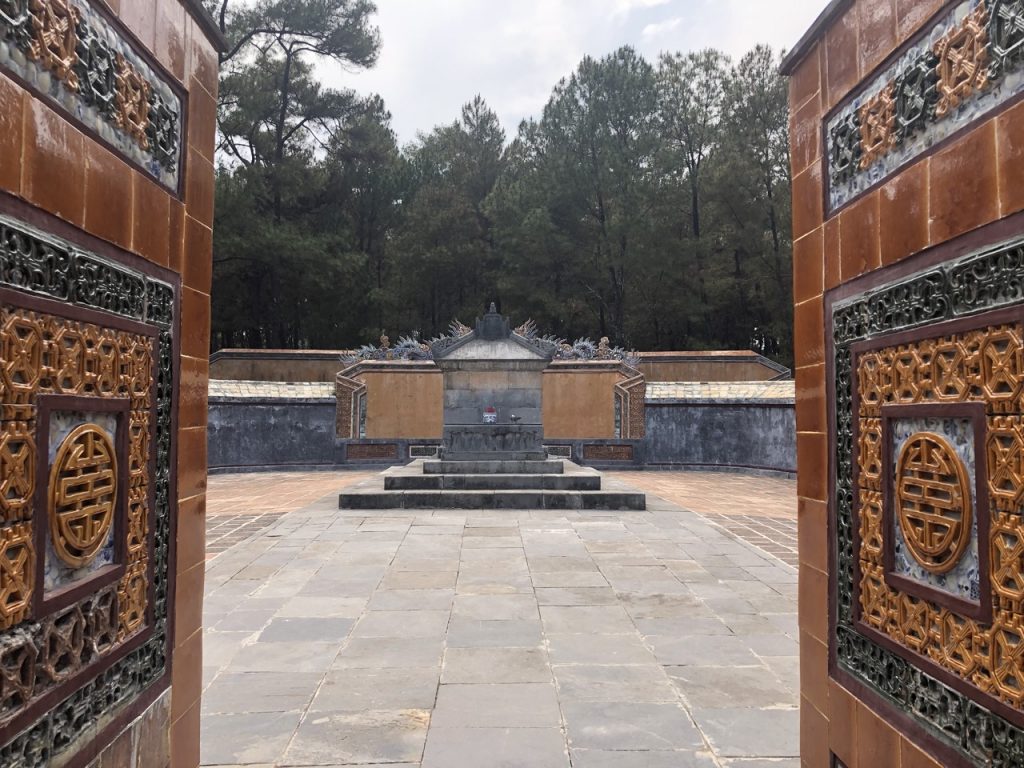
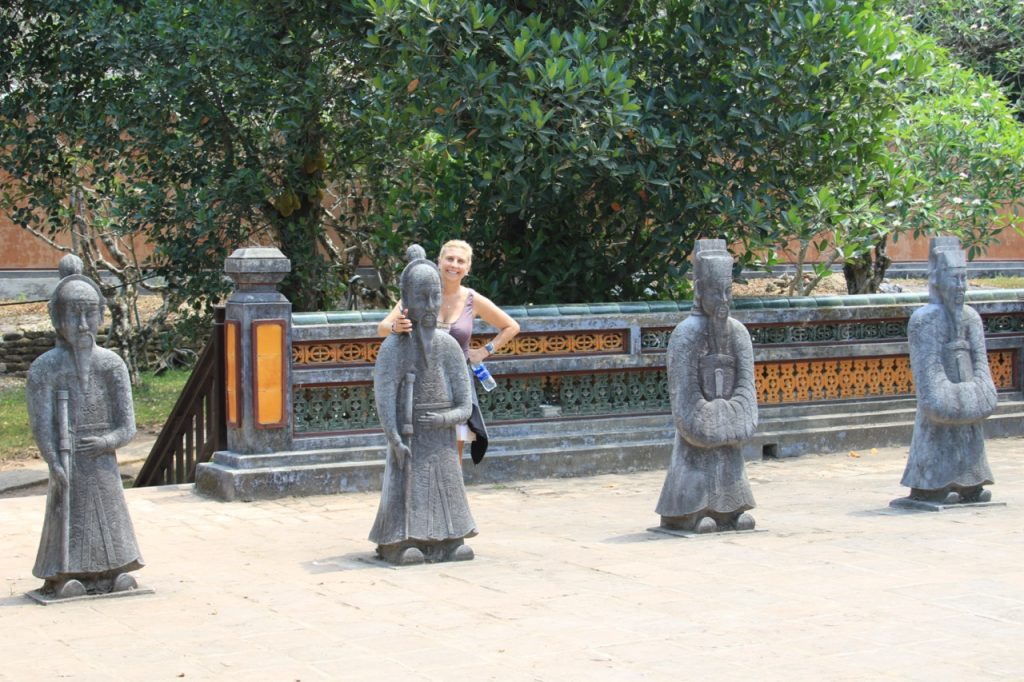
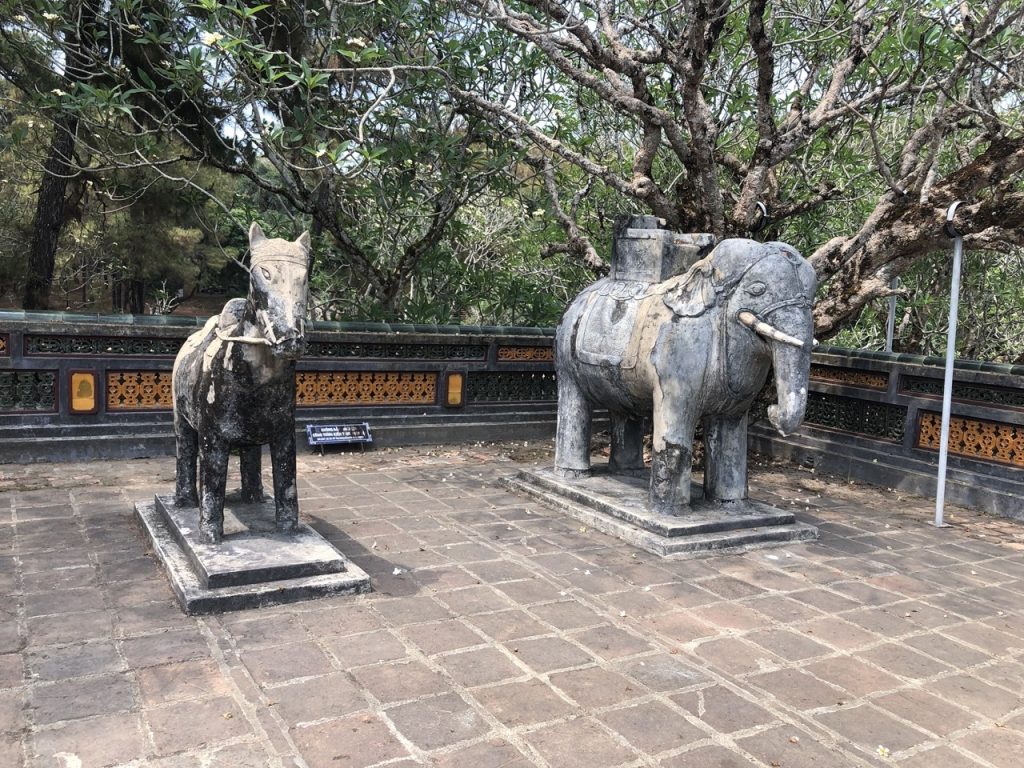
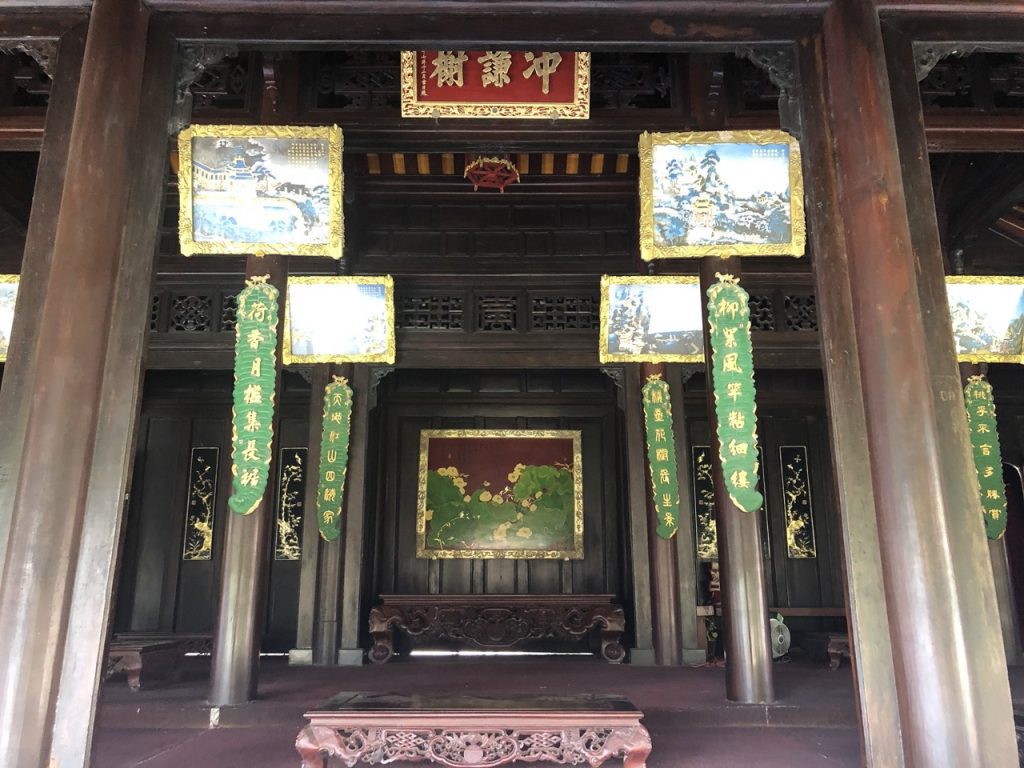
On the Stele is carved a text of 4935 words, written by the sovereign himself and which tells the whole story of his tumultuous life, his adventures and his reign. The imposing stele weighs 20 tons and was pulled by elephants over a distance of 500 km, taking months to complete the journey. On either side of the pavilion, two pylons symbolise the power of the sovereign. However, te Emperor was never buried there. The place where he rests was kept secret to avoid looting. A legend says that the 200 servants who were responsible for the funeral were beheaded. Another version states that deaf-mutes from the remote mountains of Annam carried out the task. He had had 103 wives, countless concubines but no children.
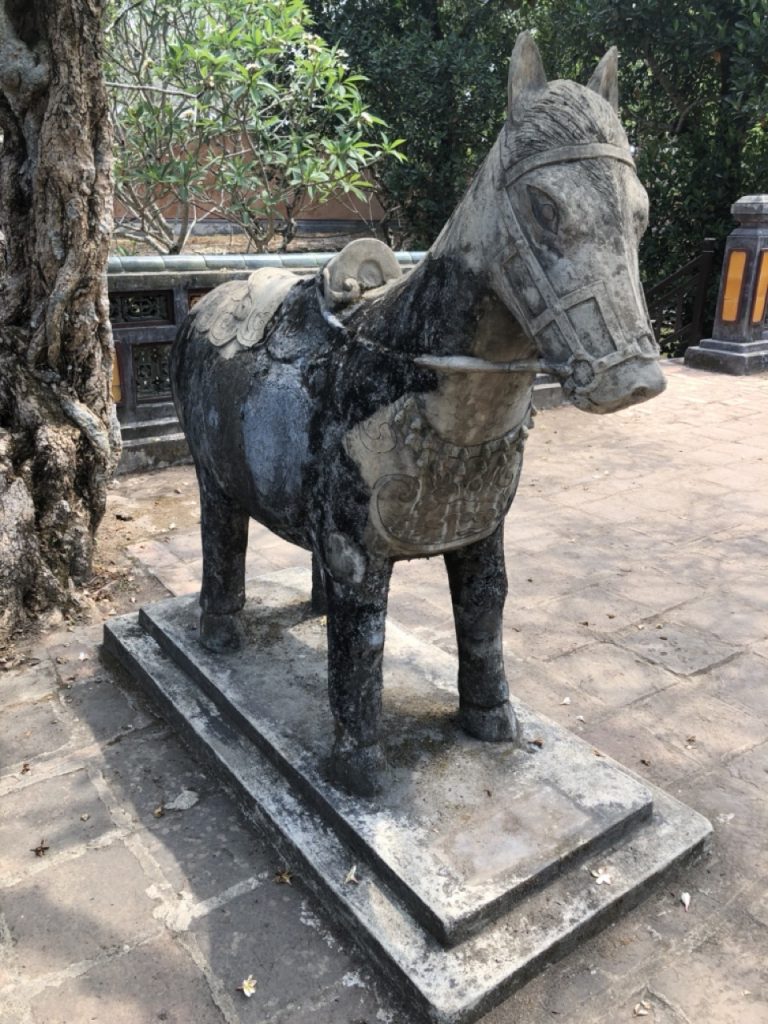
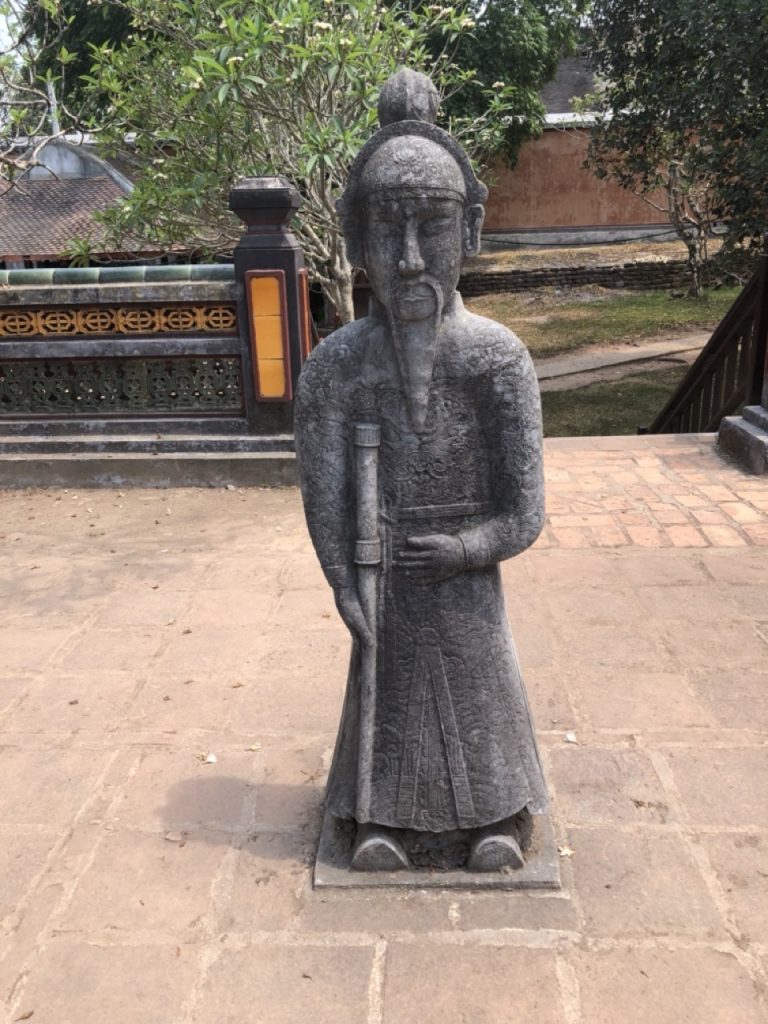
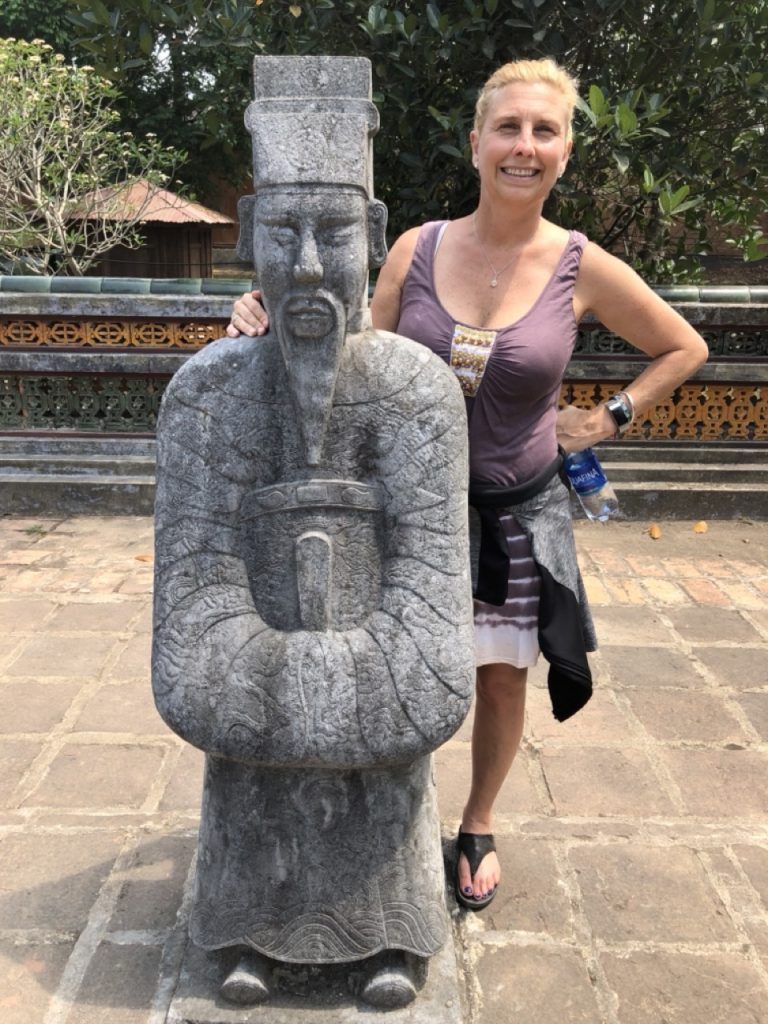
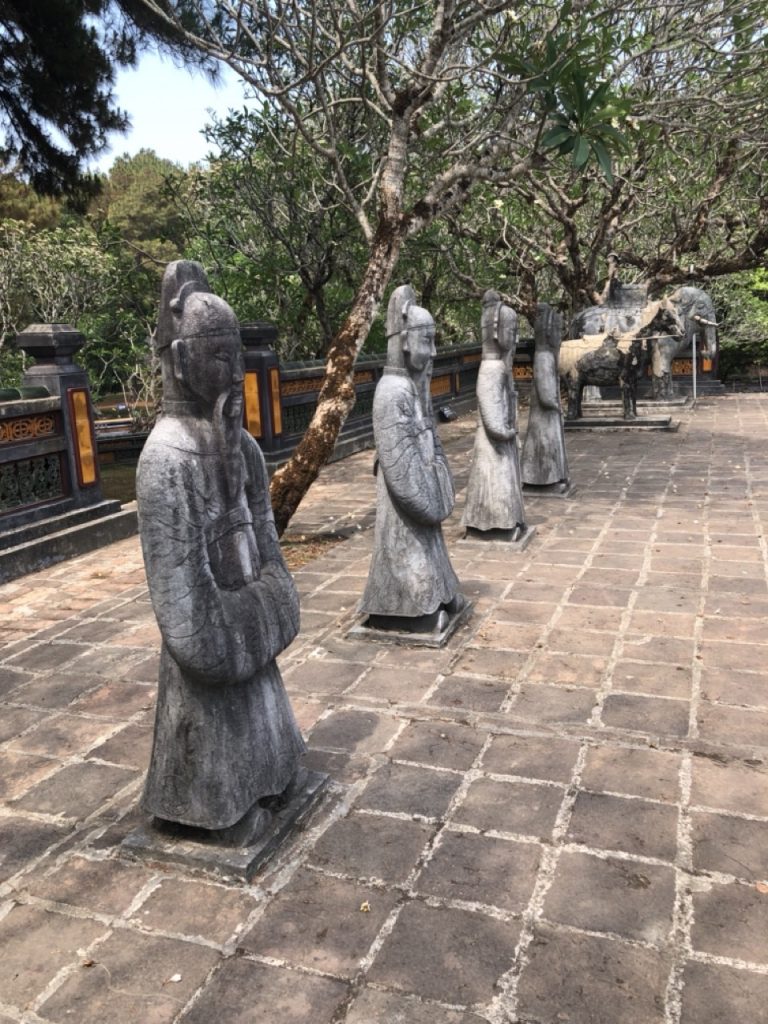
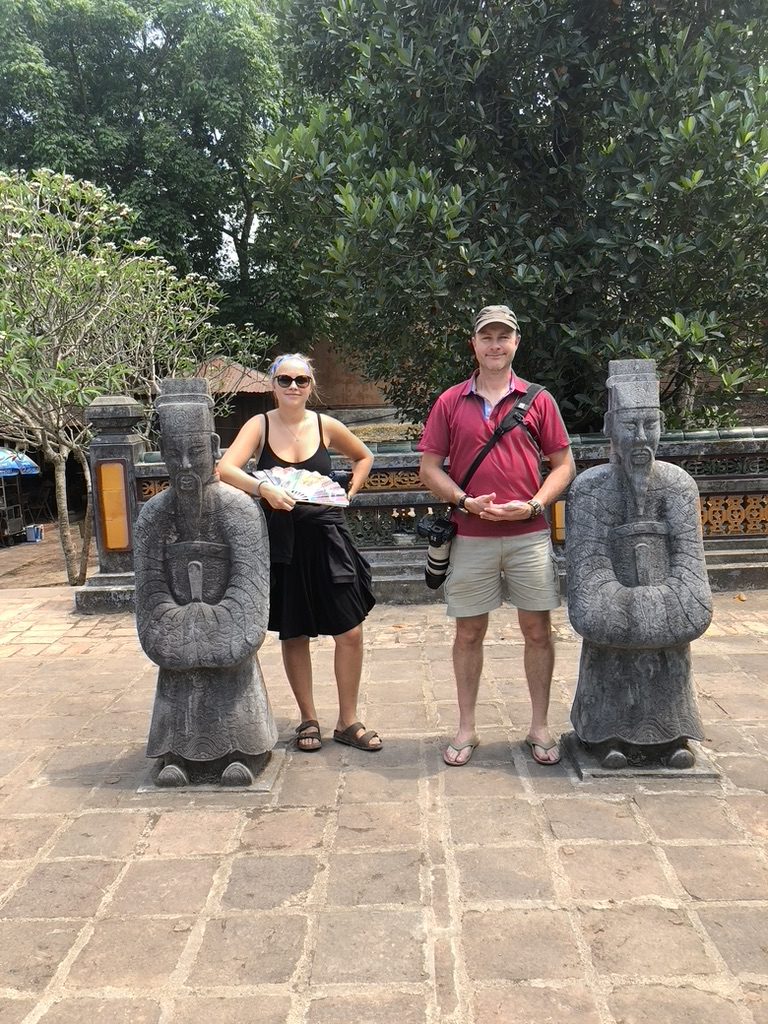
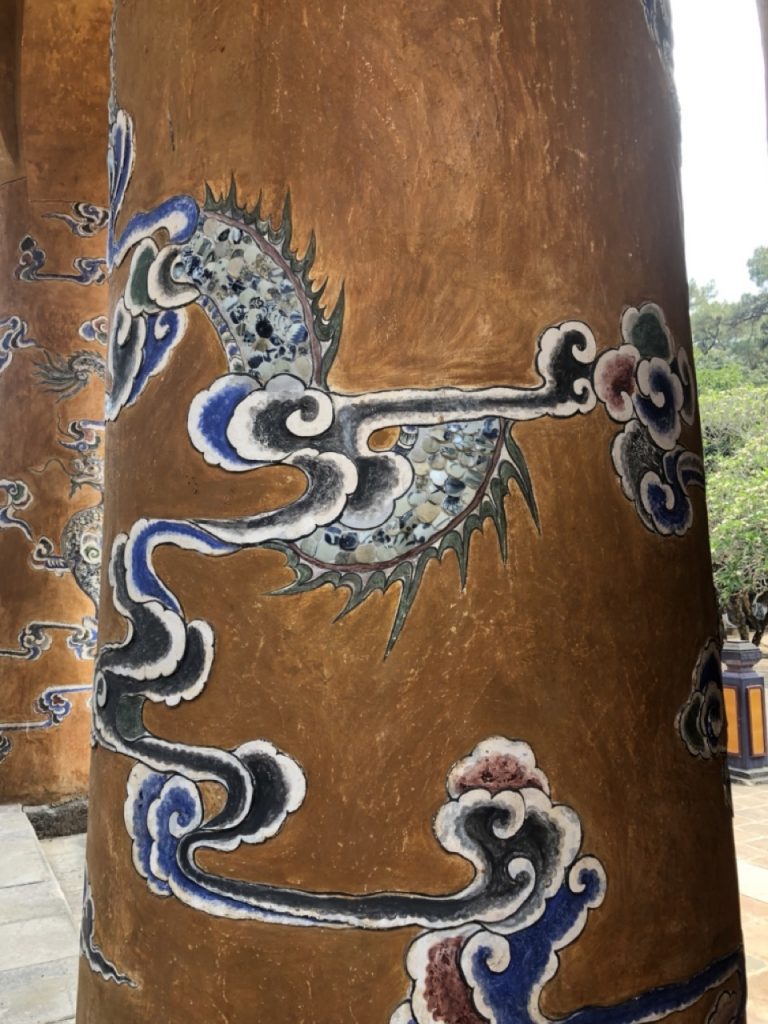
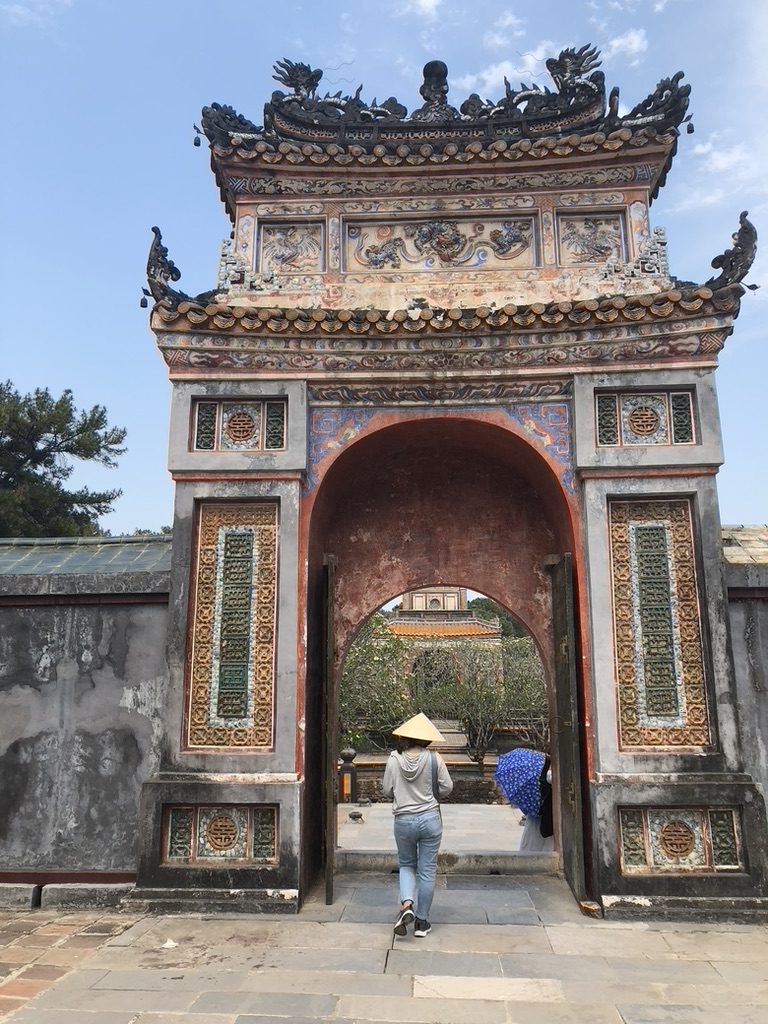
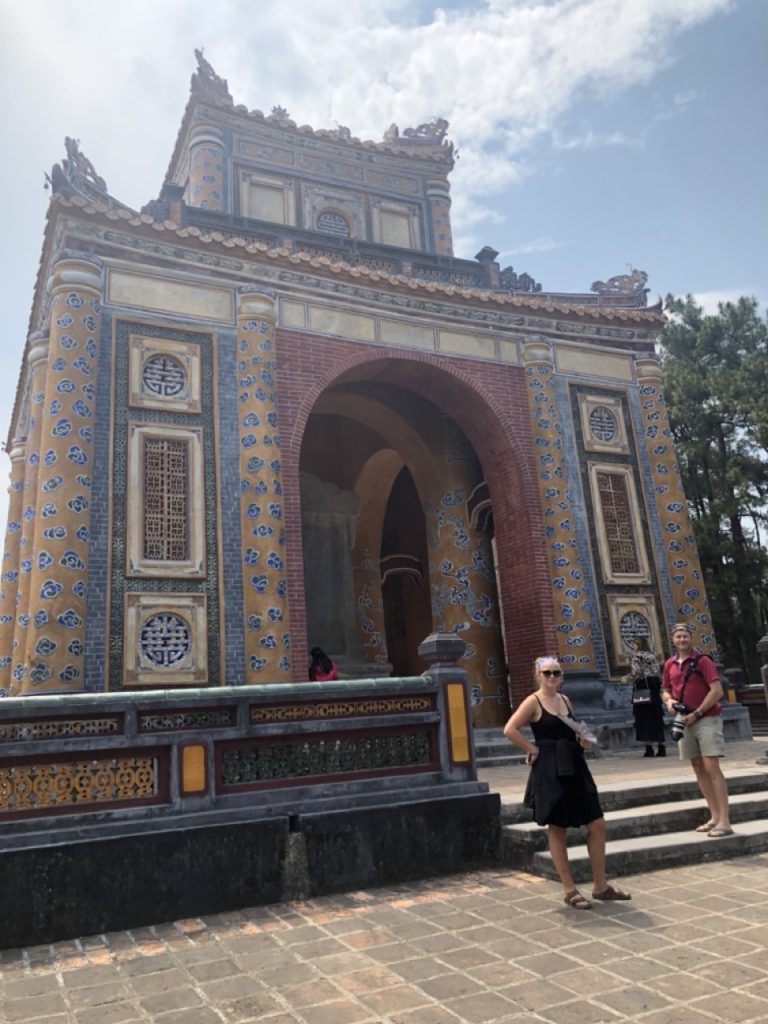
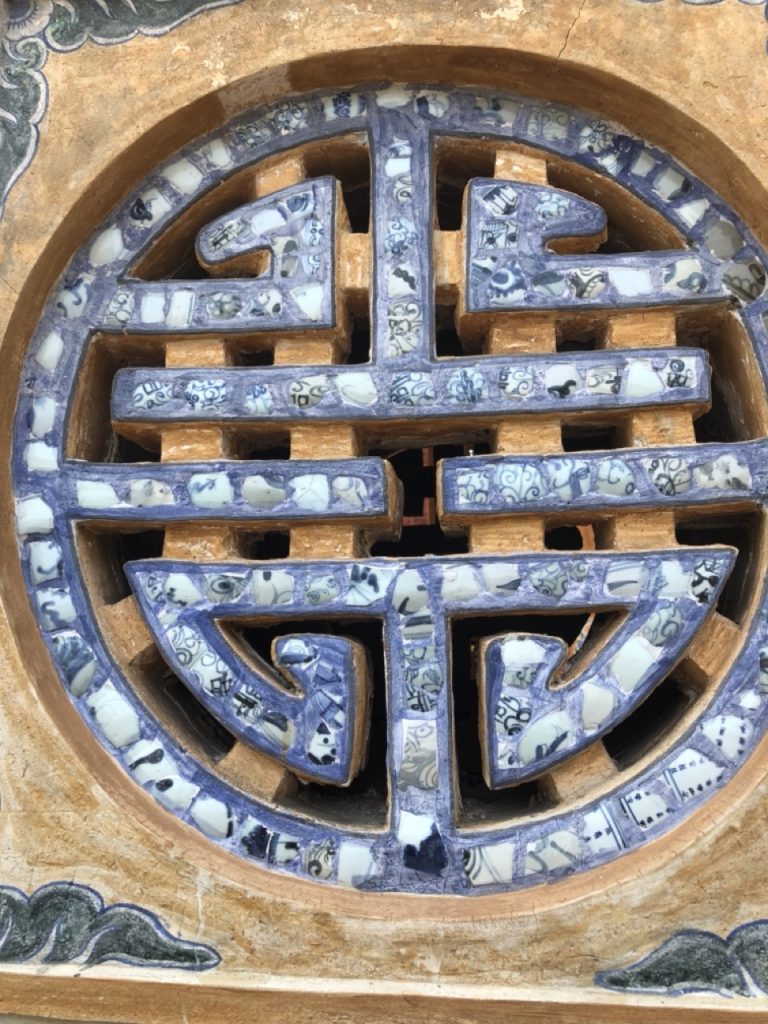
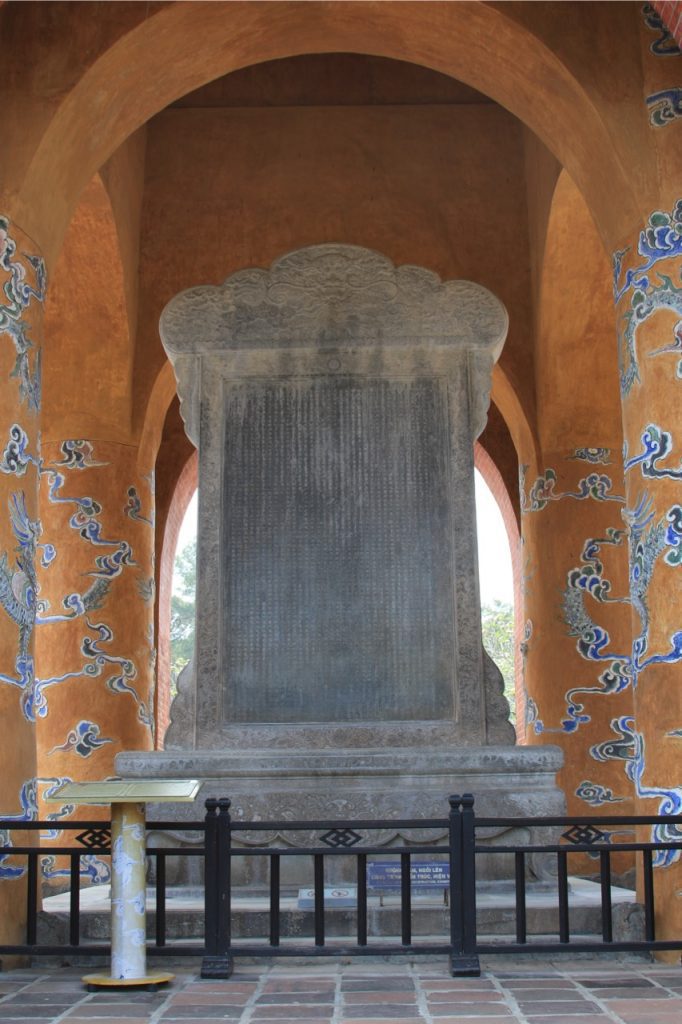
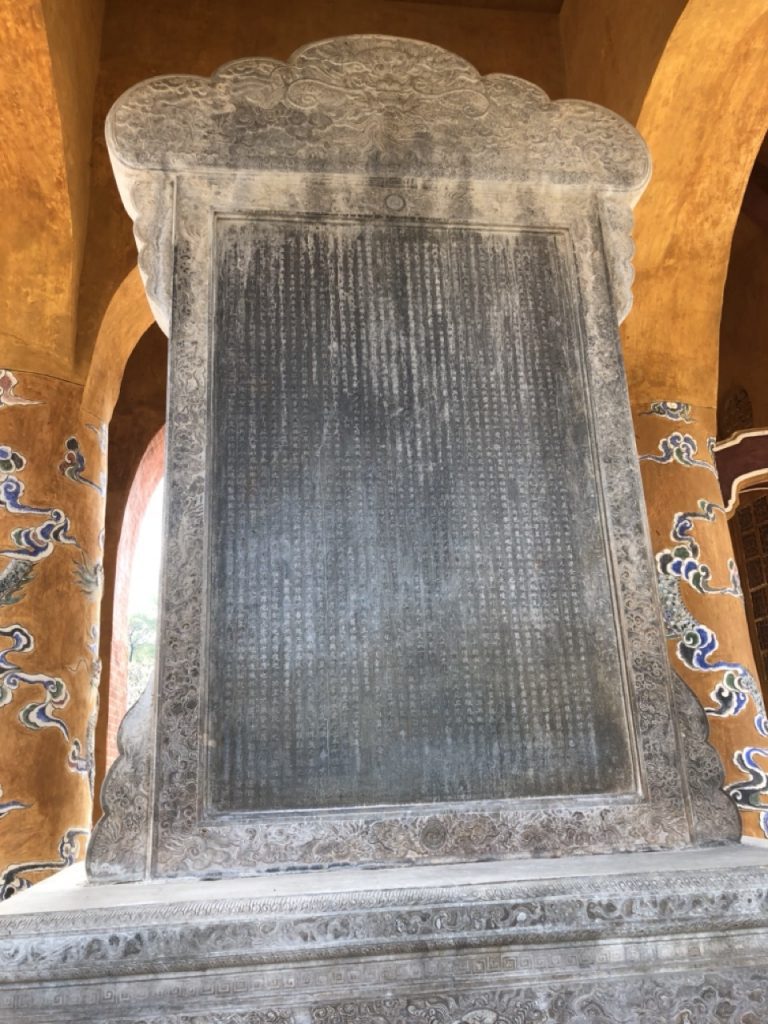
We then headed for a much needed lunch at Dac San Hue (Le Henh) for a set course meal – one of the very best we had on the whole trip!
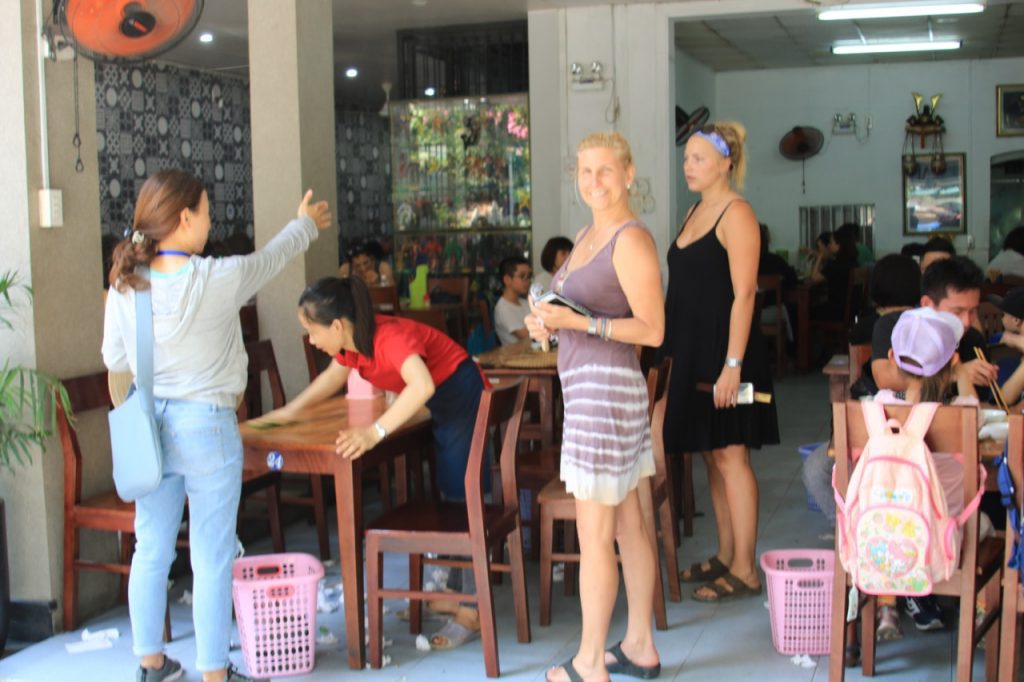
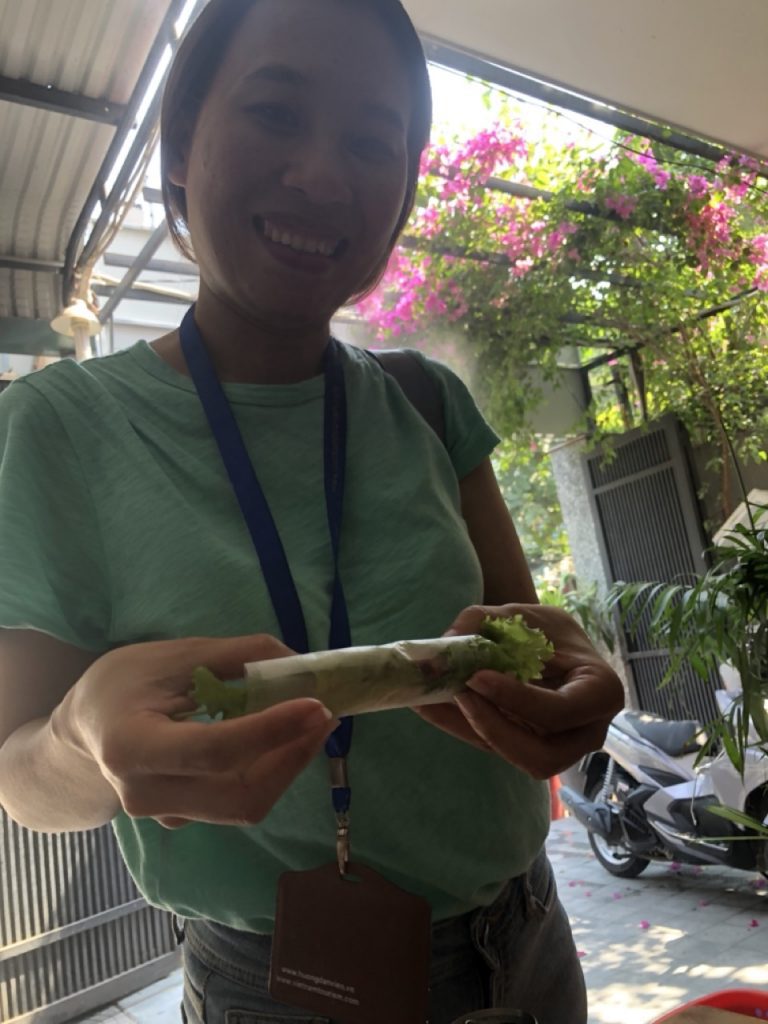
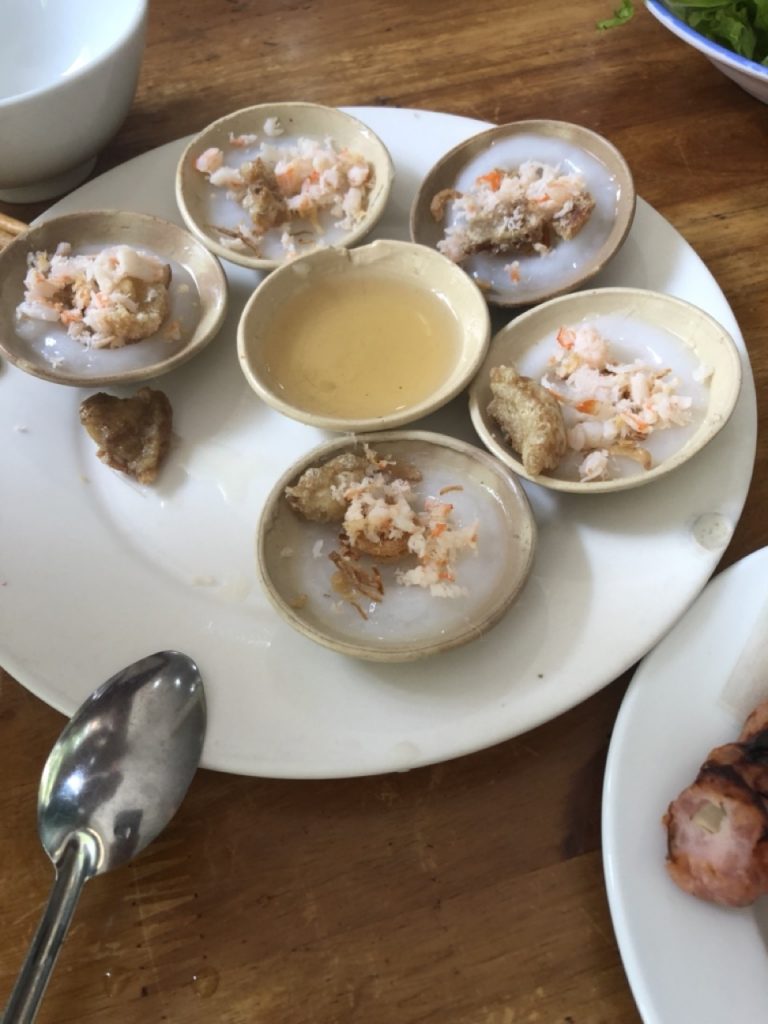
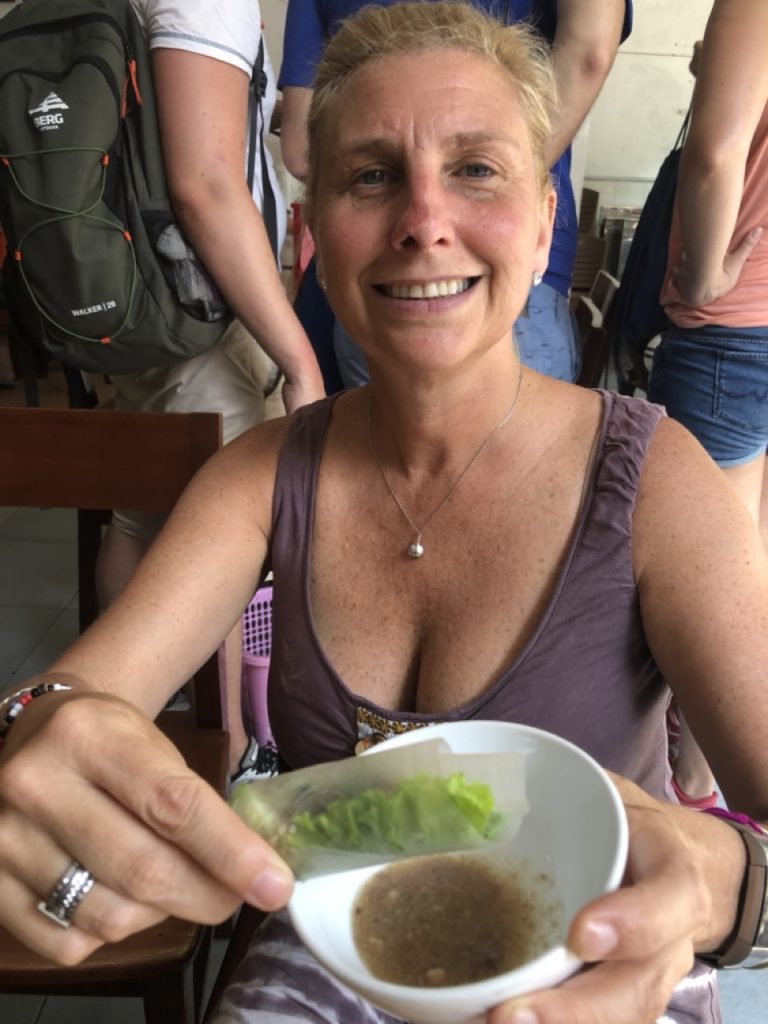
Our next stop was the Dai Noi Citadel – it was unbearably hot so requested the short tour as we just could not face a long walk in the full sun. The Chinese-style Vietnamese imperial citadel Dai Noi, from which the Nguyen family controlled southern and central Vietnam from the mid-16th to the mid-20th century has an 11-km walled circumference that enclosed priceless artefacts of Vietnamese civilisation. The outer stone wall is one meter thick, five meters high and is separated from the inner wall by dirt fill.
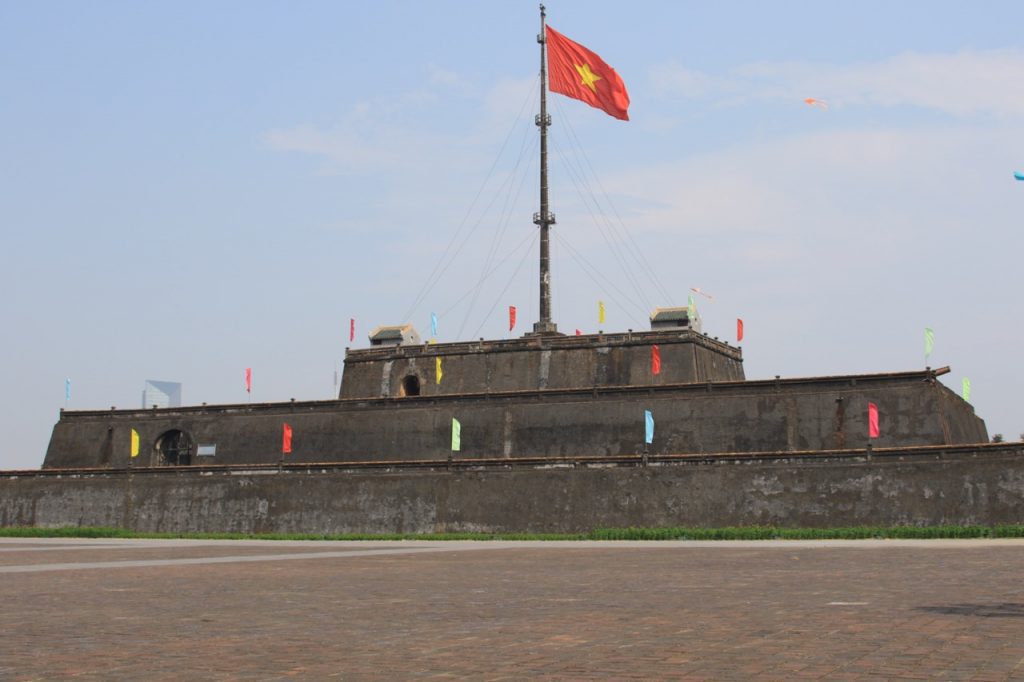
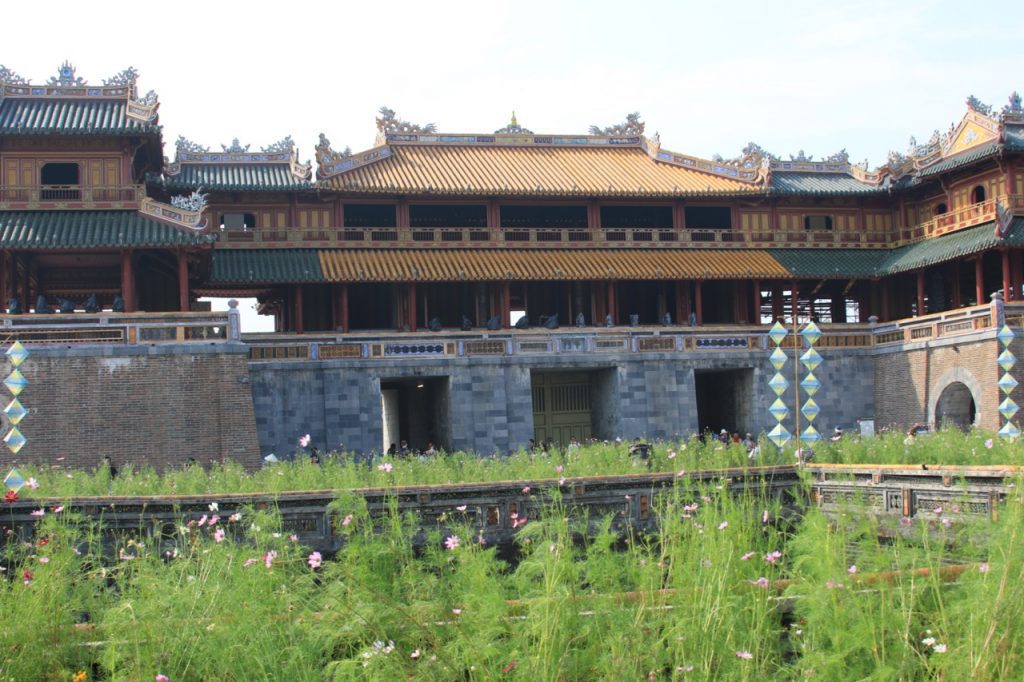
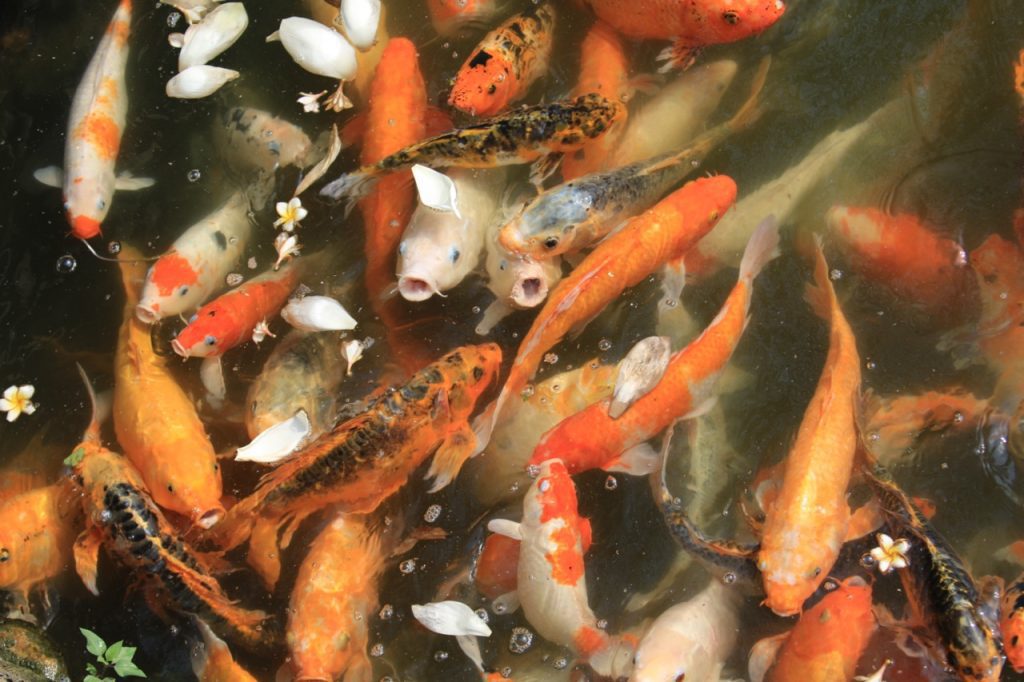
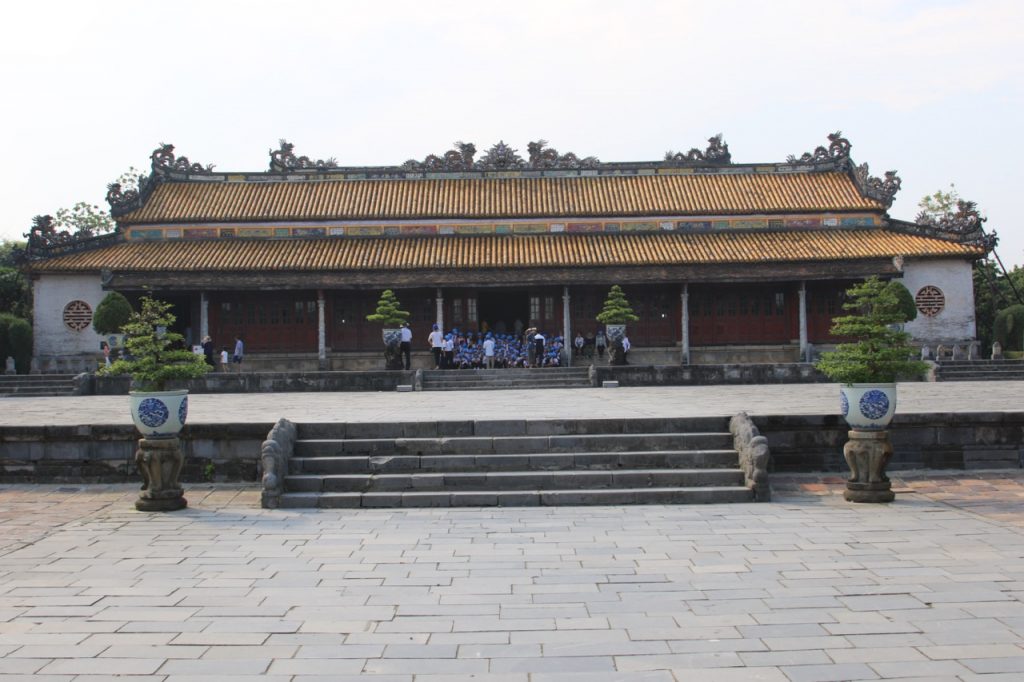
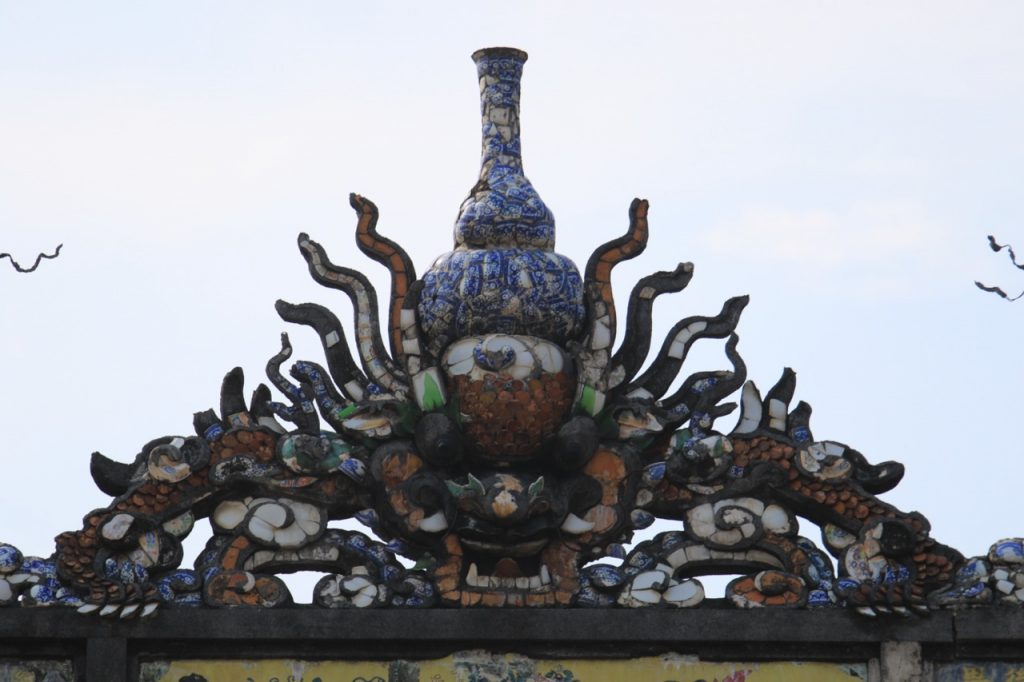
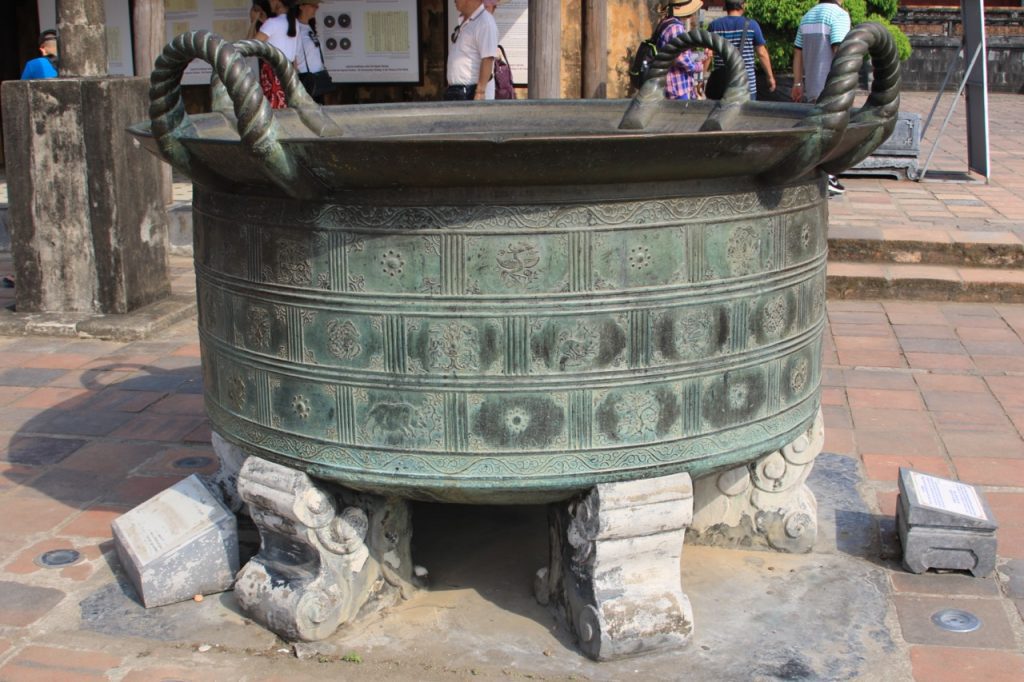
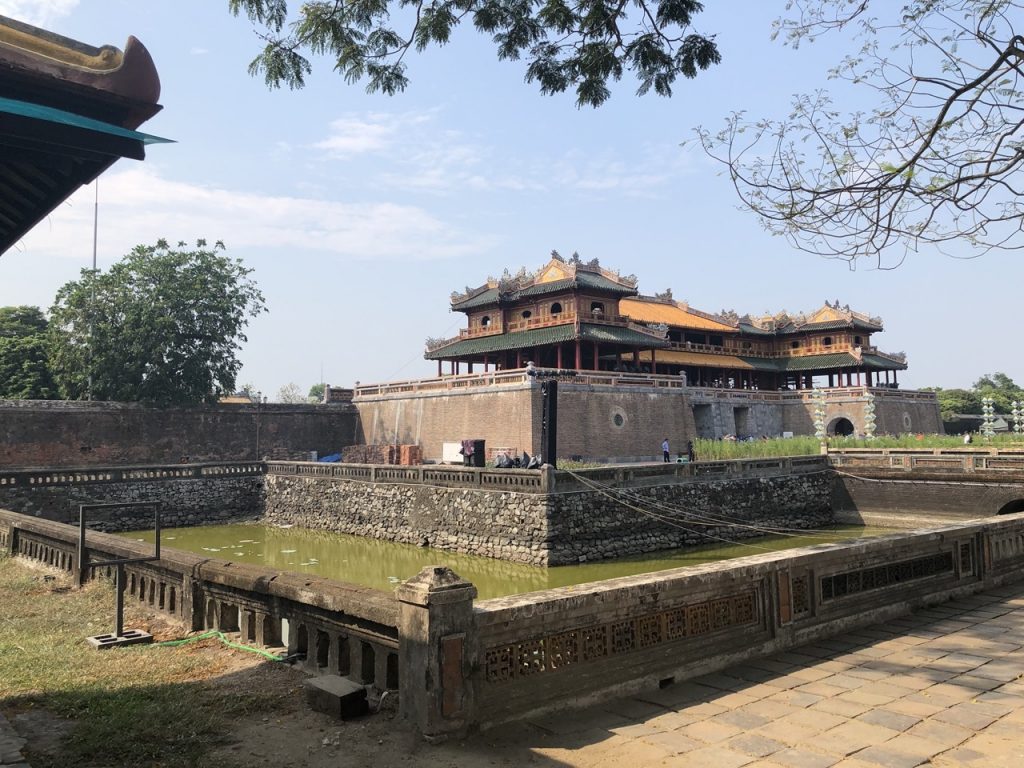
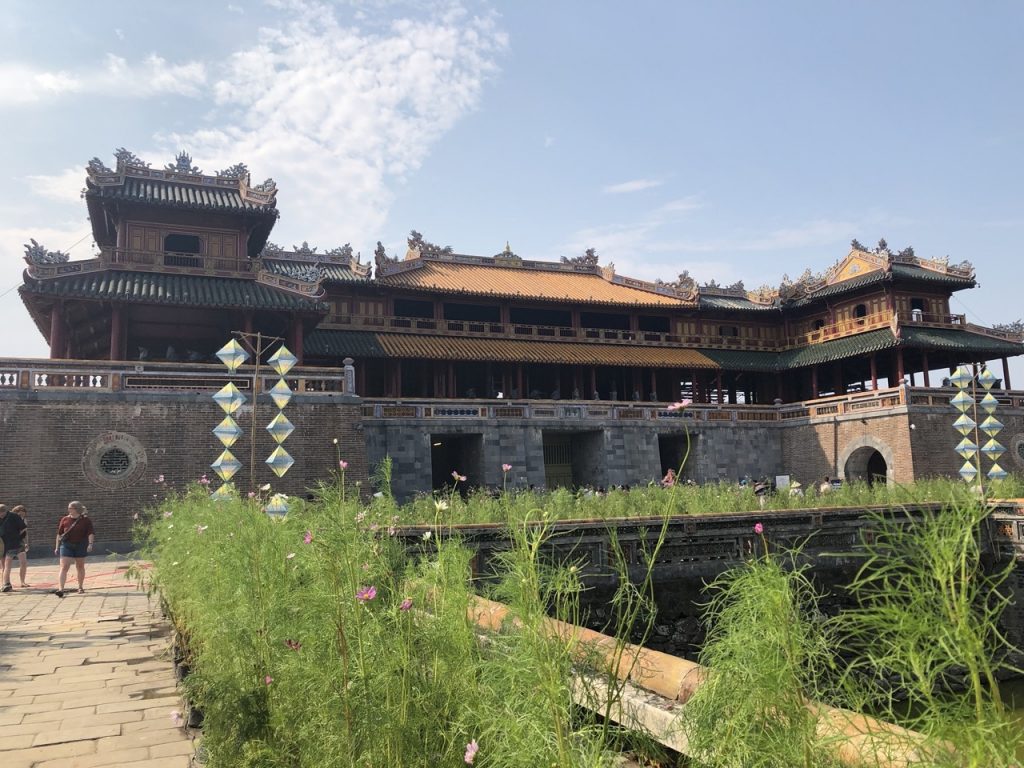
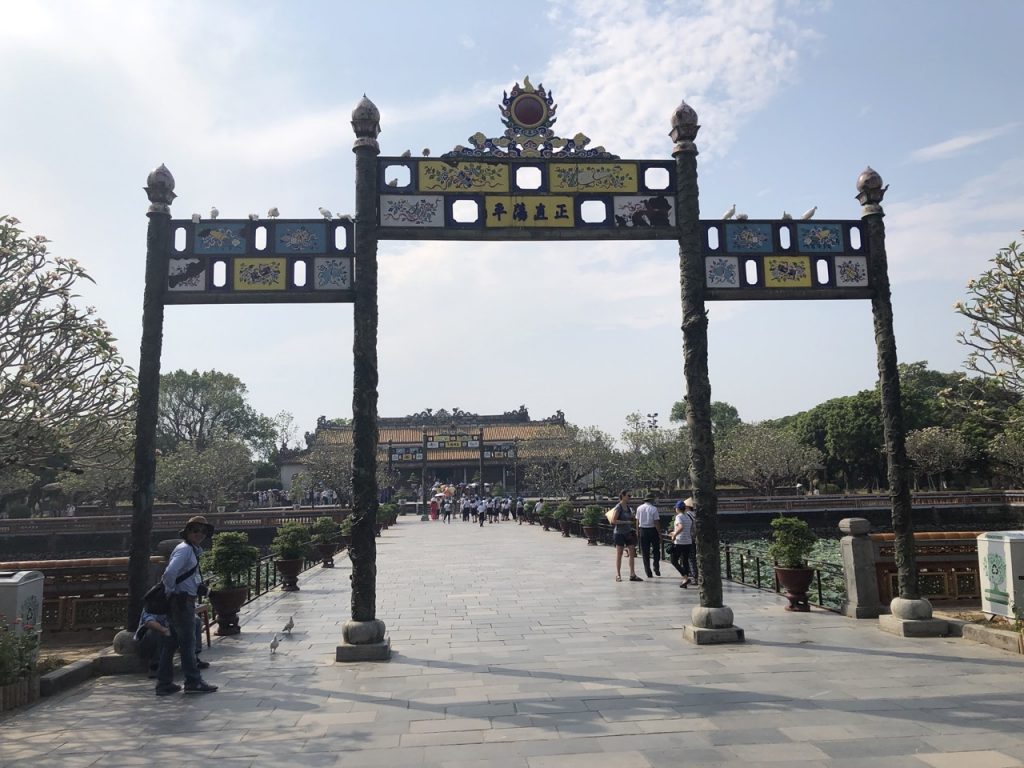
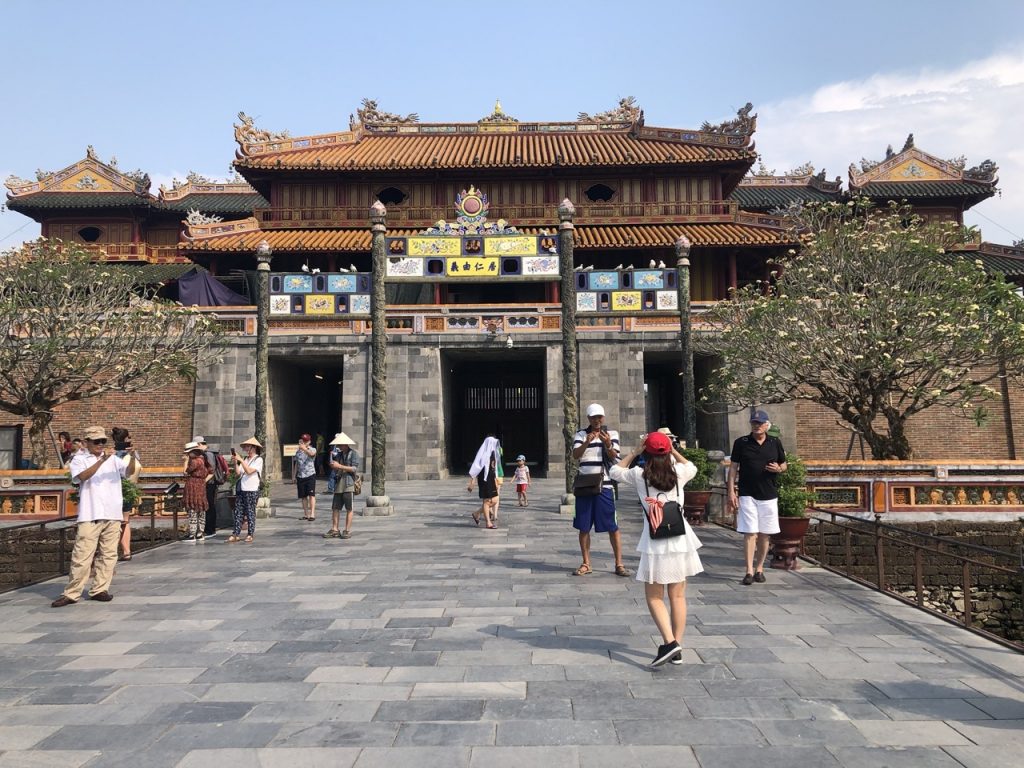
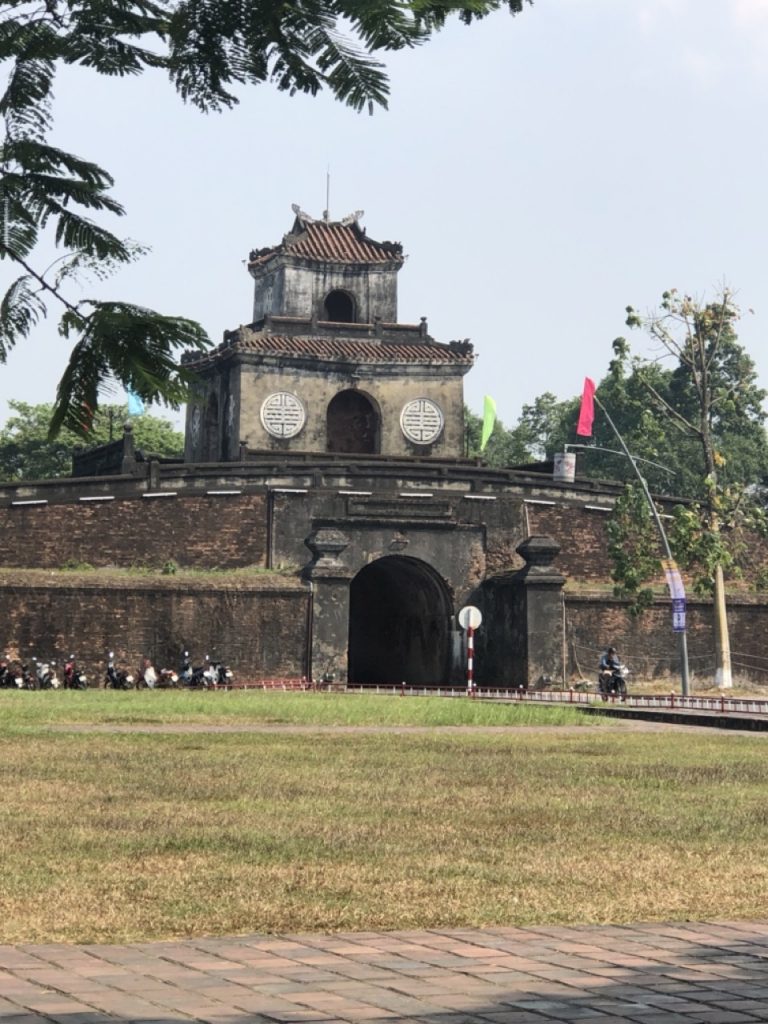
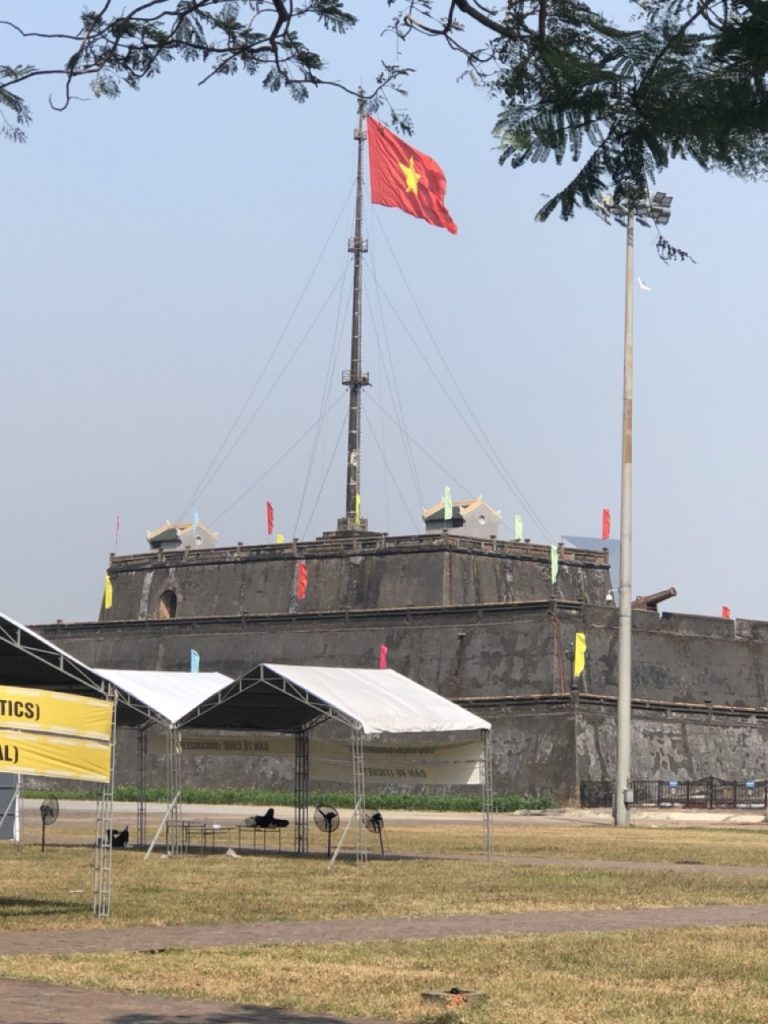
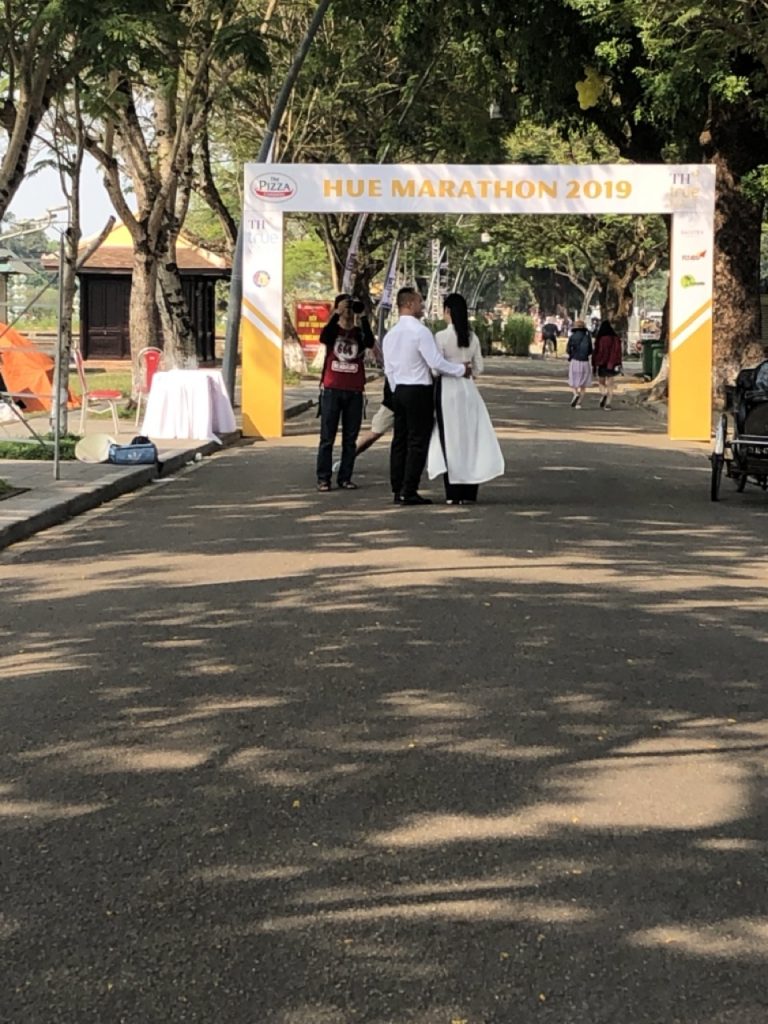
The Perfume River is a river that crosses the city of Huế. In the autumn, flowers from orchards upriver from Huế fall into the water, giving the river a perfume-like aroma, hence the name.The boat owner and children were very sweet – we bought some chopsticks and she dropped us at the Thien Mu Pagoda. Children were bathing in the river.
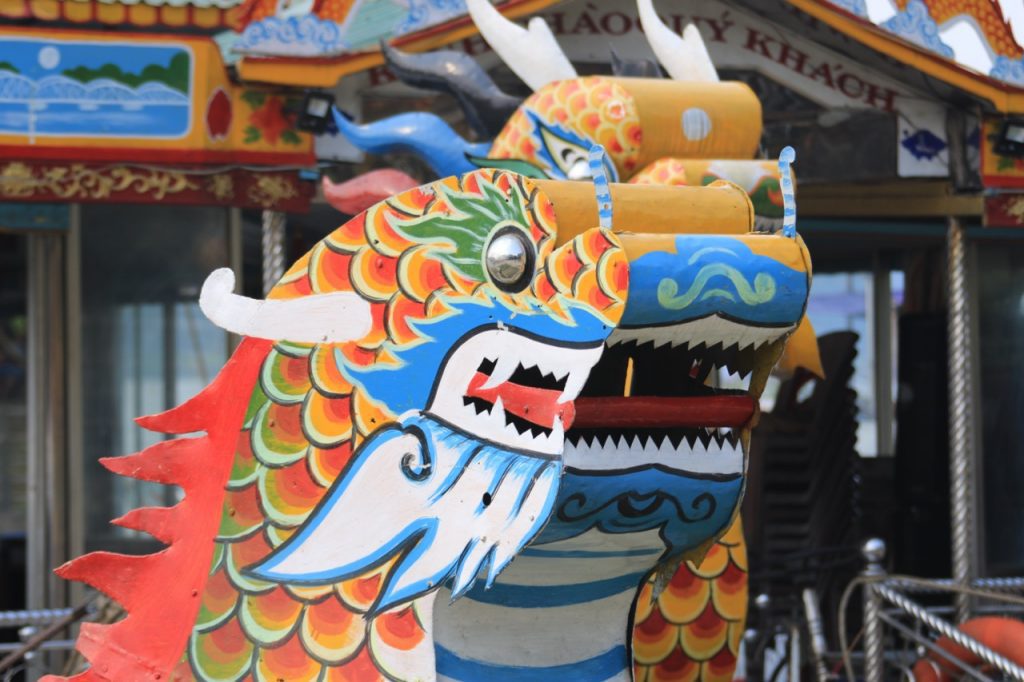
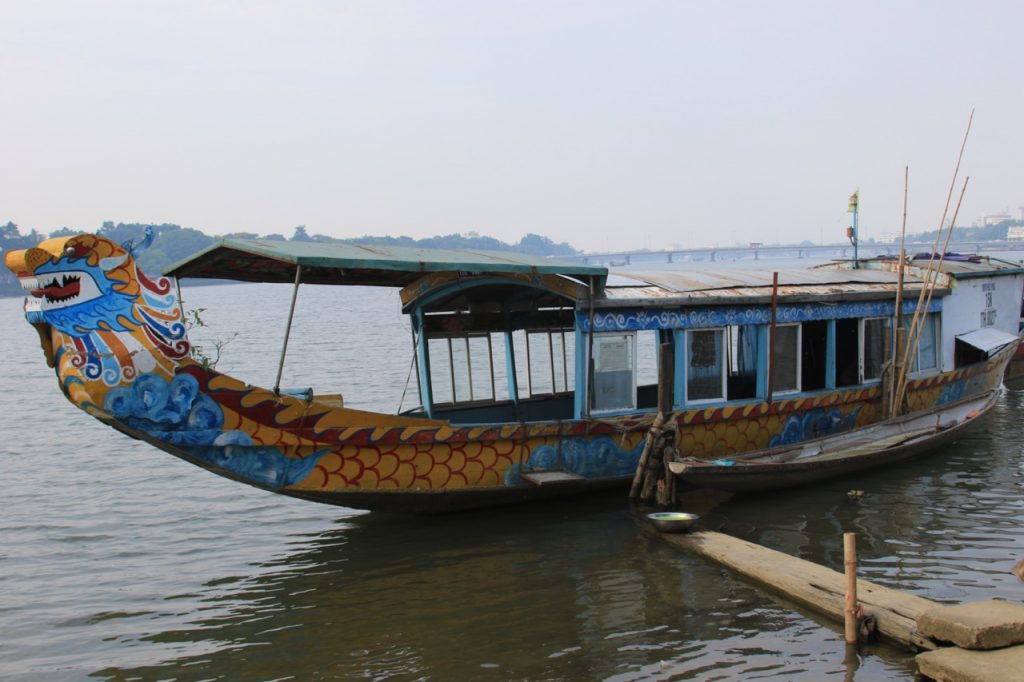
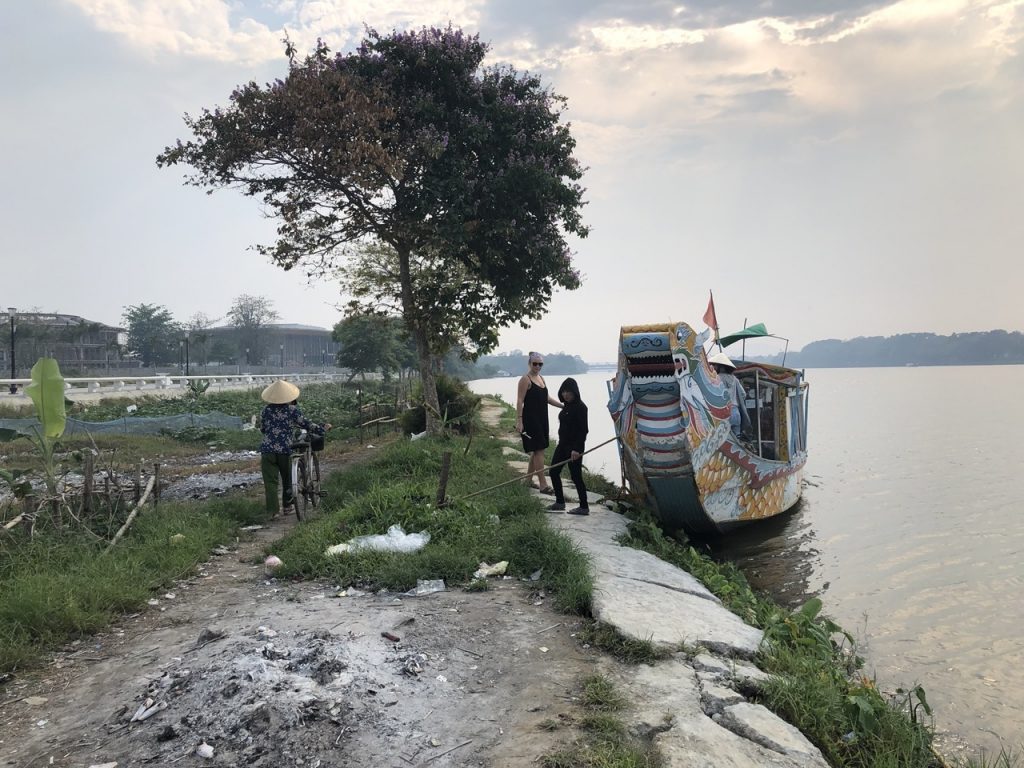
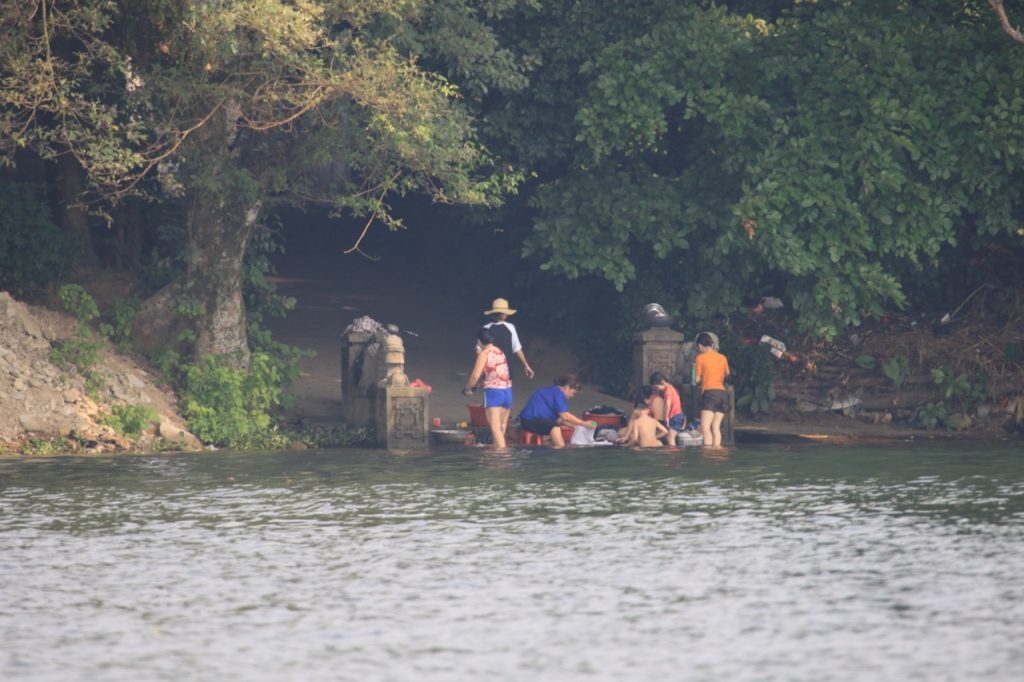
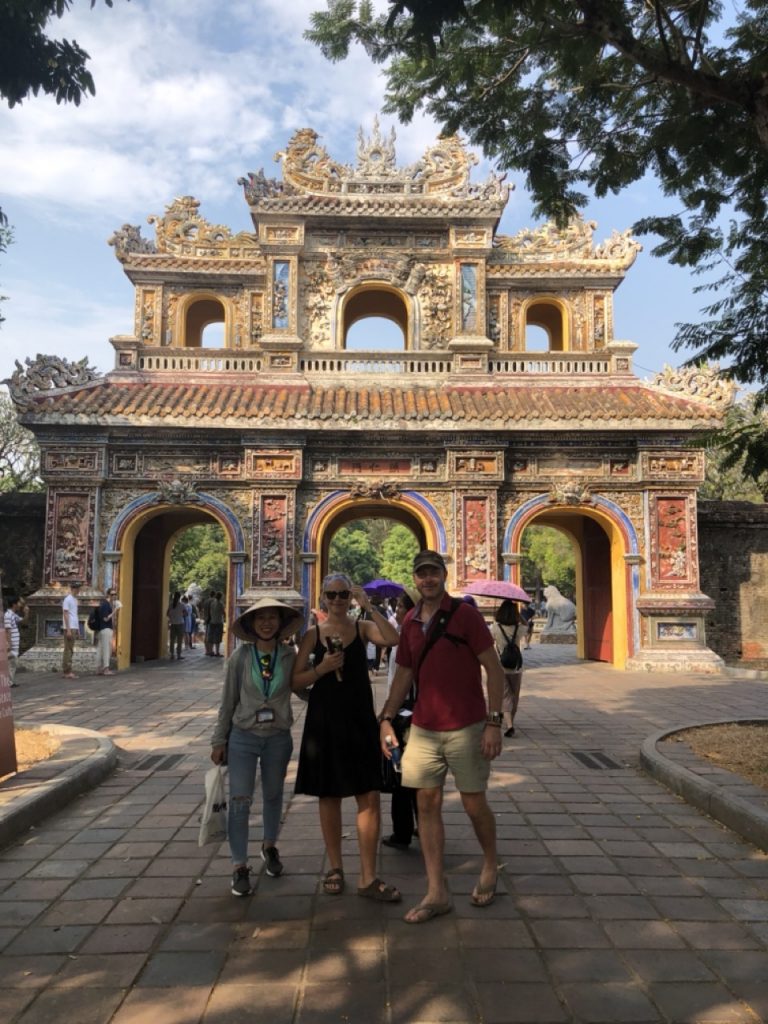
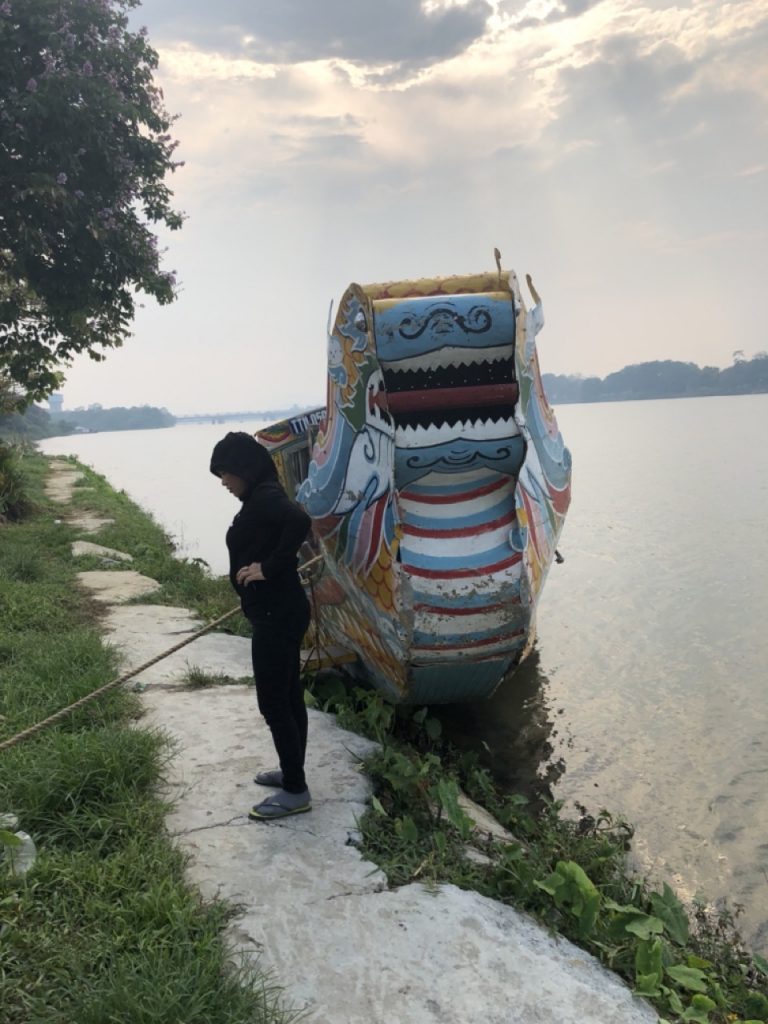
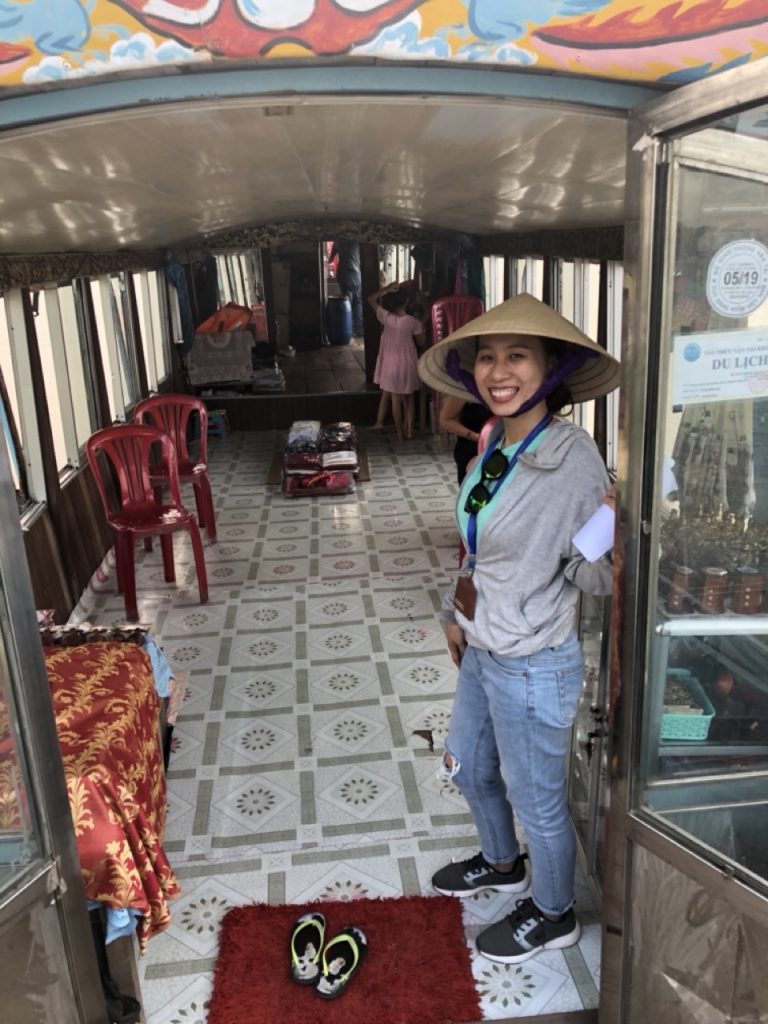

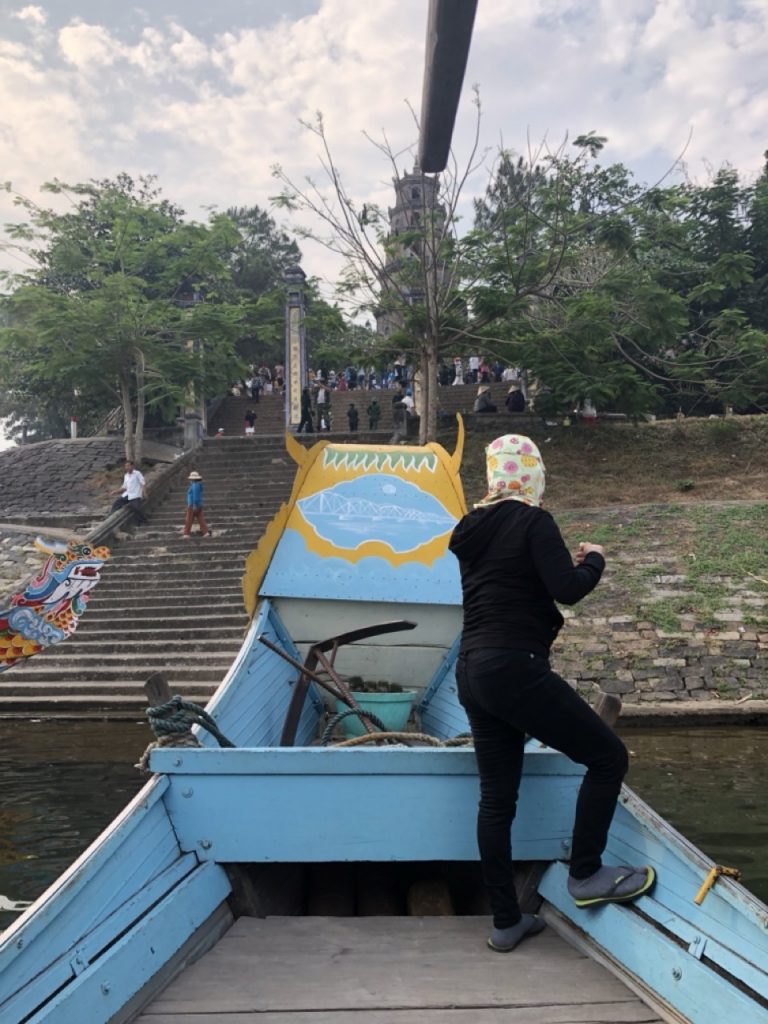
The Thiên Mụ Temple is a historic temple in the city of Huế in Vietnam. Its iconic seven-story Phước Duyên pagoda is regarded as the unofficial symbol of the city. It was originally founded in 1601 by Nguyen Hoang. Since the 1960s it has been a flashpoint of political demonstrations, with a notable moment coming in 1993, when a man arrived at the pagoda and, after leaving offerings, set himself alight chanting the word ‘Buddha’. It is an attractive site and we observed many people paying their respects alongside the Budhist Monks.
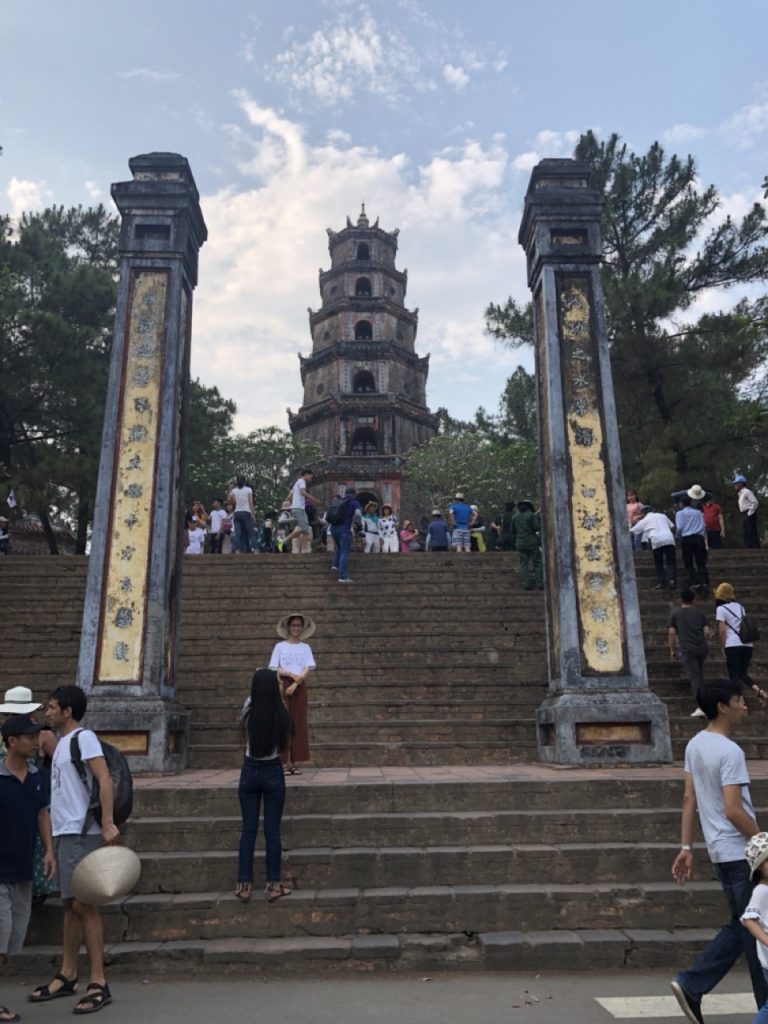
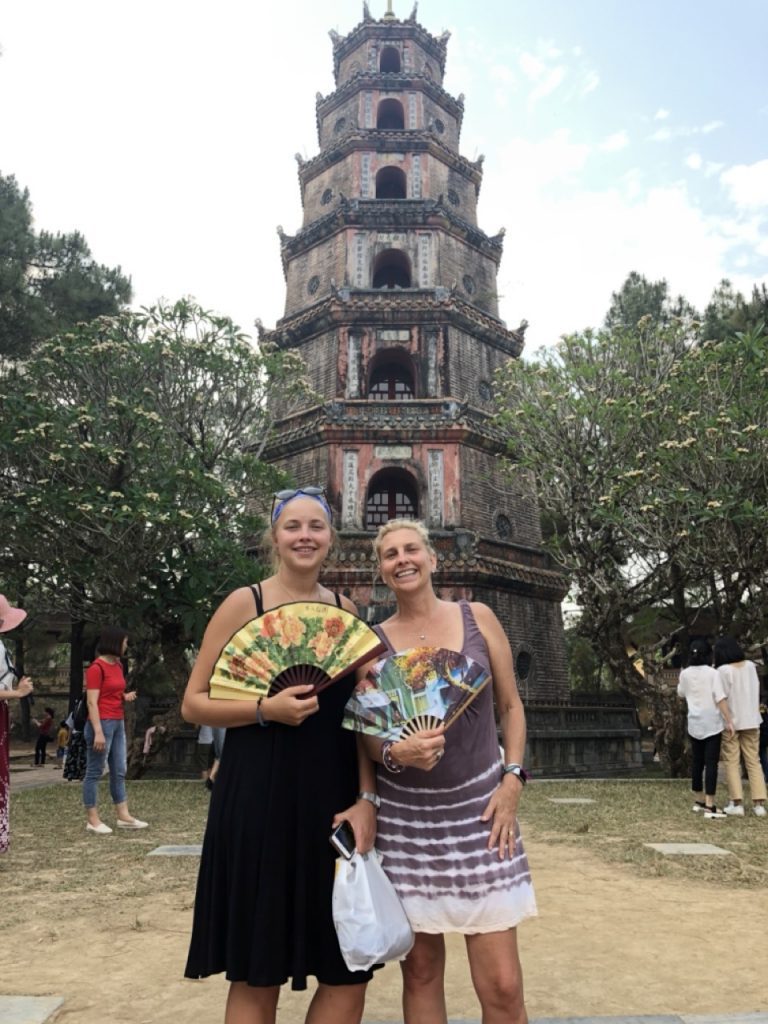
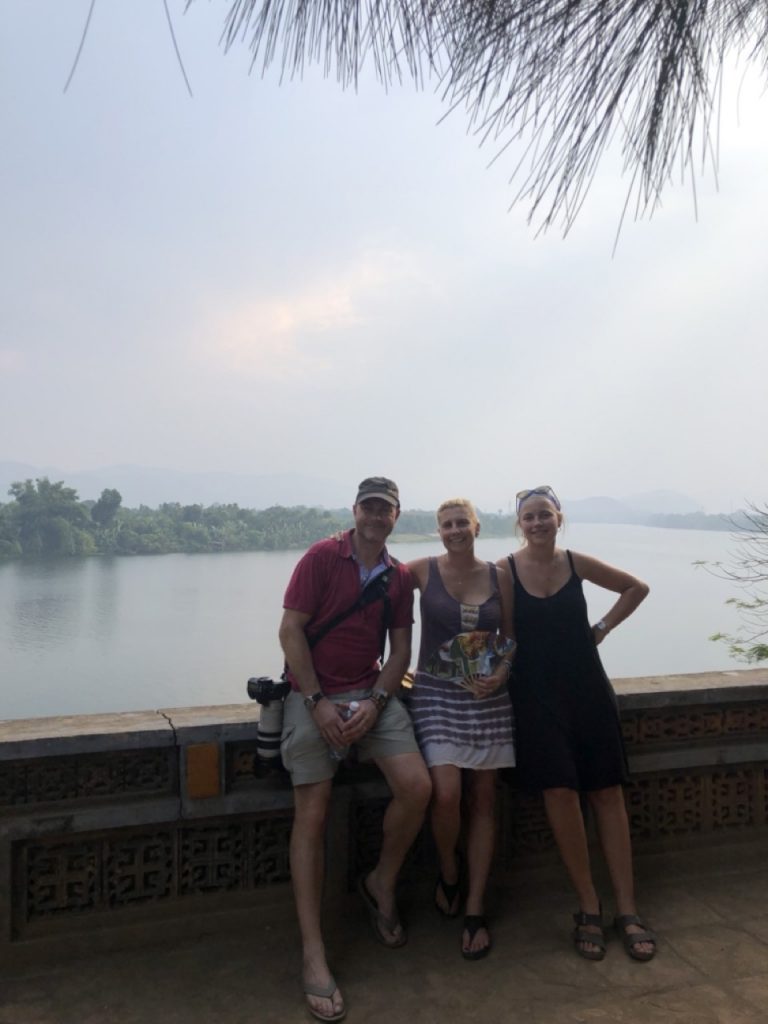
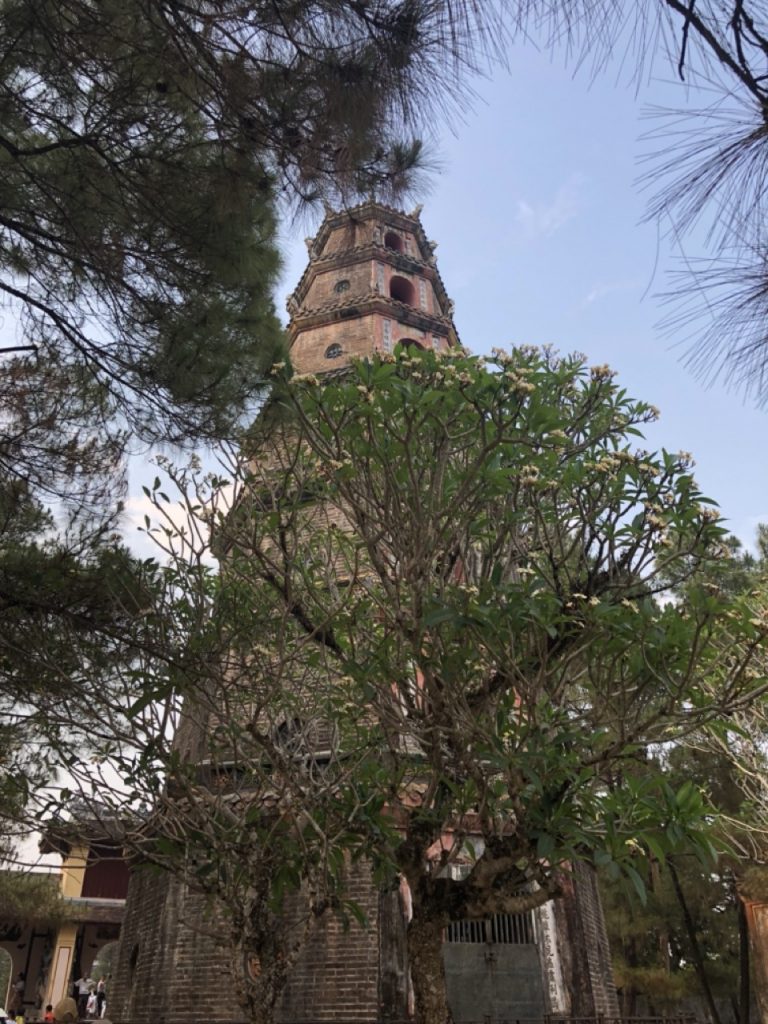
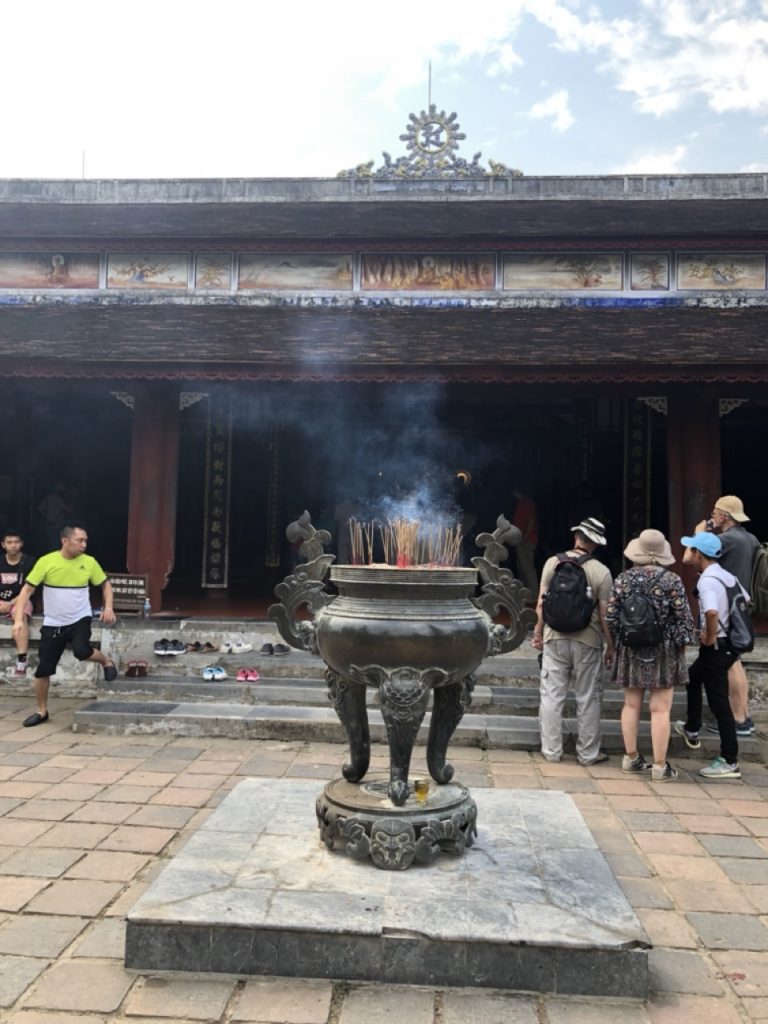
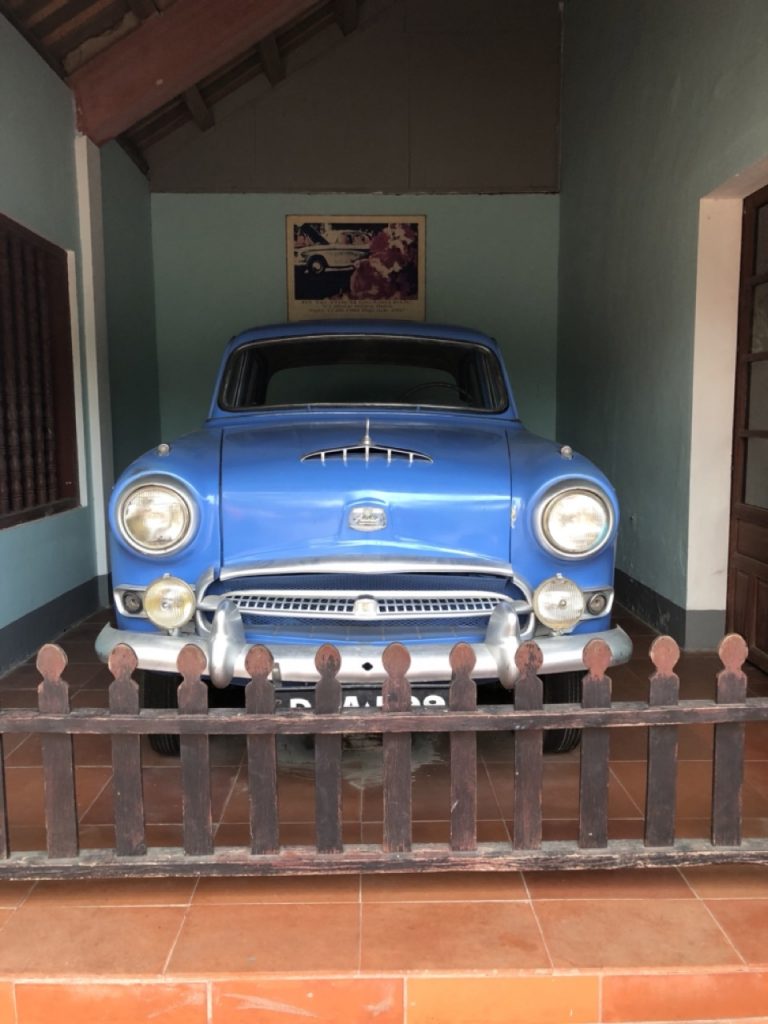
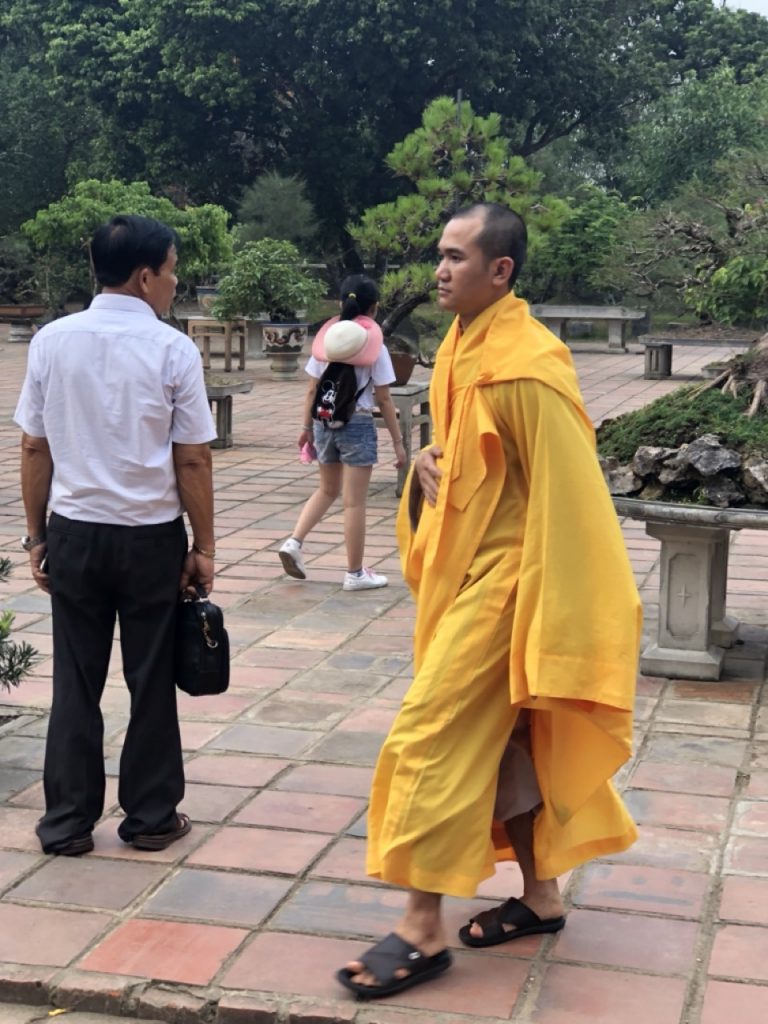
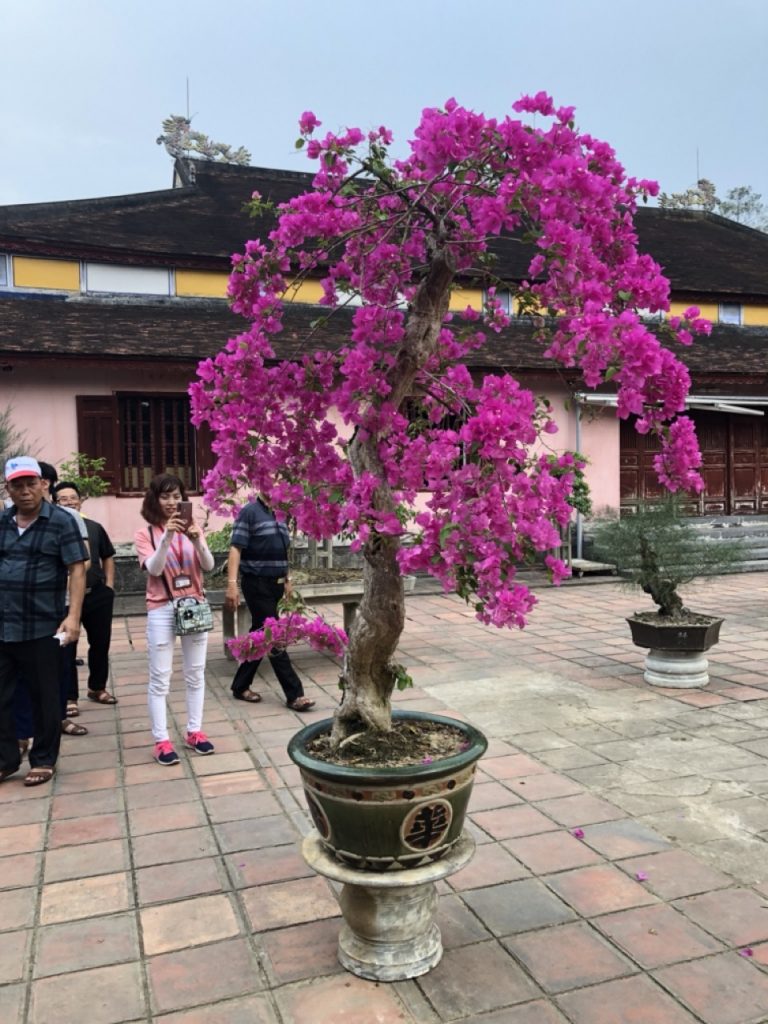
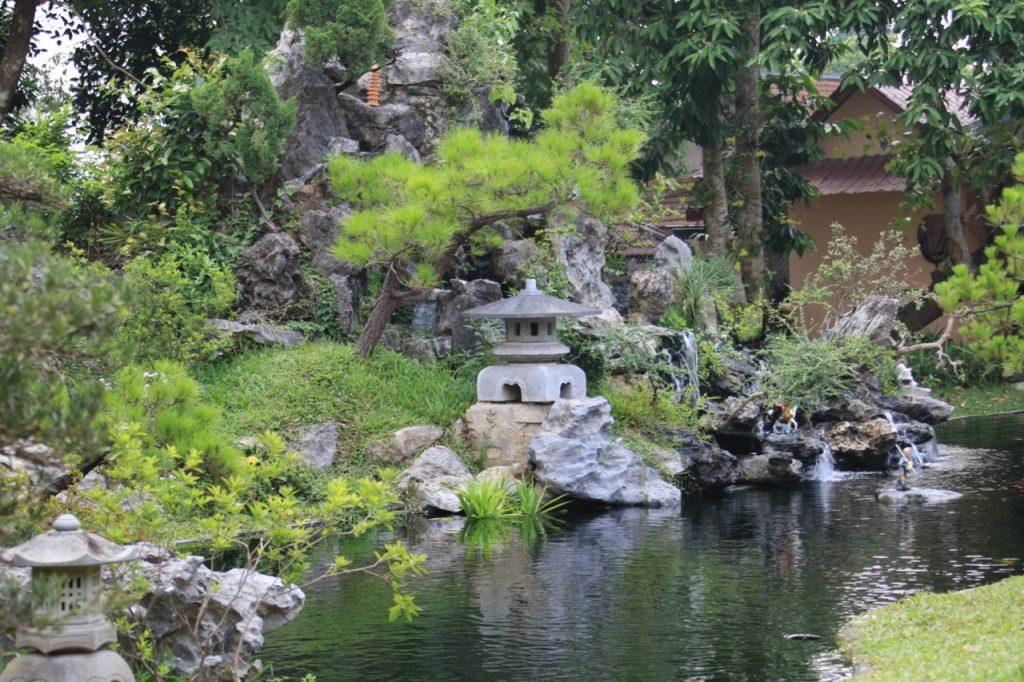
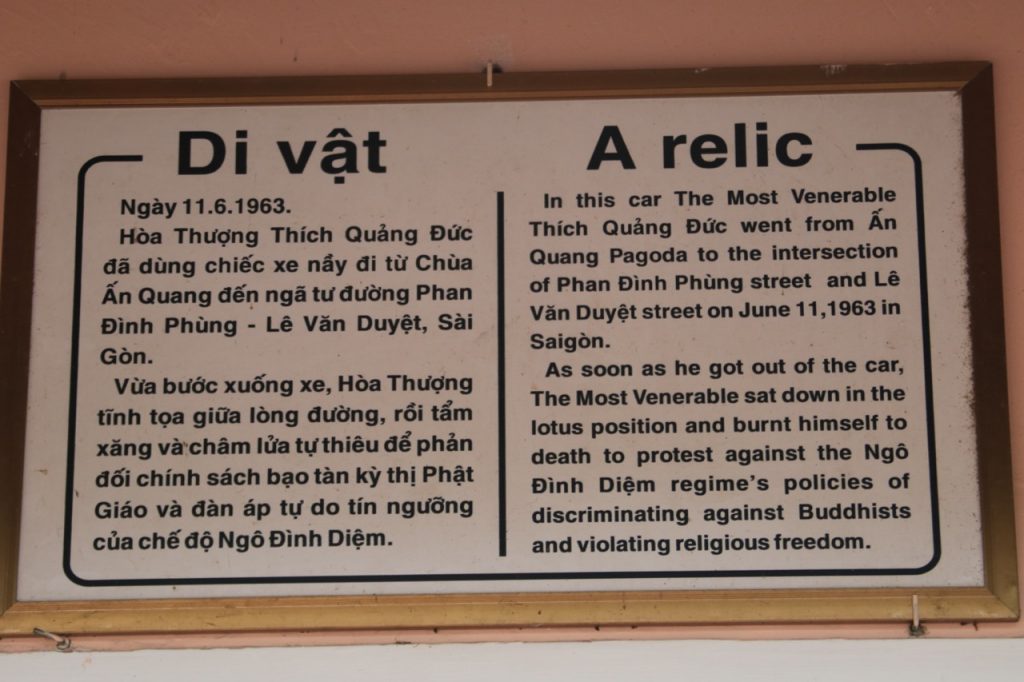
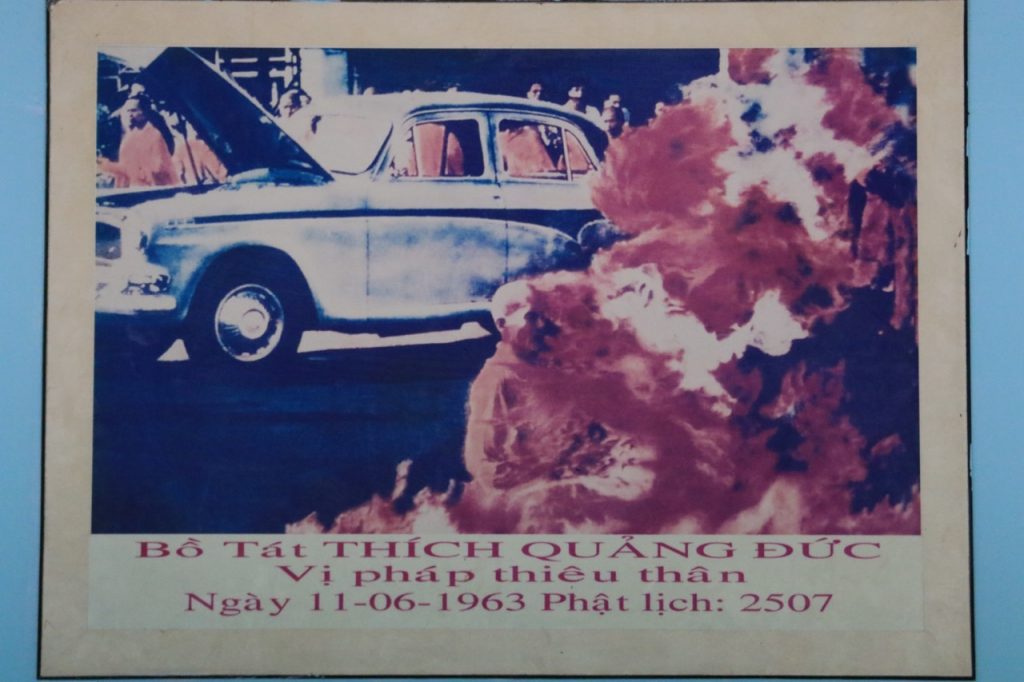
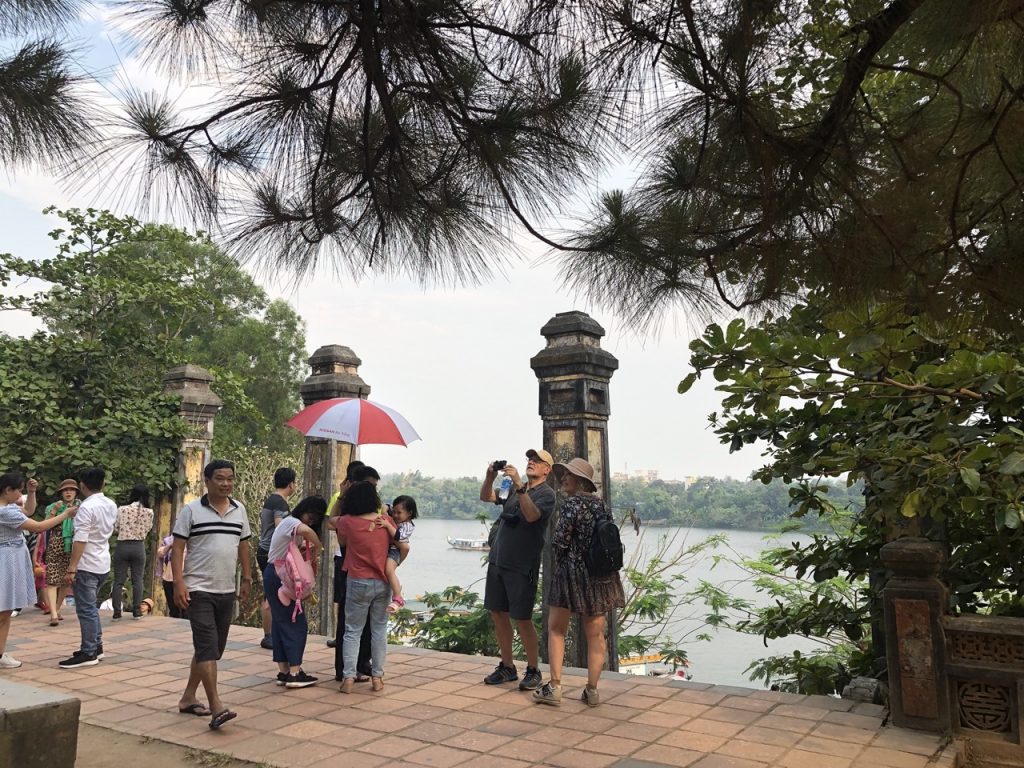
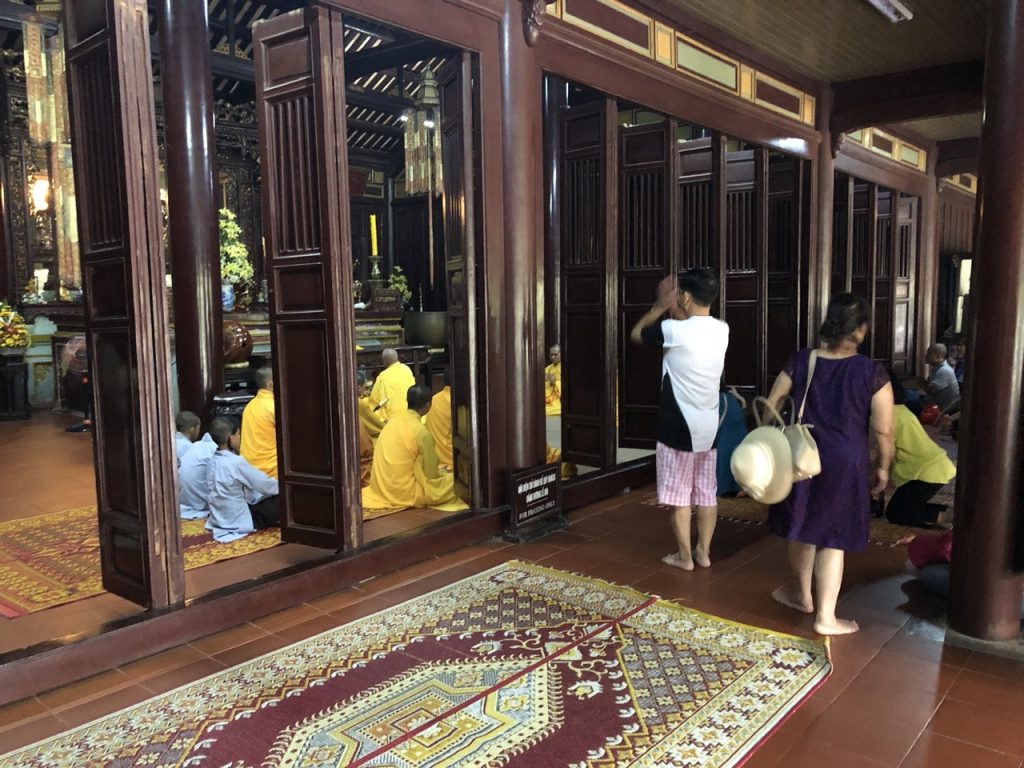
We were so hot and exhausted that we requested to be taken to our Hotel – which was the wonderful Pilgrimage Village. We checked in and headed straight for the pool for a swim and Pina Coladas – bliss!
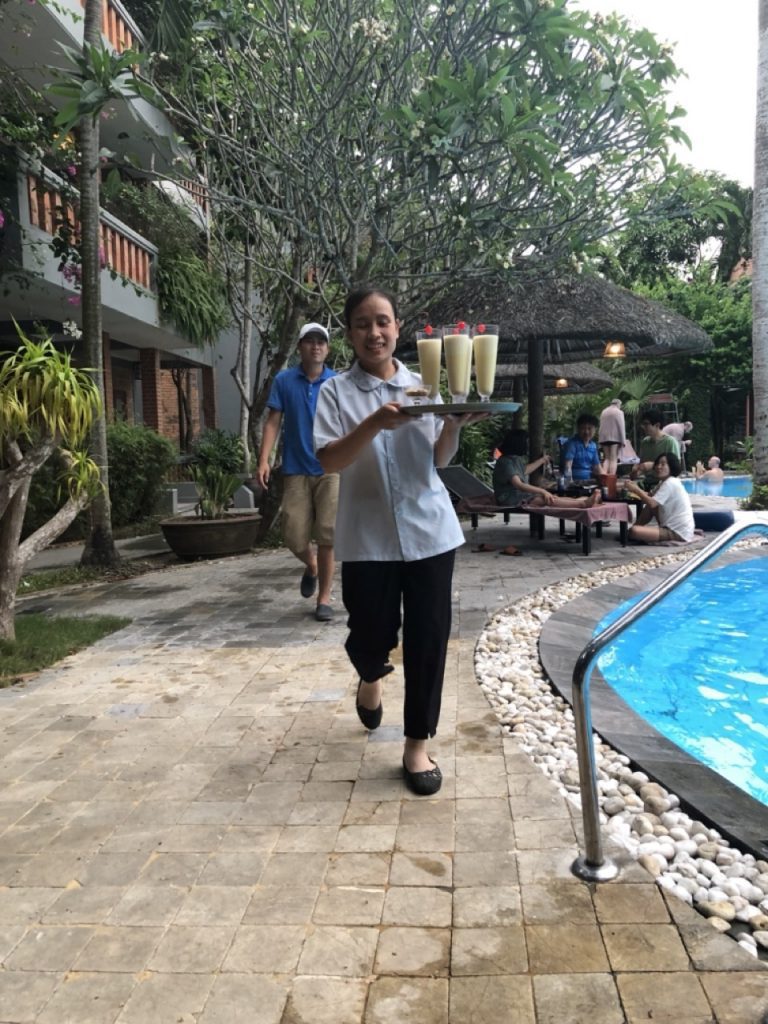
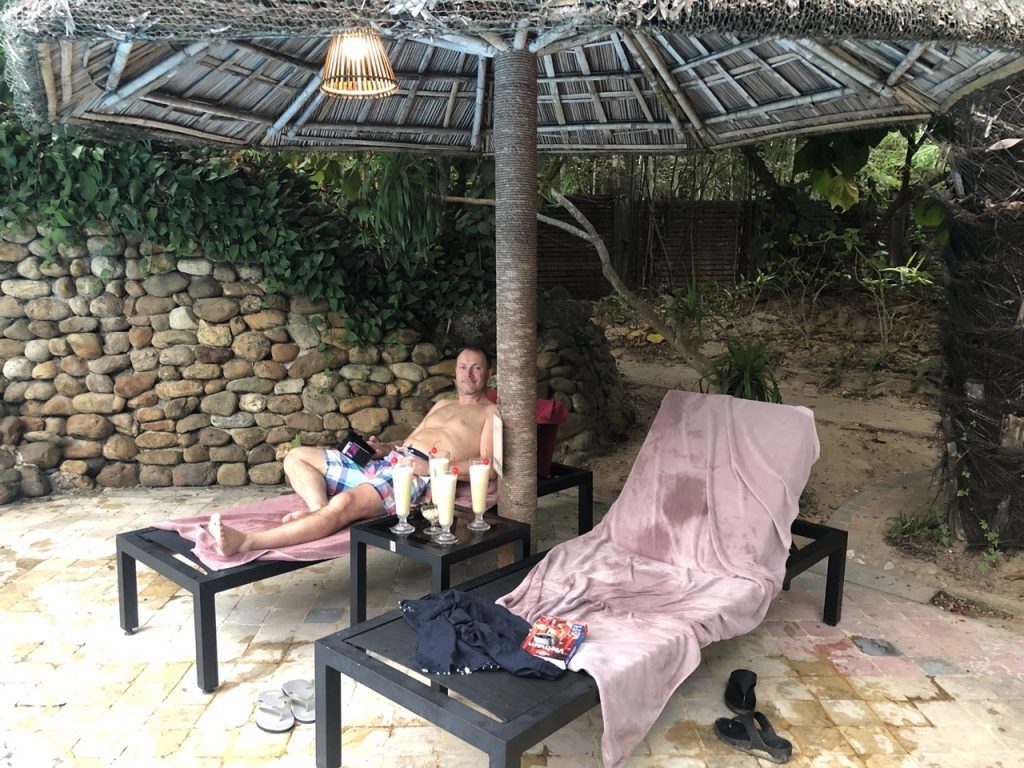
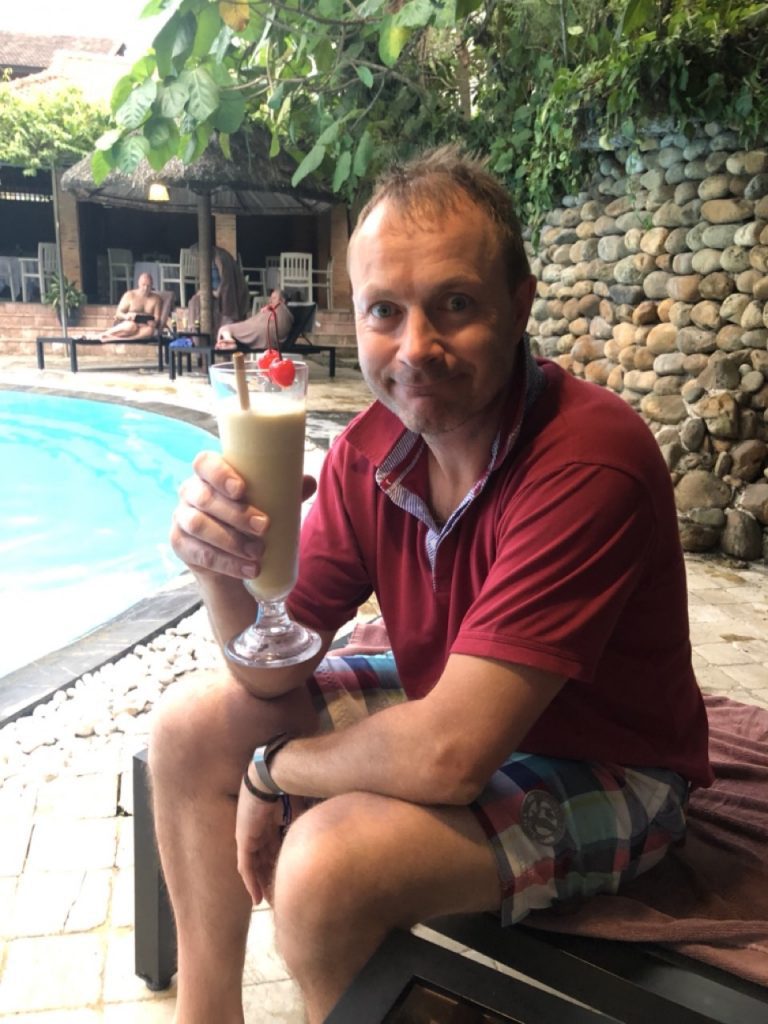
After a little nap we took a taxi into town – WOW! We were amazed – it was complete chaos and there were people everywhere! Quiet Hue certainly comes alive during Festival time! We headed to the famed DMZ Bar as recommended – it was the first Western Bar in Hue. It has a relief of the DMZ on the roof upside down. The western food wasn’t great but the Vietnamese food was good. Had a lovely waiter.
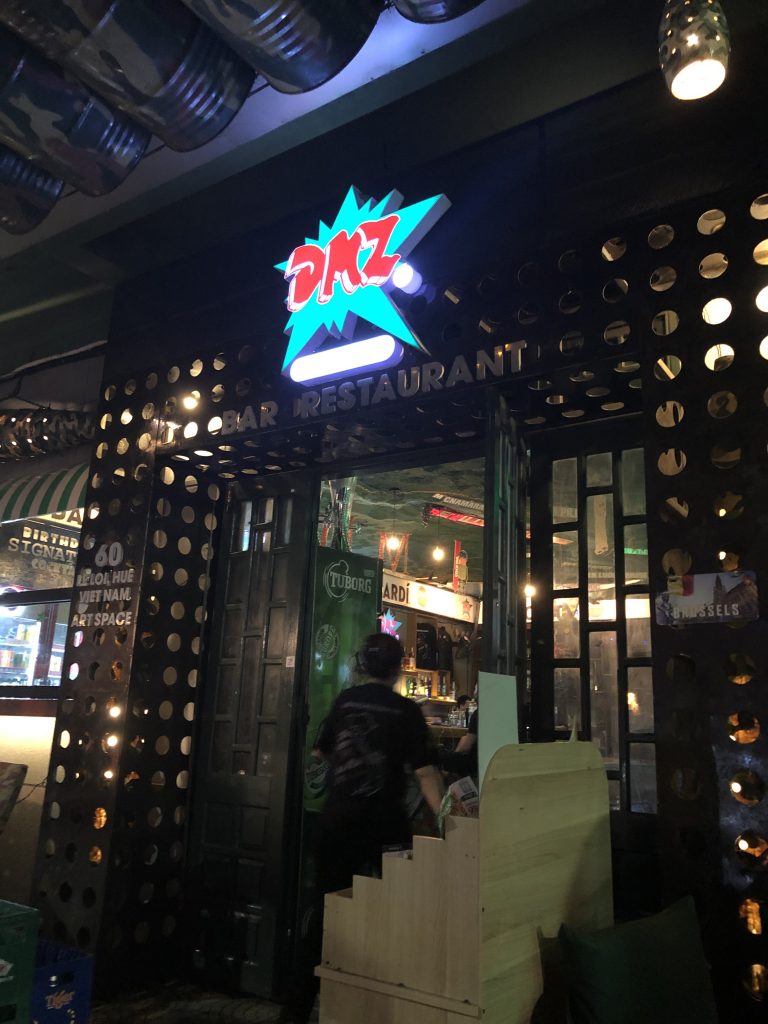
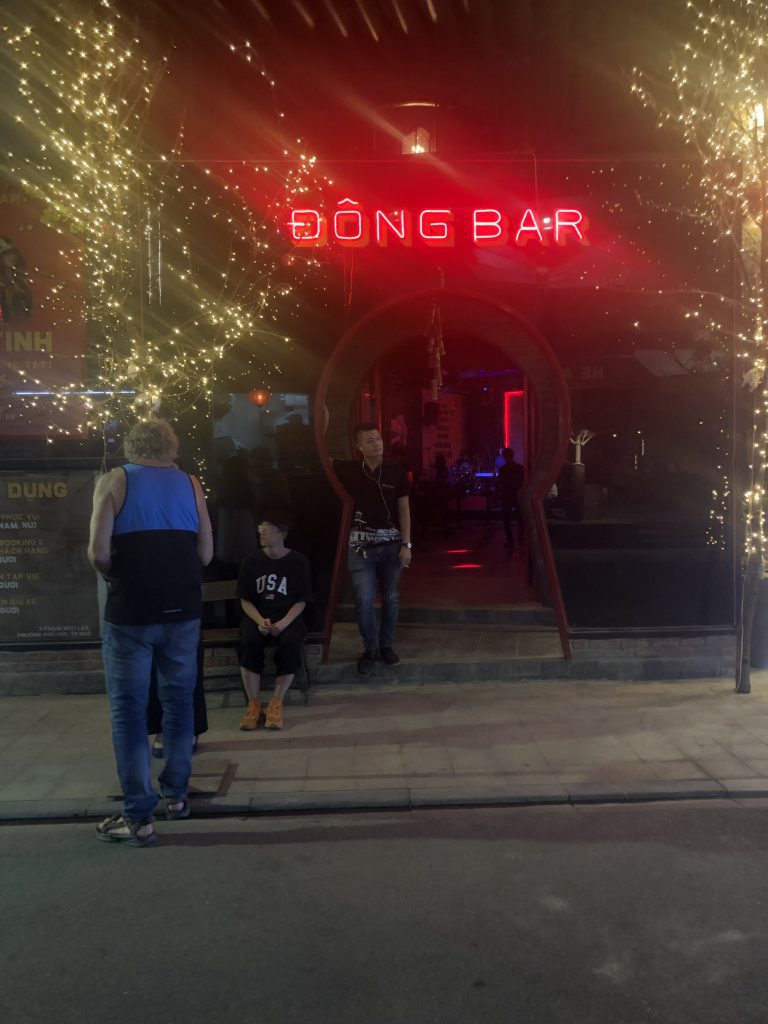
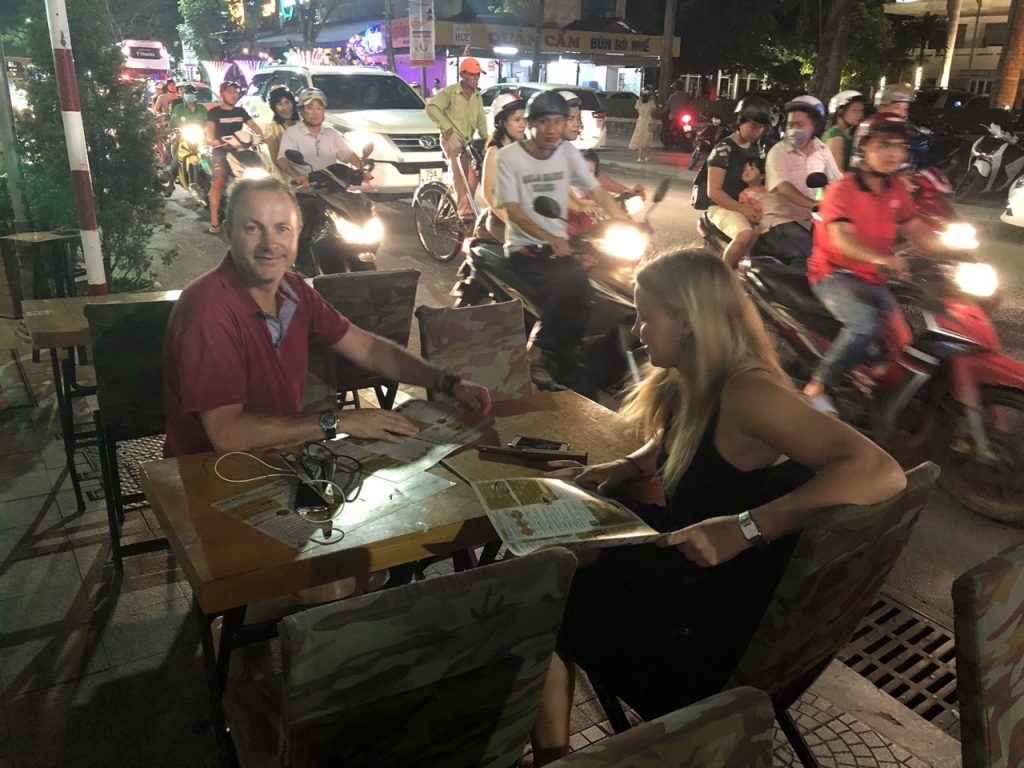
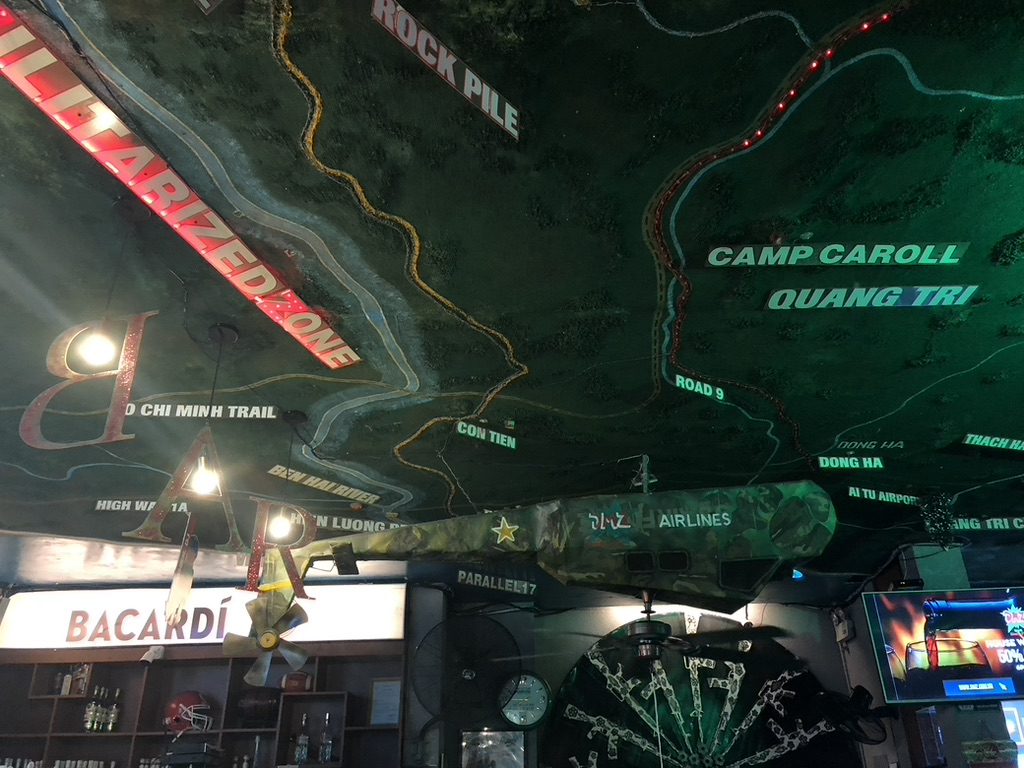
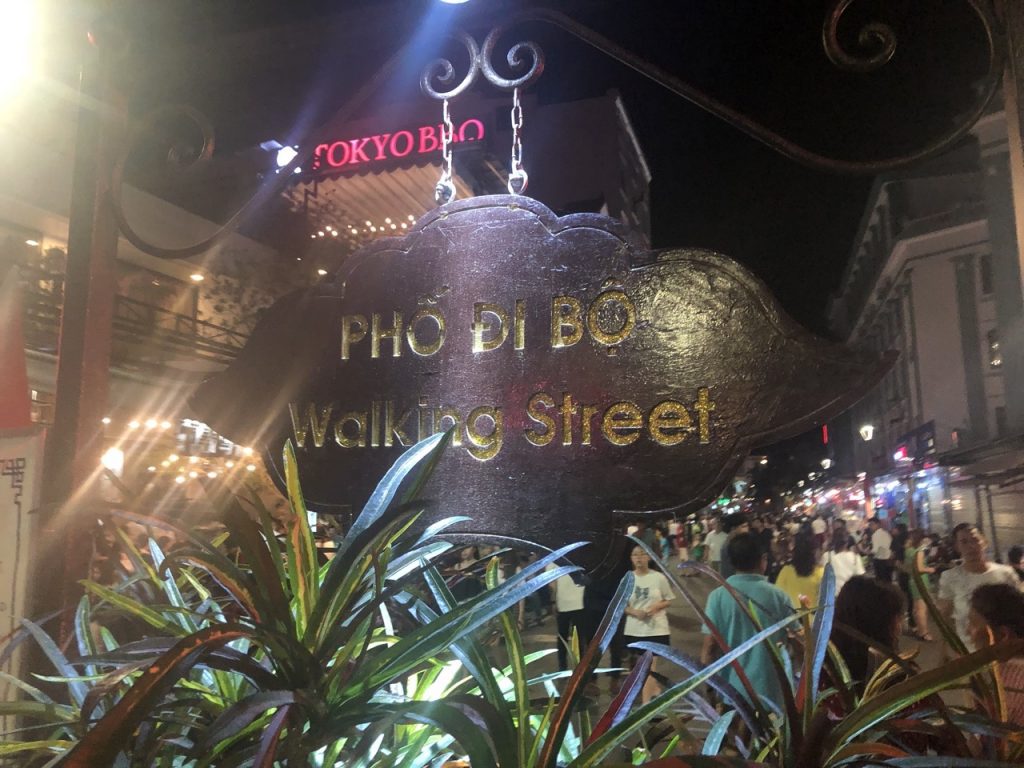
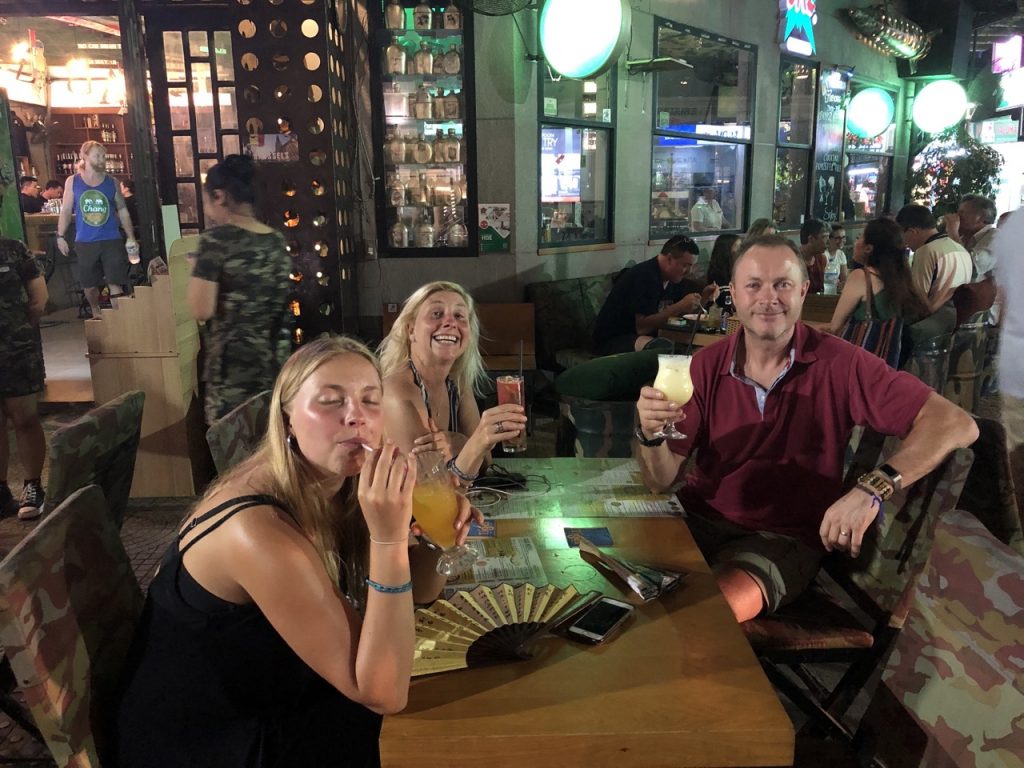
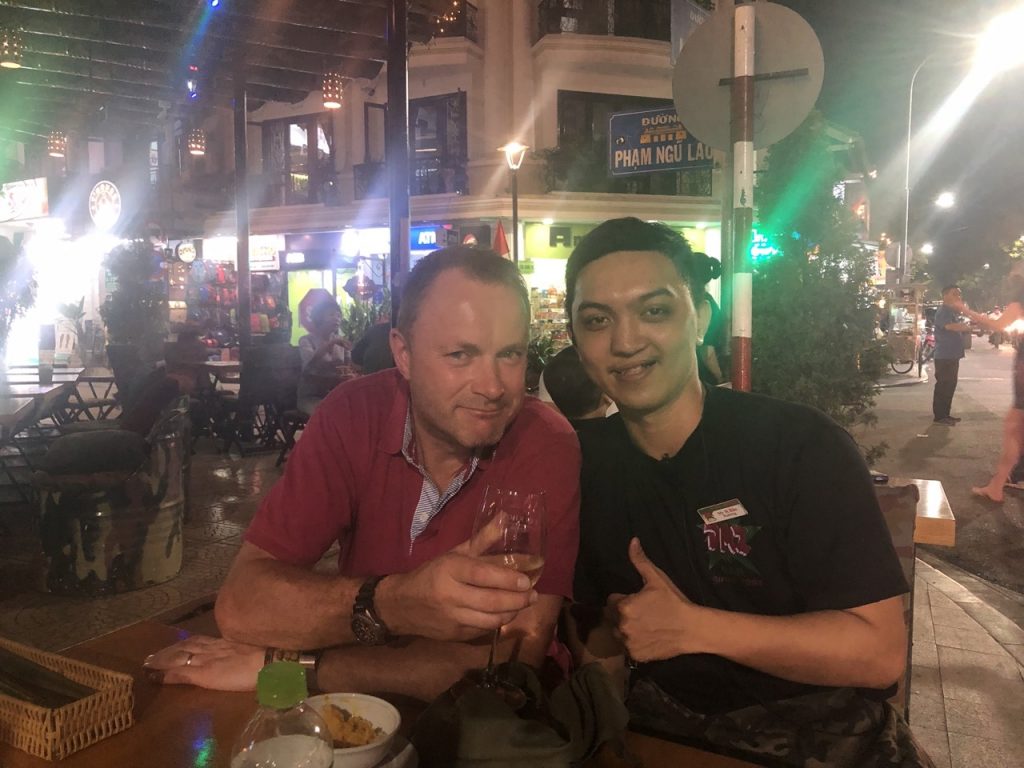
Headed into the festival – it was a riot – really loud music everywhere and lots of crazy excited people! An electric atmosphere.
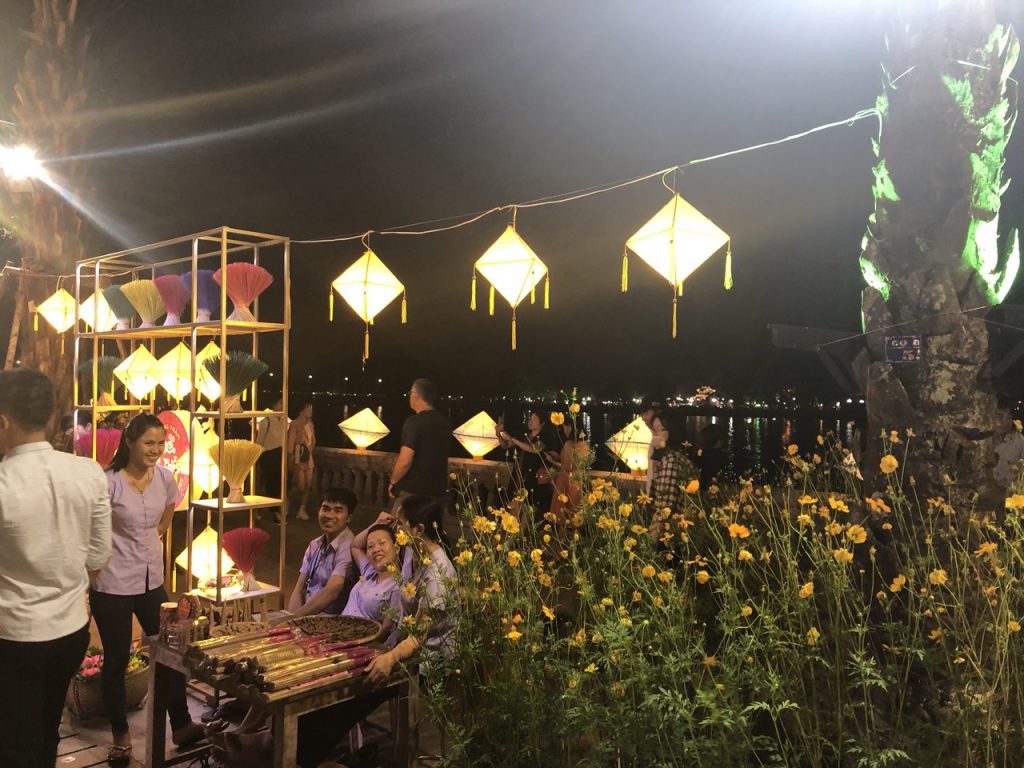
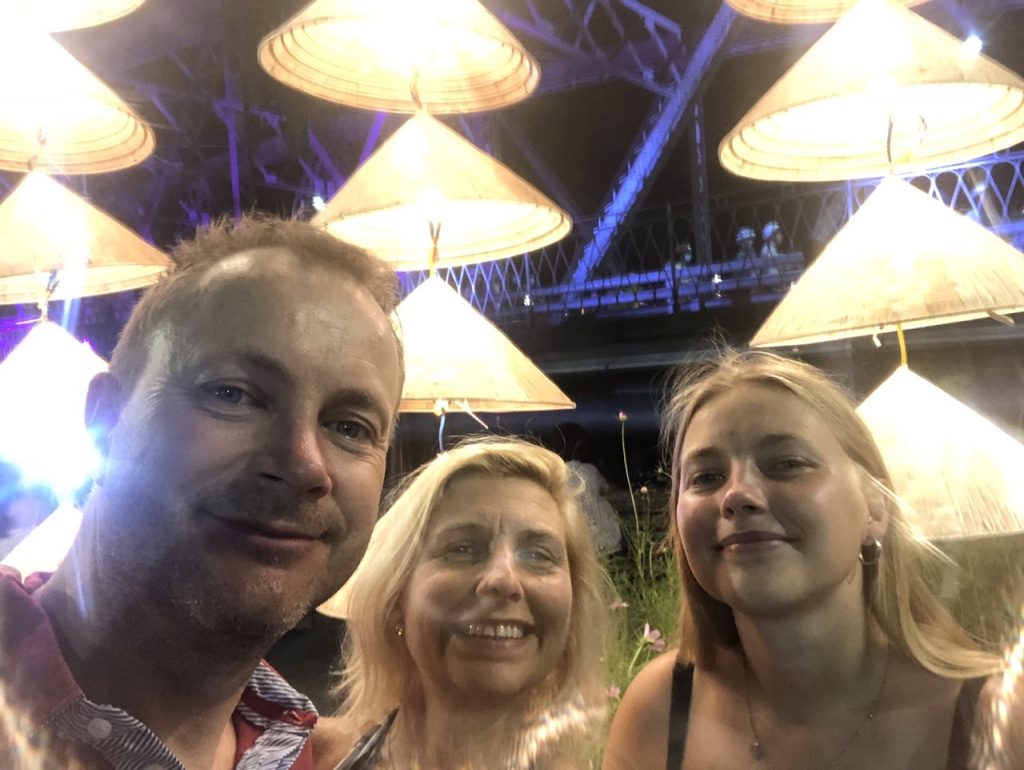
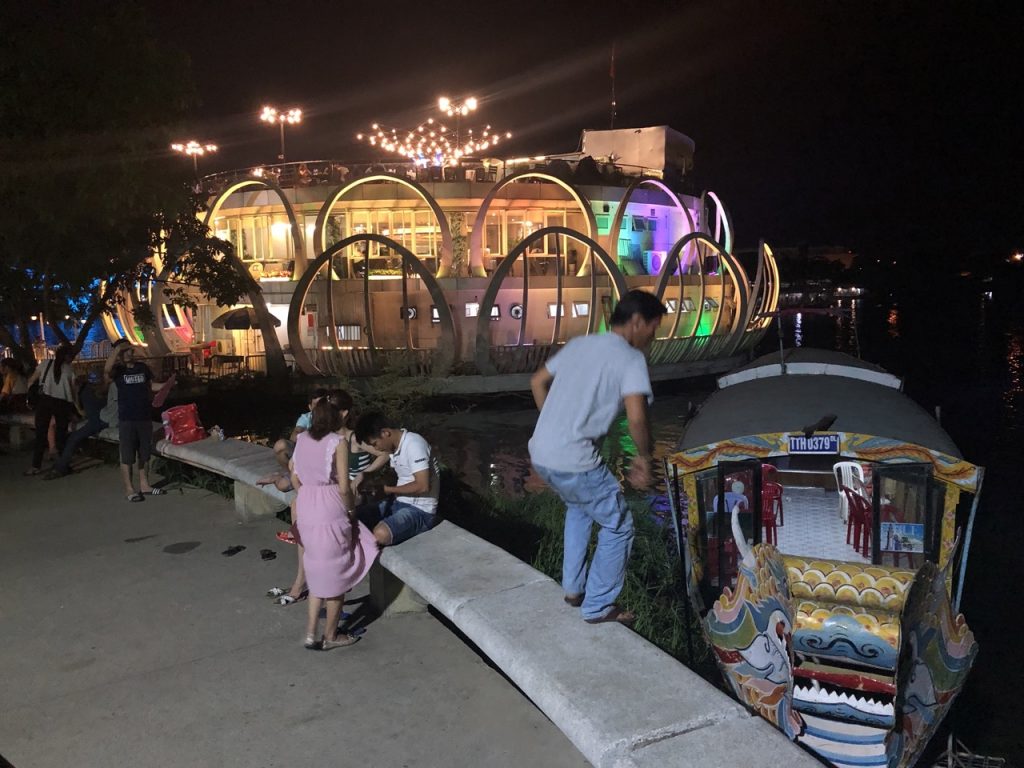
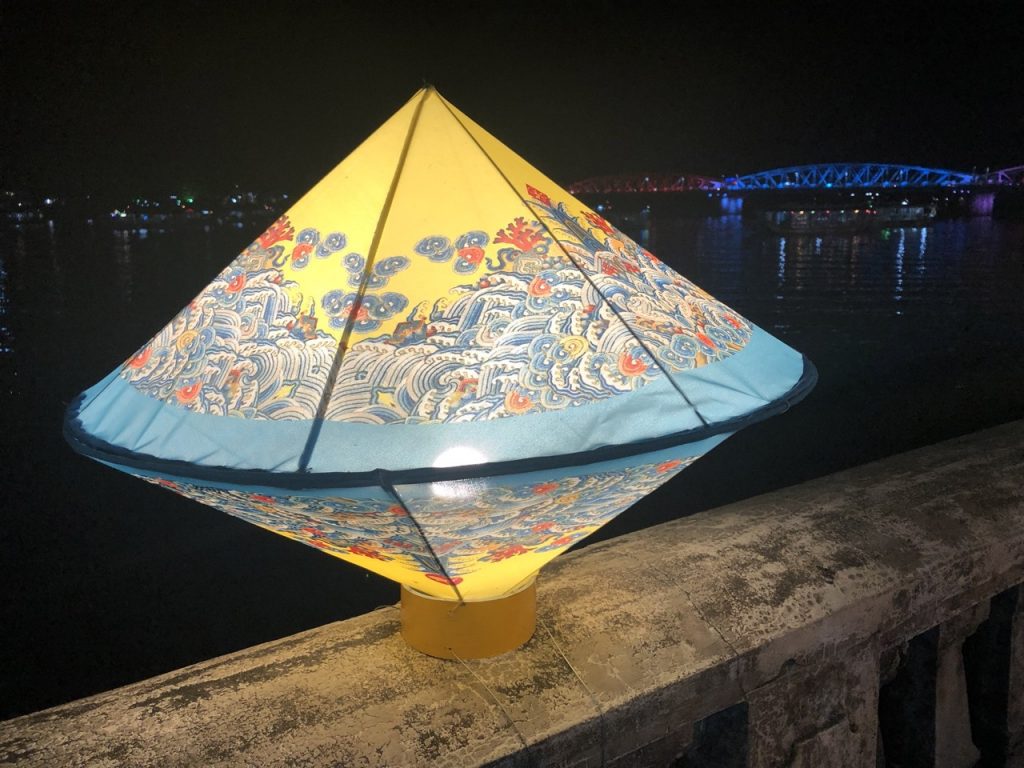
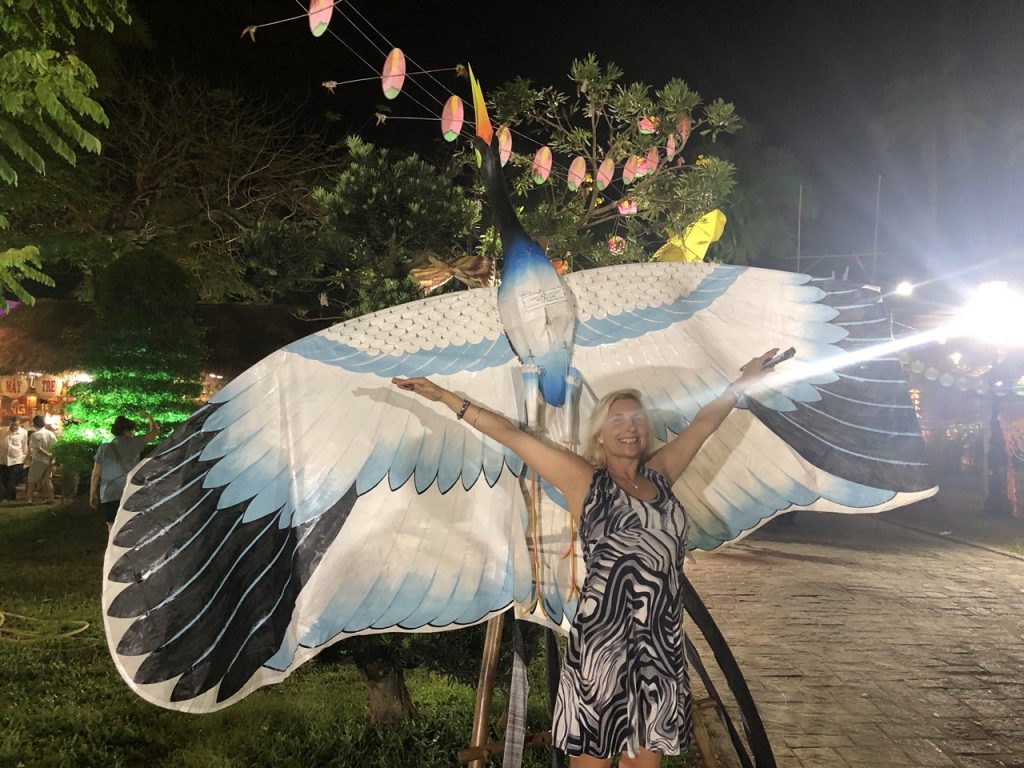
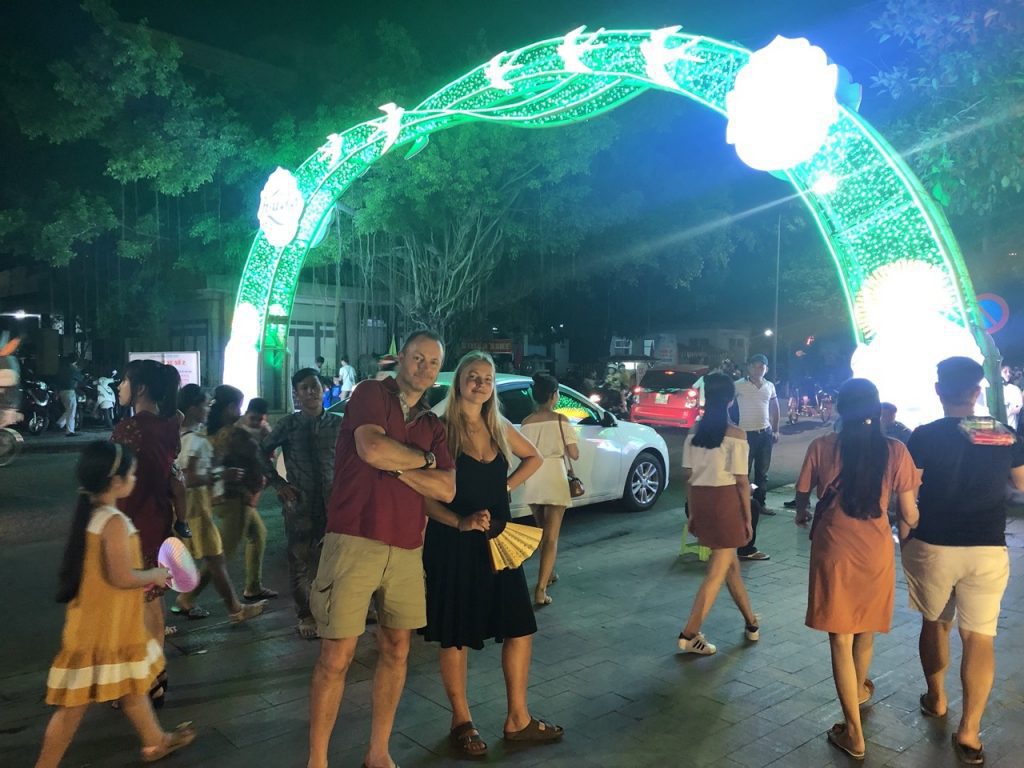
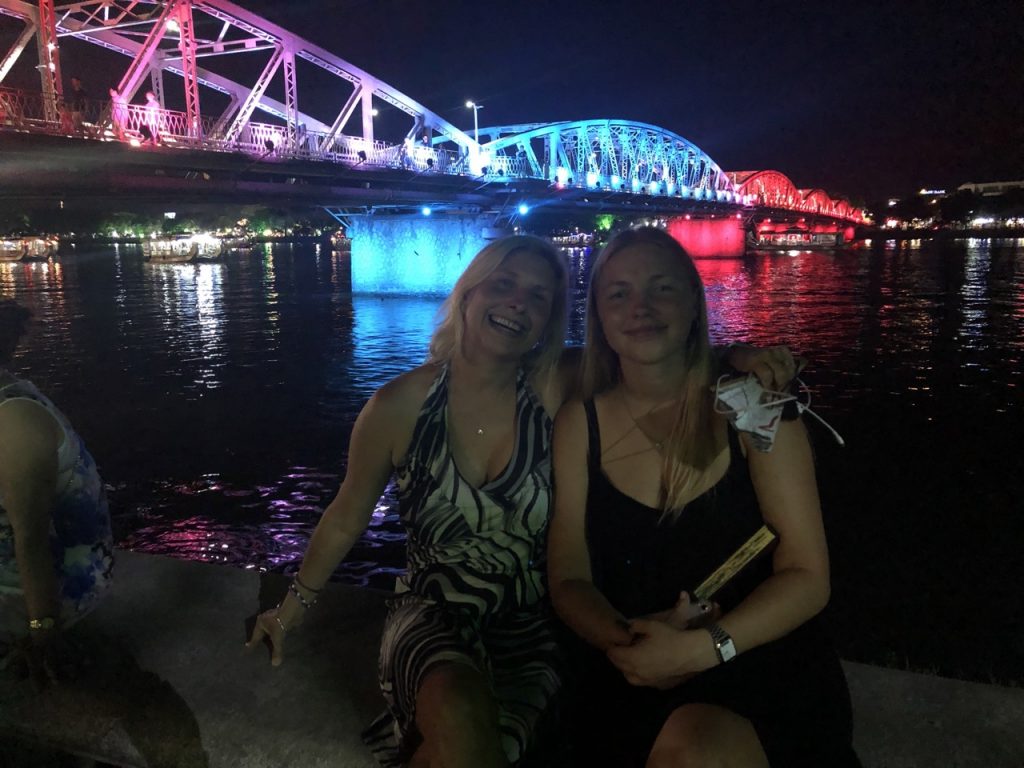
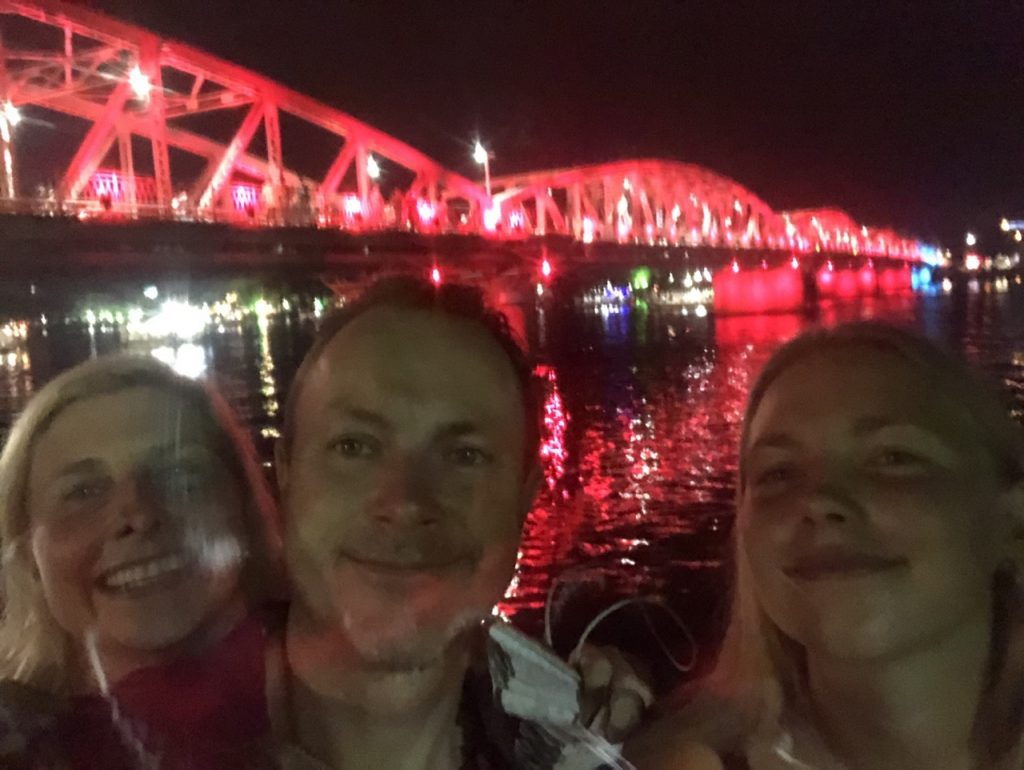
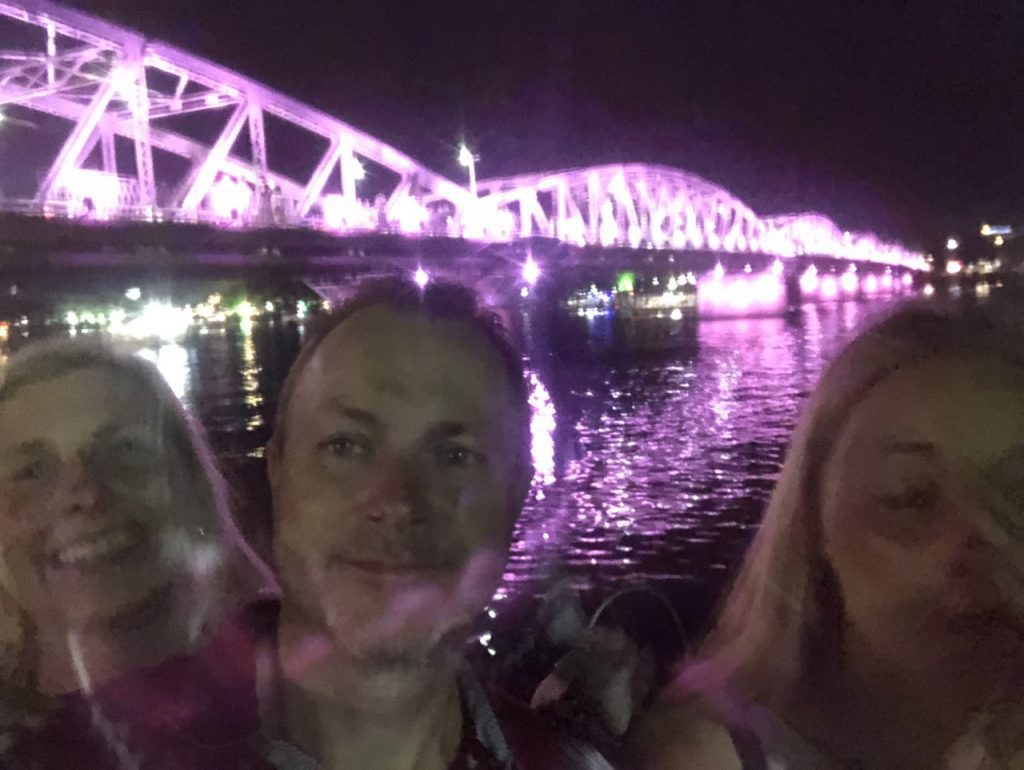
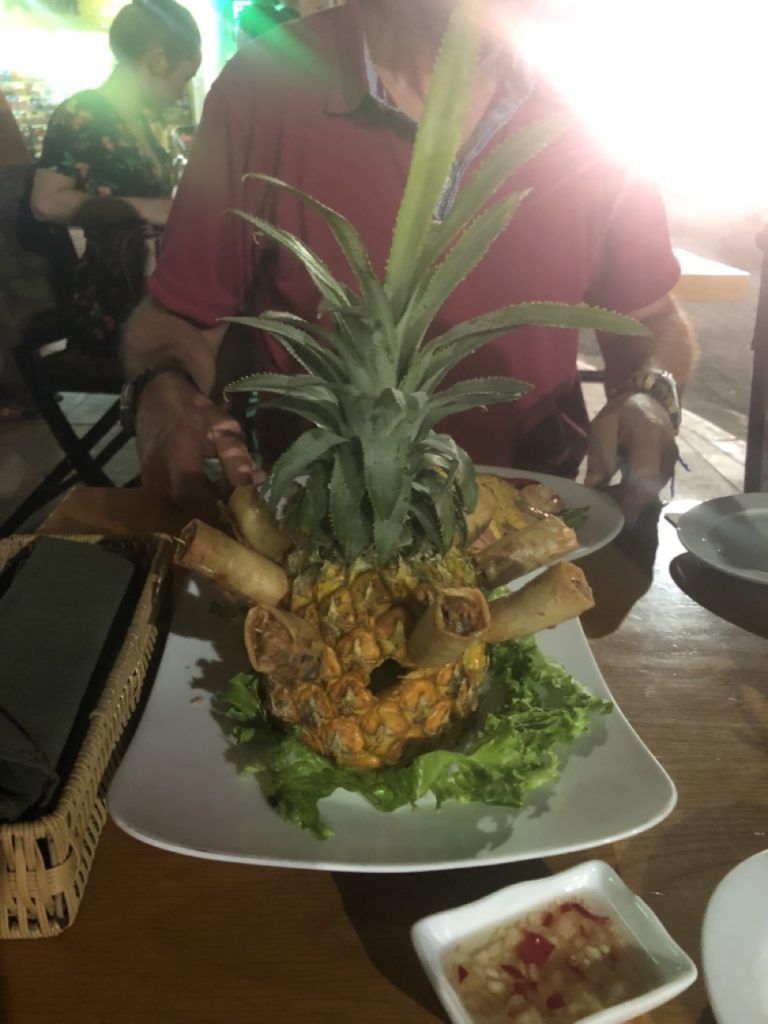
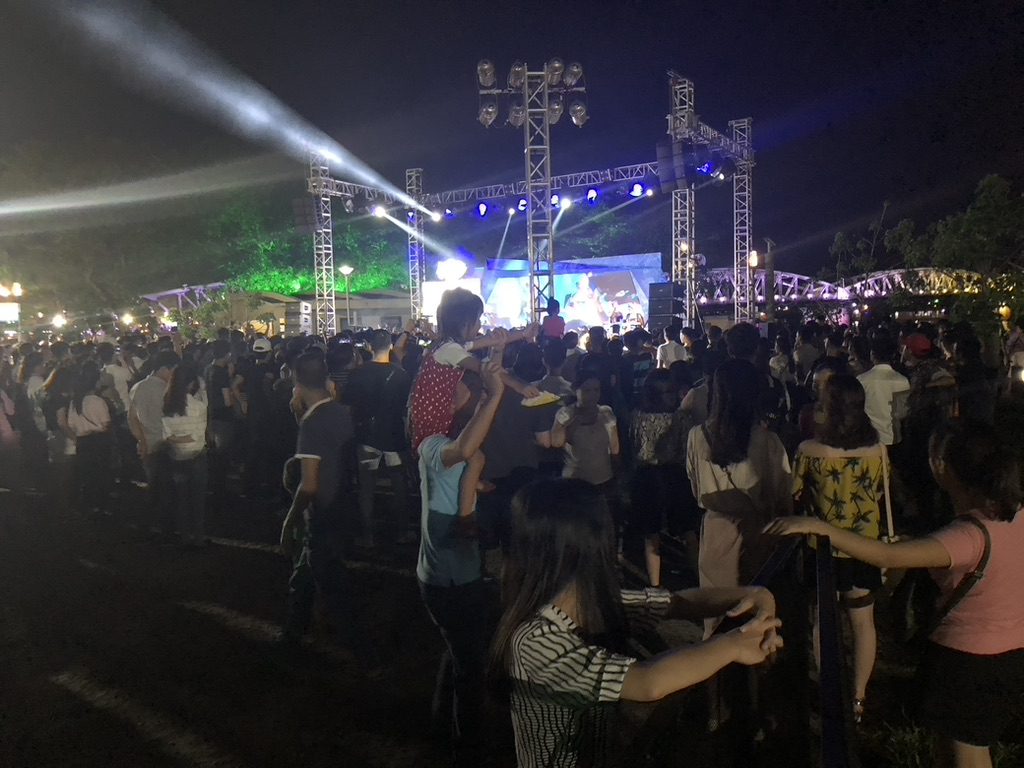
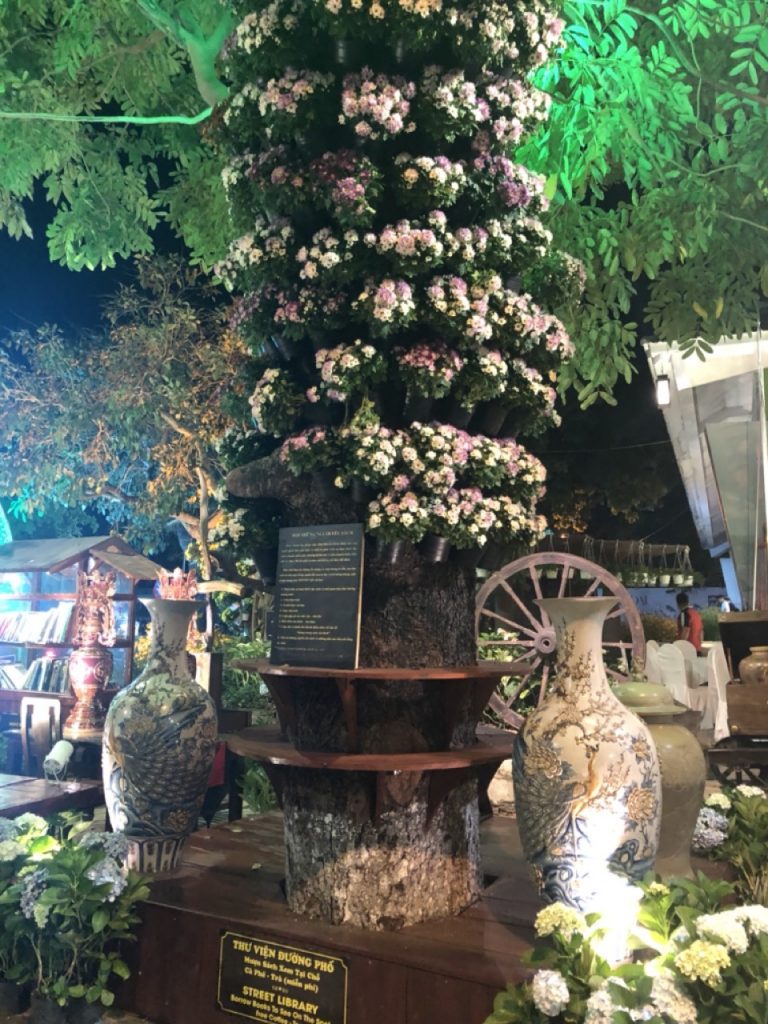
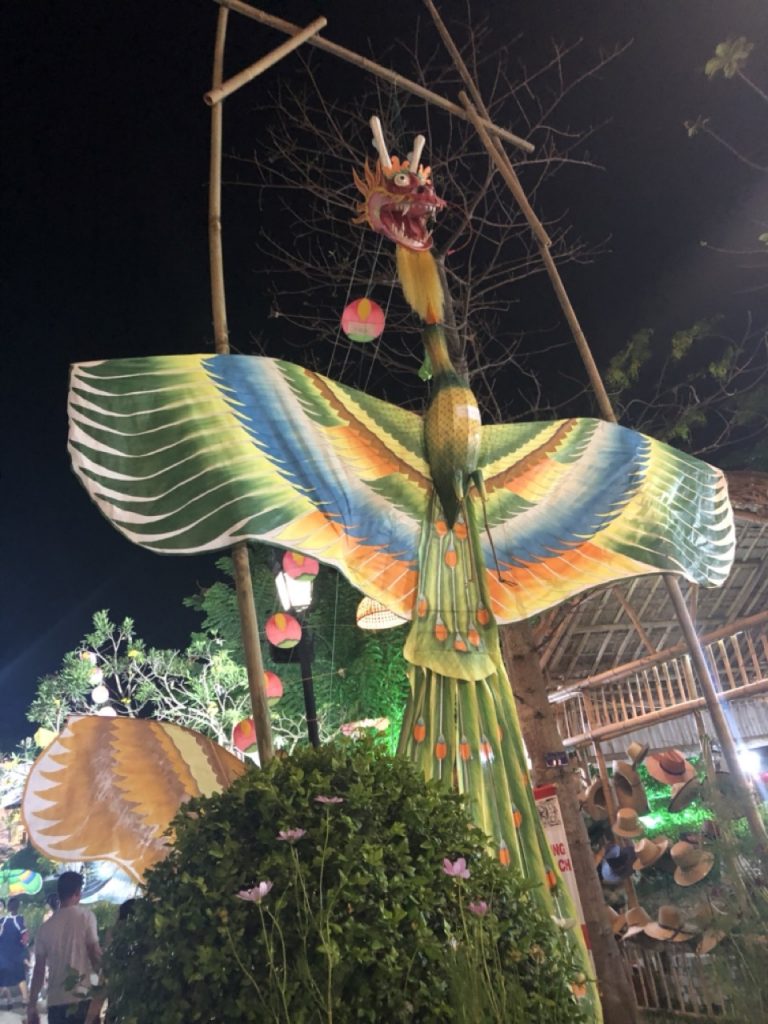
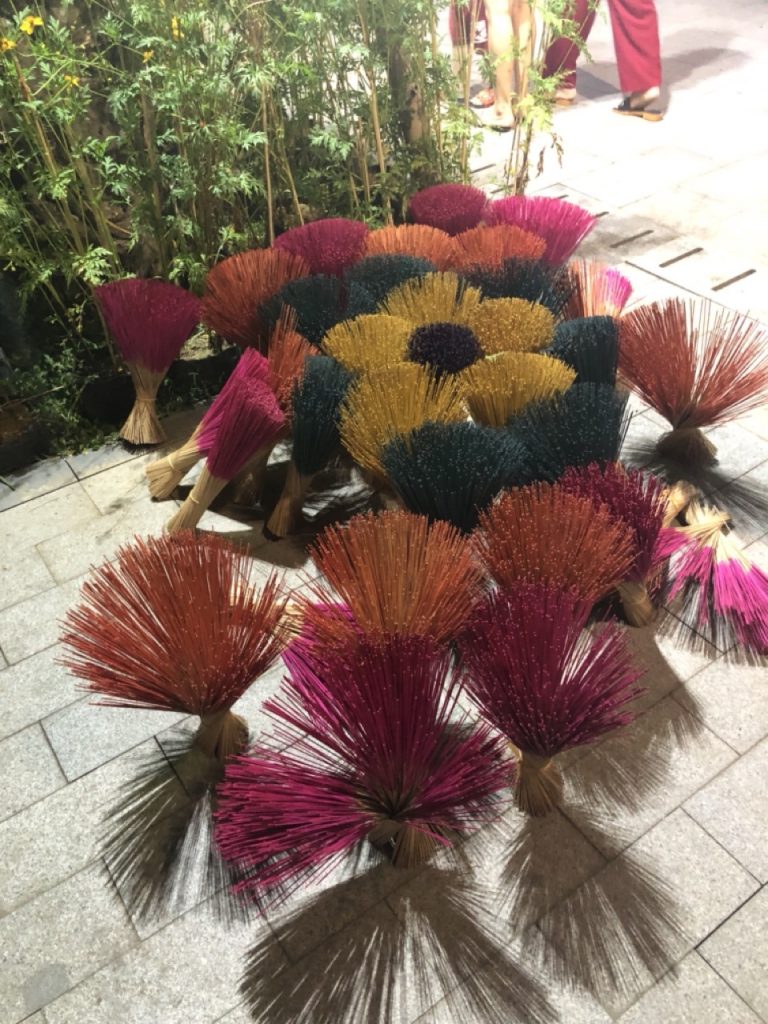
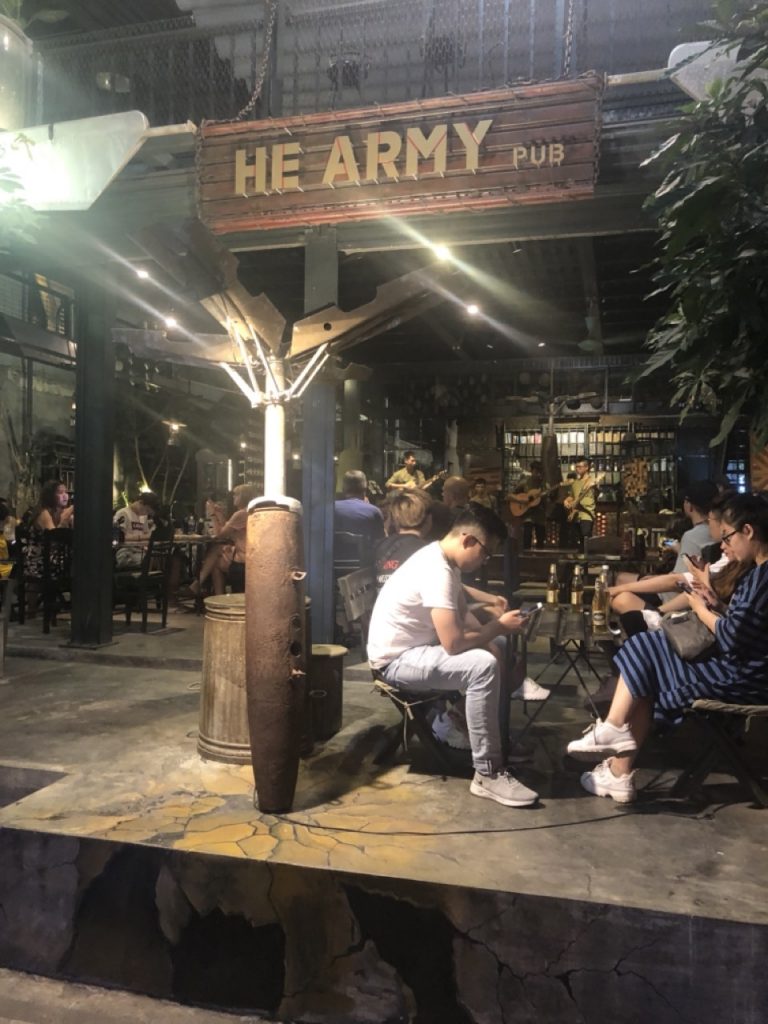
When we got back there were mating frogs next to a statue of themselves! 🙂
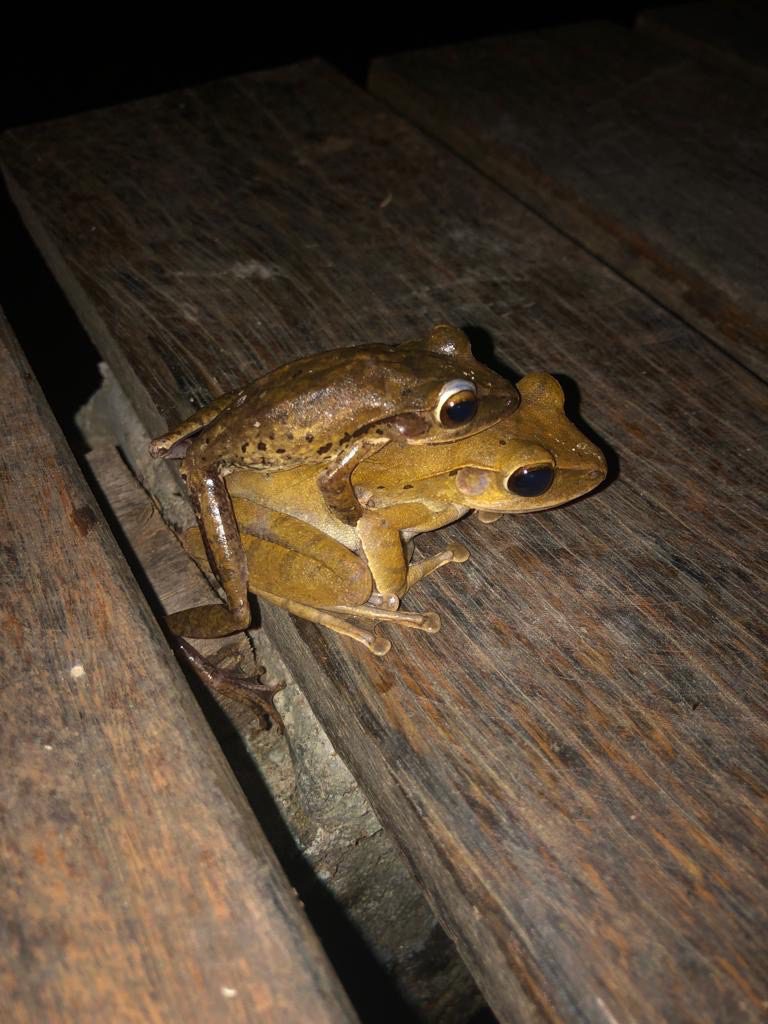
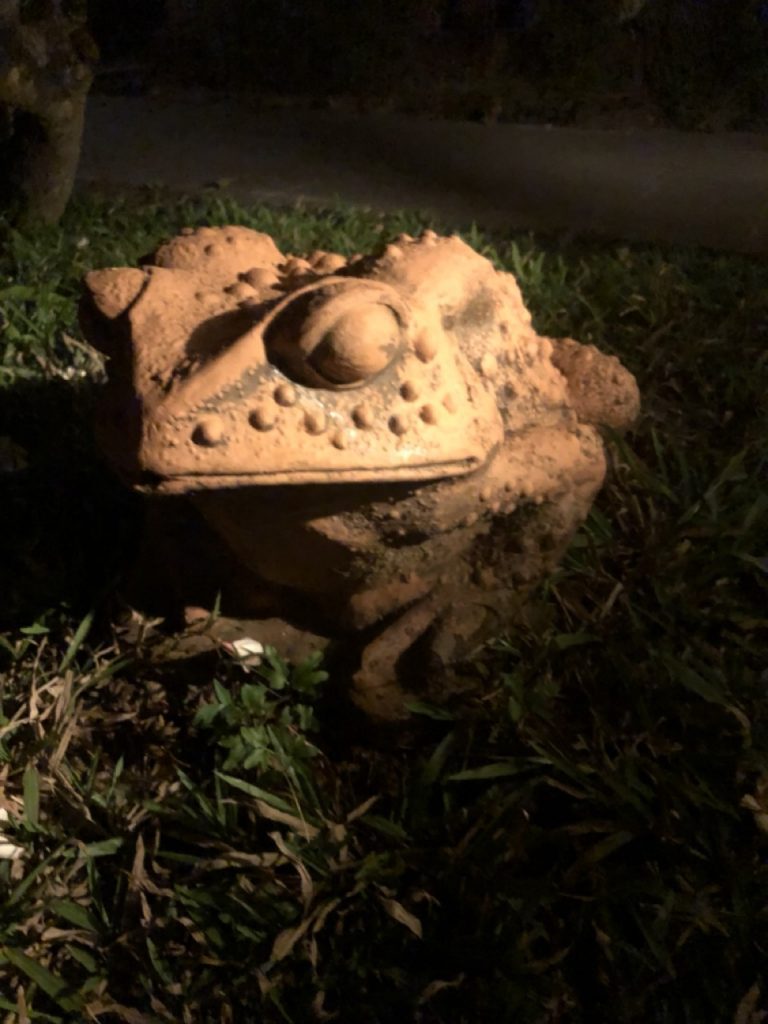
Go to: Vietnam
Go to: Danang via Hai Van Pass
Go Back to: Ha Giang

